#Color Pie Philosophy
Explore tagged Tumblr posts
Text
The Flavor of MTG’s Color Pie(Part 1/4(Reuploaded))
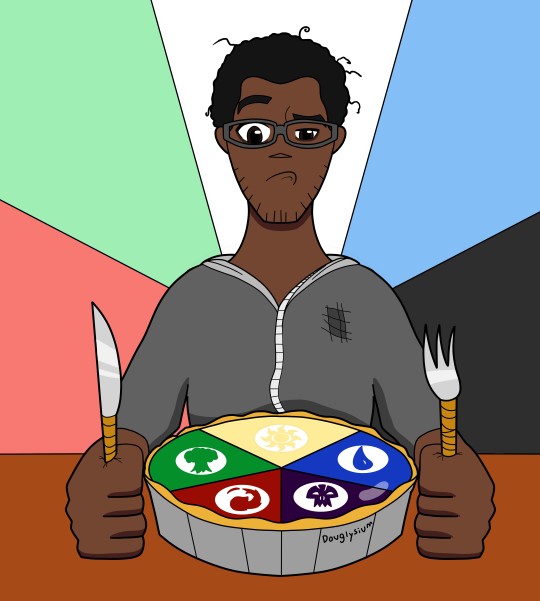
Introduction
So, I have since finished my little miniseries on the tribes of Innistrad and how their color philosophies express them in their culture, story, and mechanics, and I really enjoyed talking about it so I figured I would write some stuff on the factions as we see them on different planes and how the color philosophies manifest within them.
I have also realized that this article is way longer than I thought it was going to be so I’m going to make a different version that splits each section into parts.
Before I move on if you want to see my previous(much shorter) MTG articles covering the tribes of Innistrad then you can view them here- https://douglysium.tumblr.com/tagged/TheTasteOfMagicTheGathering. If there’s a specific tribe you want to read about then you can view them here.
Werewolves- https://douglysium.tumblr.com/post/662623213059276800/the-taste-of-innistrads-werewolves
Humans- https://douglysium.tumblr.com/post/662755543203643392/the-taste-of-humans-on-innistrad
Angels- https://douglysium.tumblr.com/post/663299115099308033/the-taste-of-innistrads-angels
Geists- https://douglysium.tumblr.com/post/664030257036361728/the-taste-of-innistrads-spirits
Zombies- https://douglysium.tumblr.com/post/664566115054256128/the-taste-of-innistrads-zombies
Vampires- https://douglysium.tumblr.com/post/664656723908362240/the-taste-of-innistrads-vampire
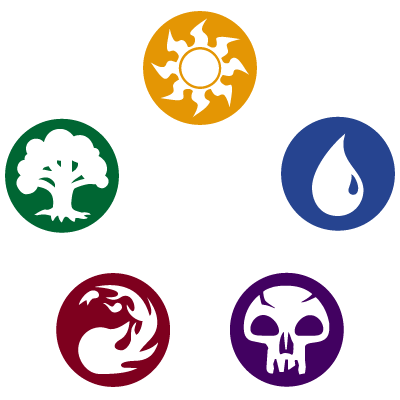
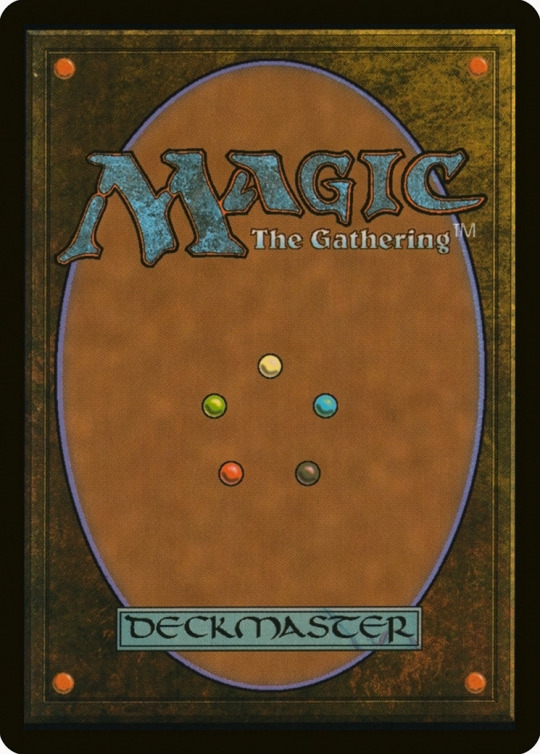
I could basically talk all day about the Color Pie if you caught me in the mood, and it turns out I am in the mood.
Although, before we jump straight into the philosophies themselves I decided to make this little intro first to cover my overall goal with this piece. The idea behind this is that it’s basically a housekeeping article. I take what I feel are some important overarching things to consider no matter what color or mechanic you are looking at and try to summarize them so I won’t be forced to repeatedly explain the same concepts over and over, and we can spend more time looking at the aspects that are more specific to each color.
As for what this series covers? Well, my first goal is simply to give my own explanation and thoughts about how the colors work but I also want to look at both the philosophical, and mechanical/gameplay sides of each color and how they tie into each other. I want to look at flavor questions such as how a White-aligned character may act or why this Green-aligned character may not like that Green-aligned character or how a faction’s color alignment can tell us about its goals and priorities, and gameplay questions like “Why does Blue draw so many cards? Why does Red have Haste? Why is Black always bringing stuff back from the graveyard?” etc. I do plan to still cover the color identities of factions within Magic’s multiverse eventually, probably between color articles to keep things interesting, but for now, our focus is on the colors themselves as I feel this creates a good foundation for any future tribe or faction based analysis, since if anyone is ever confused about something I bring up regarding colors in general then they could probably check them out here.
I should also mention that I’m definitely not the first person to cover the philosophies of the colors. You have people like TheManaSource, Dicetry, It’s Not Good, Lorely Writes, and even people who literally make Magic the Gathering products at Wizards of the Coast themselves, like Mark Rosewater, have plenty of blogs, videos, and podcasts that cover it. In fact, as I’m writing this Mark has recently made a convenient compendium of all his Color Pie related stuff, which you can check out here → https://magic.wizards.com/en/articles/archive/making-magic/lets-talk-color-pie-2021-10-11.
So at the end of the day, my goal with this article is to 1. Summarize and go over some general overarching themes or questions regarding the colors, 2. Act as the groundwork for the rest of the series and 3. Hopefully, allow me to explain why I personally love the Color Pie. So let’s begin.
The Color Pie in General
So first off, what does it even mean to be aligned with a certain color? Well, basically the gist of each color is that they represent a character’s core values and, by extension, their ideology. An example of this would be how Blue believes that the most important thing in life is being the best you one can be and that the optimal way to achieve that is through gaining knowledge, meanwhile Red believes the most important thing in life is to follow your heart and do what you want. What determines what color alignment someone/something falls under is not necessarily the state of their existence or even their personalities but rather what they believe in and value. I mean yeah, goblins are often Red-aligned and different species or tribes within Magic tend to share one or more colors for various reasons, such as culture, but this isn’t the end all be all mind you. Being human doesn’t mean you have to have White in your color identity, and just being a living thing isn’t enough to make you Green-aligned, and simply being hungry and wanting to eat or just feeling emotions does not guarantee you are of the Red-alignment. Heck, if you want to go back to the second point, we have even seen robots with Green in their identity. Which I know may surprise some considering how often it can destroy artifacts and how much it holds nature in high regard.
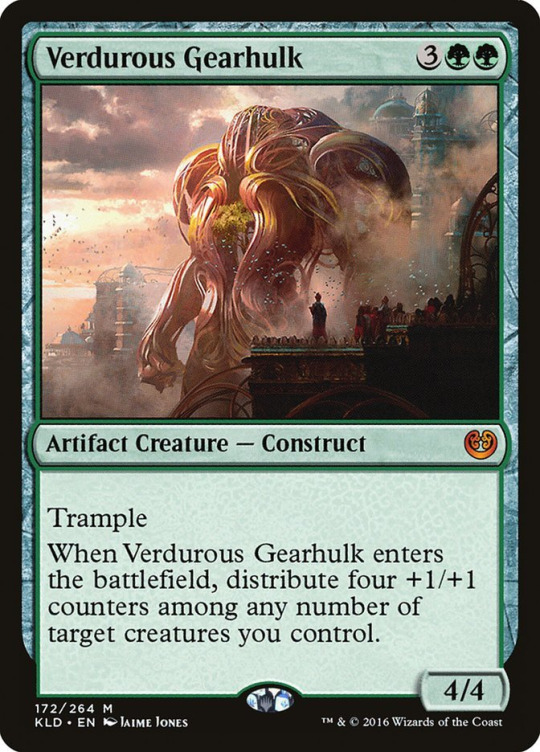
When it comes to the point about personalities, what I mean is that while it is true that a character’s personality can give you clues about what someone’s/something’s values is there is quite a bit of nuance to it. A common example we are given to help prove my point is that just because someone is super organized does not mean that they are aligned with White, but if they VALUE organization and the greater good they might be White-aligned(by extension I suppose this would also mean you can have messy or slovenly White-aligned characters). A mistake that I feel happens relatively often is that I see people assuming that a color has a sort of monopoly on a concept, behavior, or trait. For example, Red is the color that values emotion the most. So some people may look at Red and determine “Ok, so every card that depicts strong emotions, or an emotional moment has to have Red in it right?”

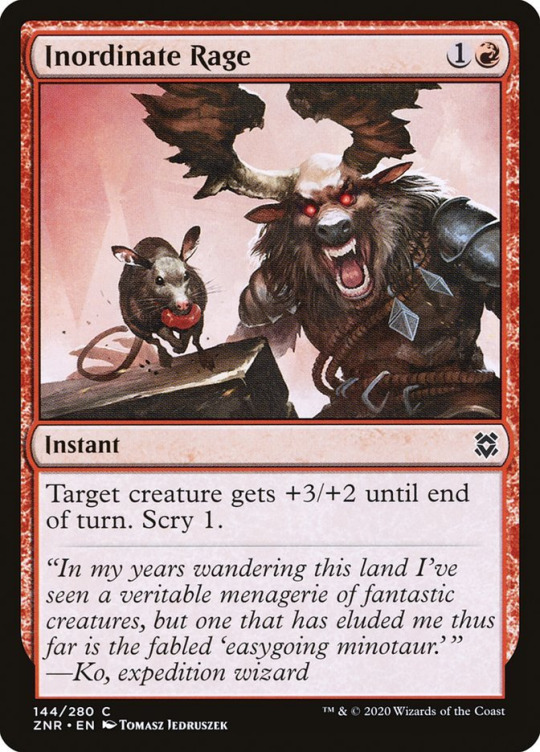
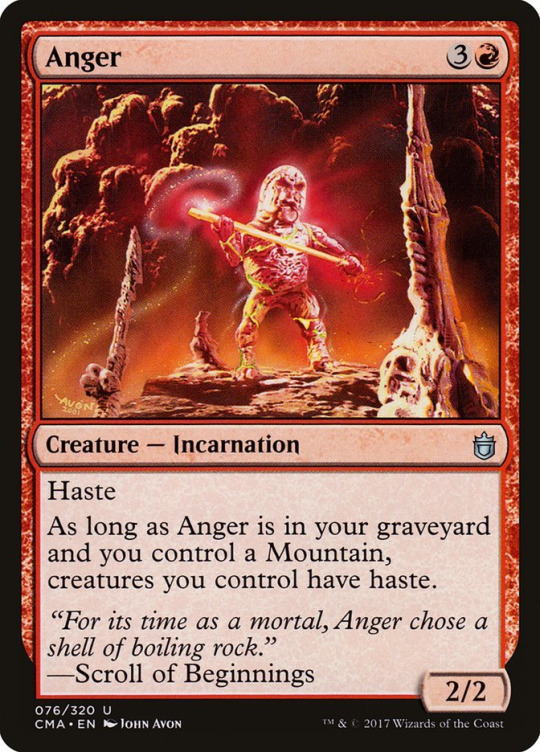

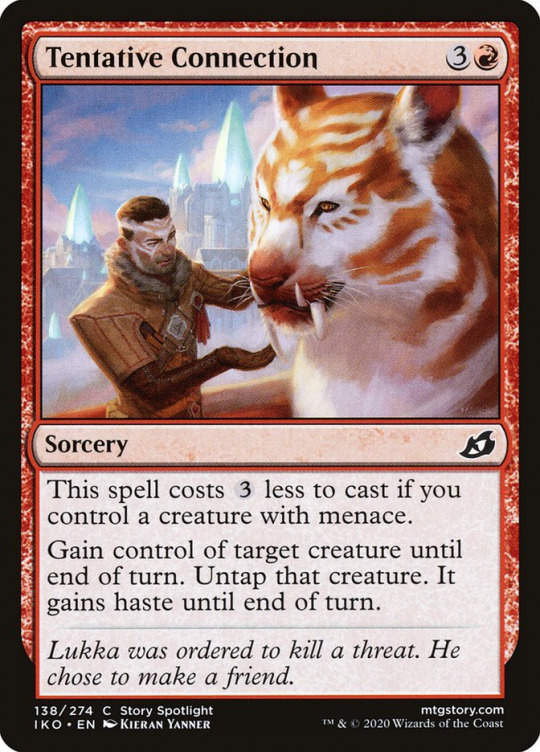
Well… no…
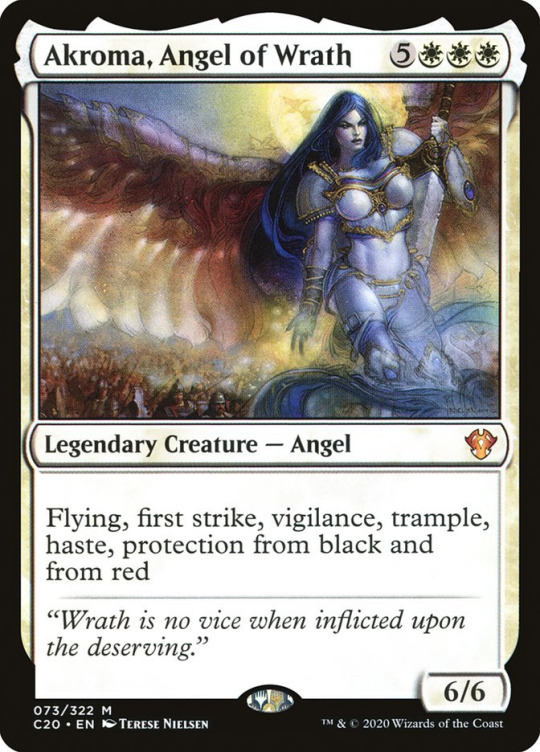
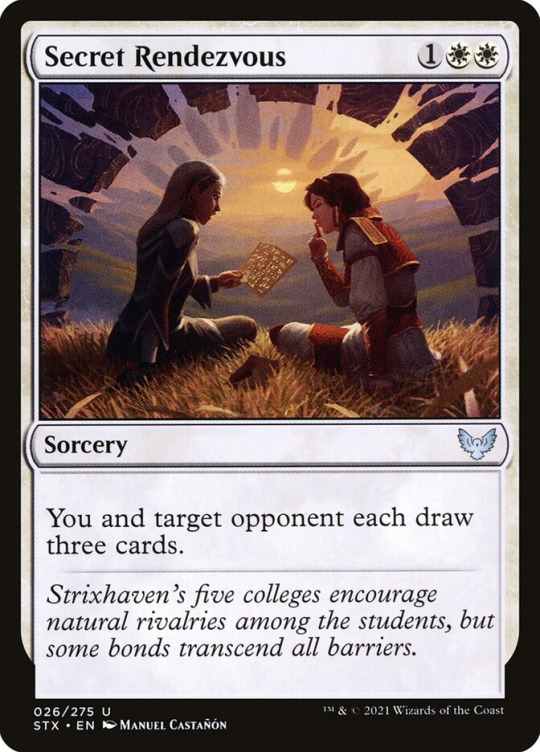

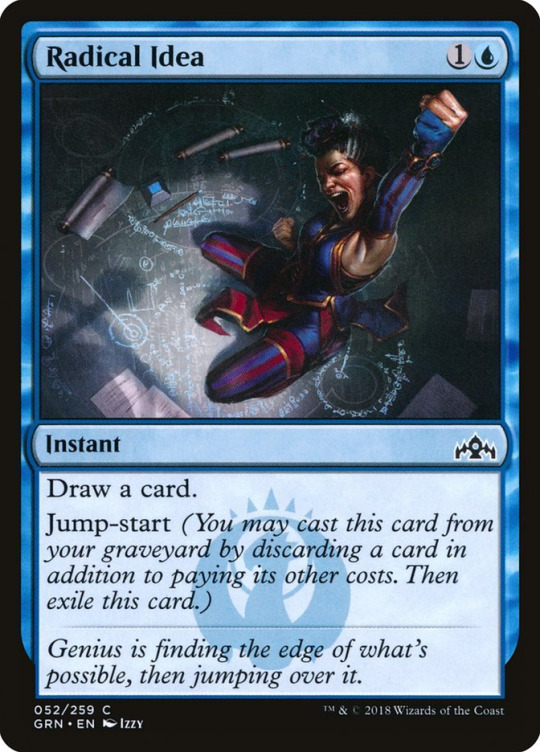
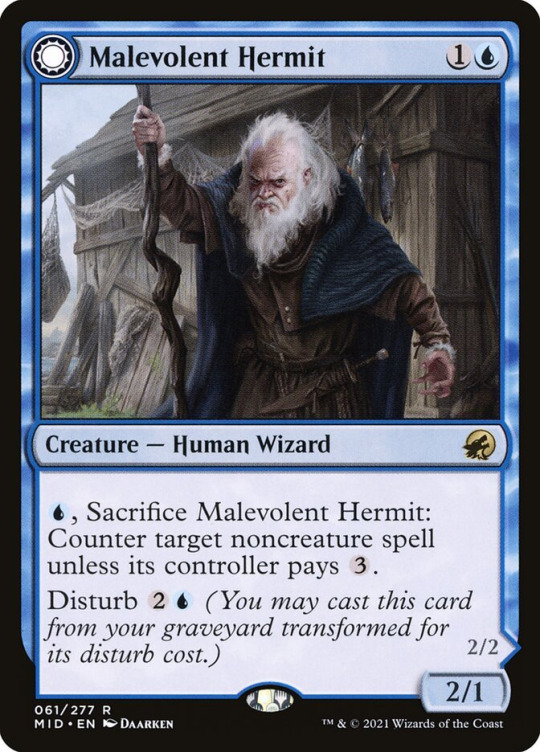
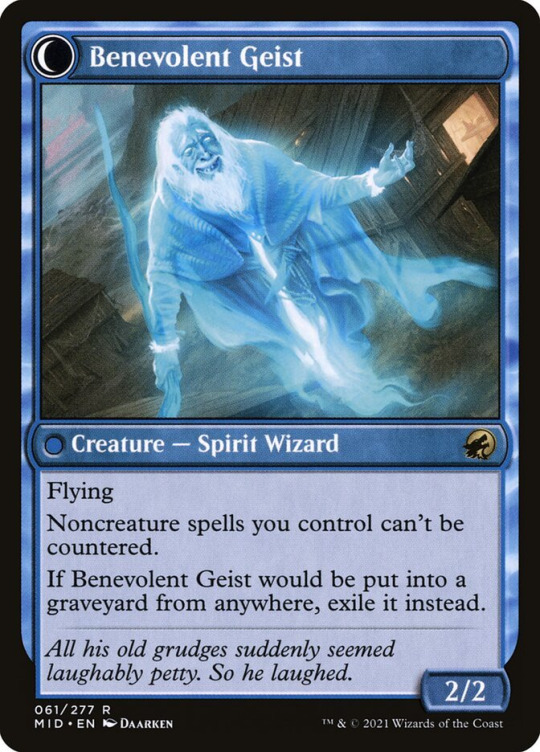
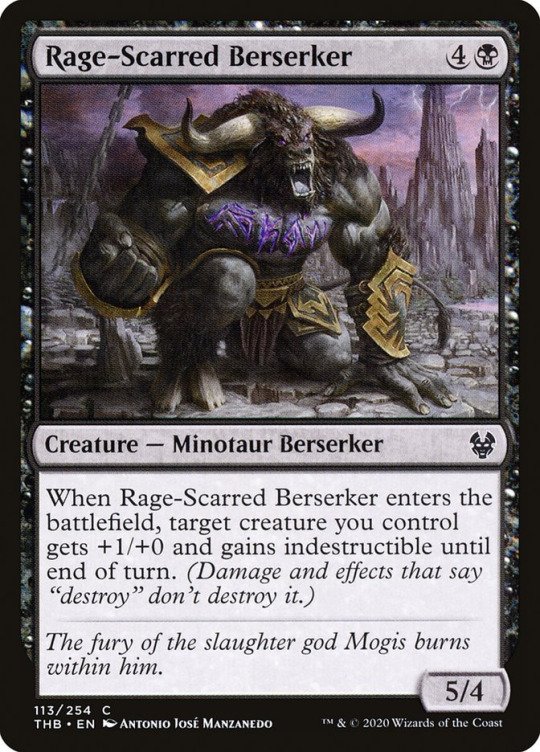
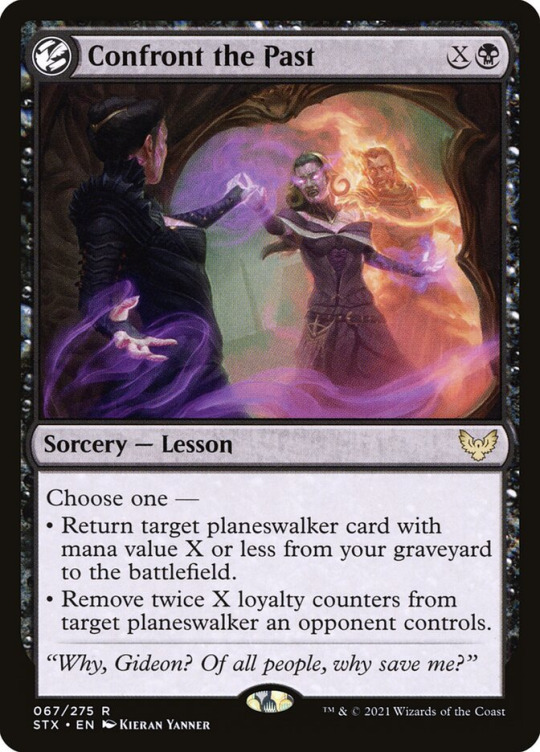
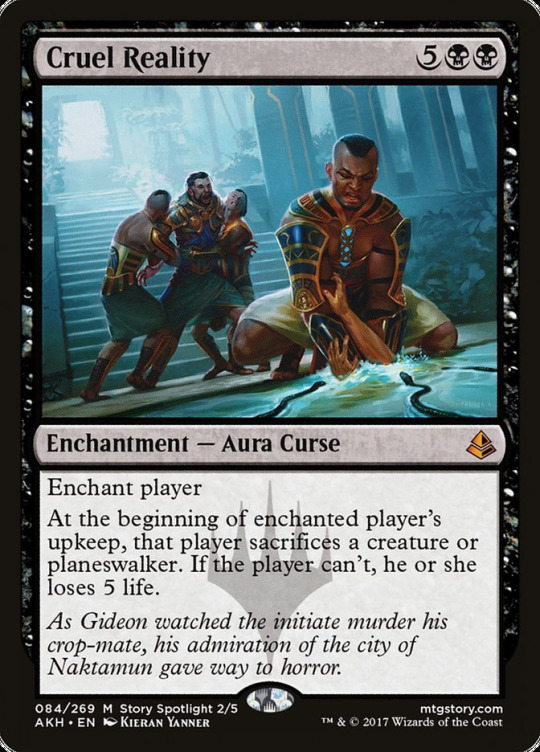
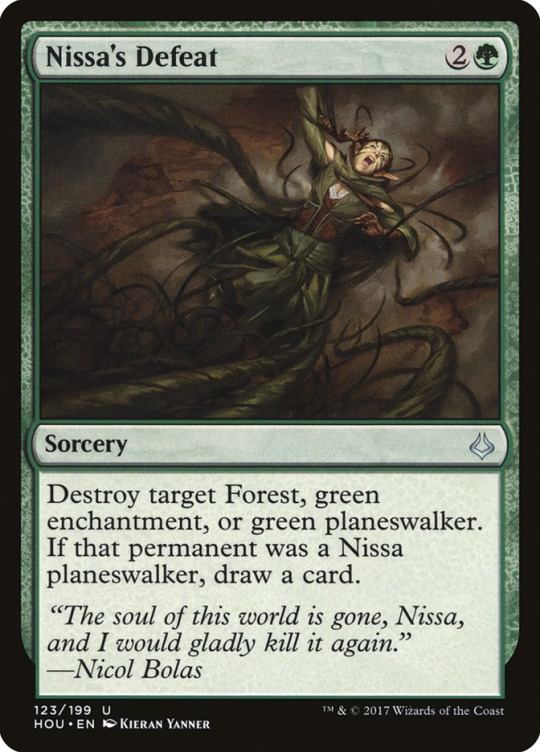
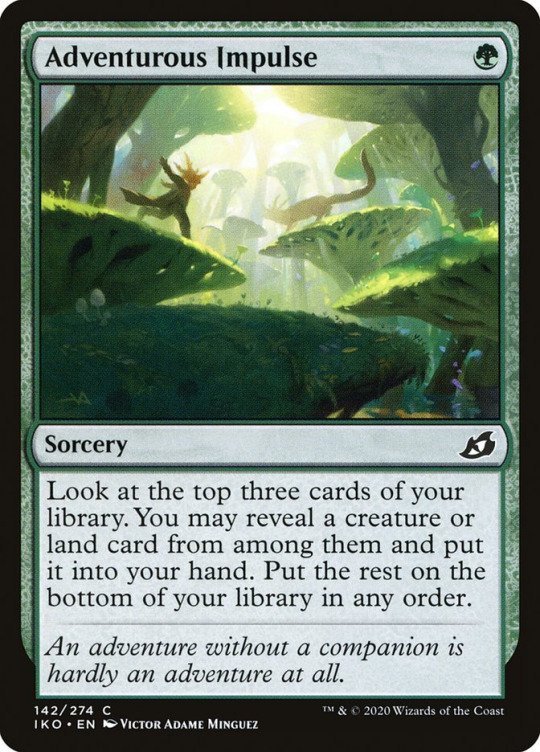
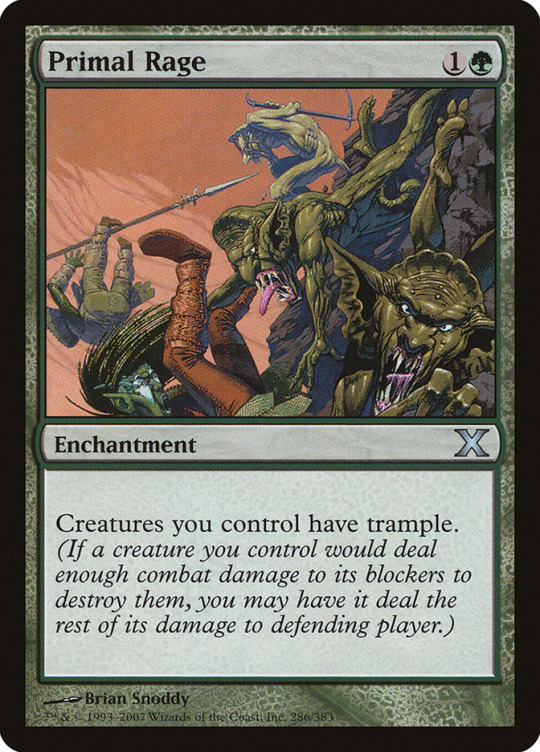
Now don’t get me wrong, Red is clearly the MOST LIKELY to have cards depicting strong emotions due to its belief that you should follow your heart first and foremost. However, that doesn’t mean that the other colors don’t have any emotions or can’t have emotional moments. What tends to be more important when looking at the colors as a whole is not only whether a character within that color has emotions but how they view their emotions and the emotions of others.
Let’s say you have two characters that are both really really angry. We will refer to these characters as John and Jim. John hates bottling up his emotions or holding them back. He believes that you should follow your heart if you want to be happy in life. So when John gets angry he doesn’t pull punches. If someone pisses him off he’ll simply fight them and say something like “Well he shouldn’t have pissed me off,” or maybe he’ll just scream at them and storm off. Both of these outcomes are equally likely.
On the other hand, there’s Jim. Jim is also super emotional but he has a strong moral code. He argues that it’s wrong to get into fights with people when it can be avoided and that you shouldn’t let your emotions control you or else you may end up causing a lot of unnecessary pain for both yourself and others and that’s something he abhors. So when Jim gets super angry he may raise his voice a bit but he will avoid throwing the first punch and will usually go home and do jumping jacks as an outlet for his anger.
Now as many can probably guess in this example, I think it’s safe to say that John is of the Red-alignment in some way while Jim is of the White-alignment in some form. John is someone who believes in following his heart and thus will prioritize what he feels and wants above basically everything else in a given situation. Jim is also an extremely emotional character but he prizes morality and peace above his emotions and is thus more willing to put off things that he wants to do(like punching someone in the face or yelling) for the greater good, or the good of the many. The point I’m trying to get across here is that it’s not that all White or Blue-aligned people intrinsically hate emotion in all its forms but rather they disagree with what Red values and how it reacts to emotions, and by the same token Red has a problem with White and Blue’s priorities. It’s also important to take into account that no one is perfect. It is possible for Jim to get so angry that he fails to properly contain his emotions and he ends up punching someone or getting into a fight. However, due to the philosophy of the White-alignment, I think it’s safe to say that he would probably feel bad about it or at least consider it a mistake/failing on his part in some way. Hopefully, you get what I’m trying to say, the color alignments don’t have a monopoly on concepts like emotion, order, intelligence, greed, concern for one’s own well being, etc., and even though color may be more likely to have it be more pronounced or emphasized in their personality or actions it does not guarantee it nor does it mean that the other colors are completely restricted from having it show up in their personality. The key point I’m trying to get across here is that the best way to help determine where someone sits on the Color Pie is based on what they VALUE as opposed to personality being the end all be all. Also, it should be noted that, yes, a personality can give you clues into what someone values. I mean, if you’re someone who views forethought and knowledge as part of the ideal we should strive for then you are more likely to be thoughtful but not everyone with the same or similar philosophy has the exact same personality. It should be noted that outside factors can also affect how a character acts even if it does not change their alignment, but more on that later.
The Gist of 5 Colors
Now as with most philosophical things there is a lot of discussion and debate to be had, and honestly, I could probably write an entire book solely on Color Pie philosophy alone. However, I figured that since it might be a bit before I finish writing the next article it might be helpful to give you all a taste of what each color is all about. Also, in case you don’t know we are going to go over them in WUBRG order, and for those of you who are unfamiliar with that term, it’s short for White, Blue, Black, Red, and Green and is the order in which the colors are represented. Why is Blue represented by U? I’ll talk about that when I make an article solely dedicated to Blue.
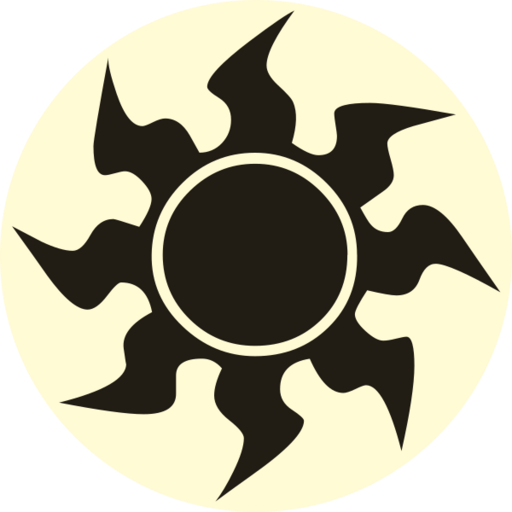
White believes in “Peace through Structure.” That is to say that it wishes to achieve peace and prosperity through various structures, such as laws, moral codes, religion, etc. It also believes in some form of objective morality(there are just some things that are morally wrong to do and some things are morally right). White values the community and the greater good over the good of the individual, and it often attempts to use social constructs and rules in order to help as many people as it can get what they need and guide them on the right path. Now, there is an extremely important distinction in the fact that White believes that there are enough resources for everyone to do what they NEED, and not everything they WANT. Which ultimately ties into White’s theme of sacrifice. Since White believes in putting the greater good above personal/selfish needs it argues that sometimes sacrifices are necessary for the bigger overarching goal. Also, when I say sacrifice in this case I am not solely referring to giving one’s life for a cause, although that can happen, I also mean sacrificing more mundane things like one’s time, money, making sure to avoid going to massive gatherings in order to help prevent the spread of something like a disease or sickness during a pandemic, even if that one party looks rad as hell, and other similar things/concepts. Before I continue, one thing that’s important to remember when looking at all the colors is that none of the colors are inherently good or bad. I mean yes due to White’s moral bent it will basically always want to do the right thing and even if it’s in an antagonist/villainous role it will usually believe it is doing the right thing because… I mean White genuinely does want to help and do the right thing, but at the end of the day intentions can only take you so far. You could also argue that certain colors are more likely to commit acts that a majority of people would consider “bad” or “evil” but again none of the colors are necessarily only negative traits by default. So in order to help get this point across I’ve decided to list one strength each color has as well as one weakness. I will go into more detail regarding each color’s strengths and weaknesses in future content.
One of White’s major strengths tends to be its teamwork and organization. Due to the fact that White prioritizes structure and the needs of the group it tends to be good at working in teams or large groups of people. It also often leans towards utilizing laws and/or moral codes in order to help people stay on the right track.
One of White’s weaknesses is that since it believes in the group over the individual and an objective morality it can sometimes end up having extremely black and white(get it?) view of the world can end up creating a mindset that is extremely controlling of others in an attempt to get them to fit into a strict idea of what is right and a mold that is extremely stagnant and inflexible to changing and adapting.
Some words that are heavily associated with White are peace, law, structure, selflessness, and equality.

Blue believes in seeking “Perfection through Knowledge.” An important clarification is that Blue’s philosophy doesn’t believe you can literally be perfect but rather that we should be constantly trying to improve and be the best us we can be(perfection here is a process not necessarily an end goal). Thus, in a way it can be described as attempting to achieve perfection, since what it’s trying to do is trying to get as close as possible to it. Blue argues that the best way for us to be the best we can be is through knowledge, information, education, etc. At the end of the day, knowledge is power and the key to being able to do something is to simply know how it works and how to do it. Blue believes everyone is a blank slate and that with the proper knowledge basically anything is possible. Now Blue isn’t a philosophy that’s dumb enough to argue that if you are born without wings or with bad vision you could just gain flight and 20/20 vision with sheer willpower. Rather, if you learn how flight or vision works you could do things like build a jetpack or create a set of glasses that could compensate or negate certain issues or even allow you to do new things you never thought possible. In Blue’s eyes, you only have one life so it makes sense that you shouldn’t waste it or ruin it by making shortsighted or emotional mistakes. Thus, you should carefully consider your actions and plan for the future.
One of Blue’s greatest strengths is probably the most obvious, knowledge. Due to the fact that its philosophy prizes knowledge and thinking it tends to be very good at utilizing the information at its disposal and it is less likely to make a silly or shortsighted mistake because it likes to keep the bigger picture, and the future, in mind. So even though a Blue character is capable of making mistakes they will at the very least decrease their chances of making a careless or not thought out action.
However, one of Blue’s major weaknesses is that it can end up being too passive and slow at times. It often sits around thinking and when tasked with making a choice it will try to figure out the best option. While this is often all well and good, sometimes this can lead to Blue getting “frozen” with all the choices it has. This is in the sense that sometimes they take too long to make a decision or act so they can end up not reacting to something fast enough, or in extreme cases just not end up making a decision at all. Sometimes the easiest way to get the upper hand on Blue is to simply act before it has time to think or formulate a plan.
Some of the words that are associated with Blue are knowledge, deceit, cautious, deliberating, and perfecting.

Black believes in “Power through Opportunity’’. This means that, unlike say White, Black believes that there is no objective morality and it prioritizes the self over others. This means that Black believes that there is nothing wrong with doing whatever it takes to win, no matter how underhanded, inhumane, dishonorable, immoral, or unlawful, and thus it’s priorities can be described as trying to amass as much power and strength via any opportunity that it can make or encounter. At the end of the day, Black believes that it’s power that talks and that frankly, the world is a ruthless and unfair place. While some of the White alignment may claim that those who are of the Black alignment are the reason bad things exist, in Black’s eyes it’s the other way around. People are Black-aligned because the world is full of unfairness and brutality which in turn means that it is reasonable that people do whatever they can to survive and gain power. Black isn’t always creating all the world’s problems more so playing with the hand it was dealt in life. It is also important to note that Black is not inherently evil and White is not inherently good. First of all, Black is amoral, which means that it doesn’t actually believe in any sort of objective good and evil, and second of all, from Black’s perspective, life is already hard and unfair enough as it is. Compounding that issue with a bunch of subjective ever-changing morals, limitations, laws, and traditions that you yourself or others put on you is only hindering you. Not to mention that at the end of the day, the only one you can truly guarantee to care about you, your wants, and your safety is yourself. No one else is guaranteed or obligated to look out for you so you should look for any opportunities you see or create and use them to the fullest without mercy or shame. You should do what is best for you and whatever it takes for you to survive.
One of Black’s strengths as a color is that, at its best, it can end up being the most pragmatic out of all the colors, and thus it will be willing to do what needs to be done to achieve its goals. Sometimes other colors may be unwilling to tap into a resource they consider to be icky, scary, or unholy, such as corpses that can be used to make a zombie army, but Black is a color that rarely lets resources like that go to waste.
Now, ironically this sort of ties into one of Black’s biggest weaknesses. While Black does think things out, it’s “nothing is off-limits” ideal can end up manifesting as something that leads Black to take a lot of risks and sacrifices in order to get what it wants. Black is one of the colors that are most likely to end up messing with stuff that people say you shouldn’t mess with for a good reason, and being willing to sacrifice things for an important goal can end up making backfires or misplays blow up in your face all the more. This means that sometimes the color that is most likely to defeat Black can end up being Black itself, since at its worst it’s selfishness, greed, power-hungry ideals, and “no line is a line I’m unwilling to cross” philosophy can sometimes end up shooting it in the foot immediately or down the line.
Some words that are associated with Black are power, self-interest, death, sacrifice, and uninhibited.

Red believes in “Freedom through Action.” That is to say Red believes that in order to enjoy life to the fullest you need only to follow your emotions/heart and do what it is you want to do whenever you feel like doing it. If you feel angry and want to punch something then punch something, if you’re sad and want to cry then cry, if you’re happy and want to laugh then laugh, so on and so forth. Red doesn’t even bother to promise that you won’t make mistakes or get into fights but in Red’s eyes those are just part of life anyway, so there’s no point in trying to bottle up your emotions or sit around scared to do what your heart tells you. I mean you only have one life to live so why spend it not doing the things you really want to do or not acting on the stuff you feel.
One of Red’s strengths is the fact that it often acts quickly. It often knows what it wants and because of that, it will often immediately begin taking the steps needed to get what it wants. It is a color philosophy that doesn’t like just waiting around pining after things and will try to go for what it wants.
One of its weaknesses is that it can be extremely short sighted or chaotic in a lot of situations. It prizes just doing what it wants and following, often fleeting, emotions which means that it may not always think through the consequences of actions or choice. This can lead to Red being bitten in the ass either immediately or down the line because it failed to consider the long-term ramifications of something it did.
Some of the words that can be associated with Red are freedom, emotion, active, impulsive, and destructive.

Last but not least is Green. Green is a color that believes in “Growth through Acceptance.” Green’s philosophy argues that one is born with all they need to be fulfilled and by extension nature has all we need to live a complete life, one just needs to embrace it. It believes that everything is born with a purpose, wolves are born to hunt, deers are meant to be prey, birds are supposed to fly and grass needs to grow. Now, it’s important to remember that Green does believe that things can change, as nature itself is something that evolves and changes over time, but in its eyes such changes should either occur naturally and/or help you better realize your role in nature and the grand scheme of things. If you were born a sparrow then that means you were born to fly and can learn better ways to fly for example. Due to these themes of acceptance regarding your place in the universe and the natural order Green is a color that is tied strongly to things like destiny, divine purpose, and/or many other forms of predeterminism. Green advocates that, instead of fighting against our natural place, we should simply accept them as they are and come to terms with the fact that there are things we just can’t change and some things we can’t fully understand. One cannot magically sprout wings if they are a turtle or become immortal just by thinking about it, and that’s just the way things are. Green is also a color that is strongly connected to the past, tradition, and history as one of the best ways one can figure out where they belong is to look towards the past. If you want to figure out what the role of a bear is in the ecosystem then you may want to look at how bears have impacted the ecosystem in the past or the role they played in the history of that ecosystem.
One of Green’s strengths is that its belief in the natural systems of the world/universe/planes often gives it a strong understanding and connection to nature and the things that occur in it. It is a color that can definitely really appreciate how nature works and the wonder nature can hold.
One of Green’s weaknesses is also tied to the fact that Green sees nature as the best thing since sliced bread. In a weird way, it can sort of end up putting all its eggs in one basket by being unwilling to try anything that it deems unnatural. It also means that if the nature it’s relying on is lacking in something or is too damaged/destroyed it may have trouble adapting due to it’s potentially go natural or go home style beliefs.

Before we move on I might as well at least touch on Colorless, since there are objects and characters that aren’t aligned with any of the five colors. Colorless, as the name would suggest, is the lack of any color and thus it usually represents something that doesn’t have its own ideology to speak of, such as non-sentient objects or artifacts. However, it can also represent characters who have sort of transcended the normal mana colors, such as Ugin as a spirit, or beings that are beyond the understanding of the Color Pie or normal logic, such as the Eldrazi. That’s not to say that a Colorless character can’t have a personality or some sort of value but Colorless as a whole has no consistent permanently overarching philosophy.
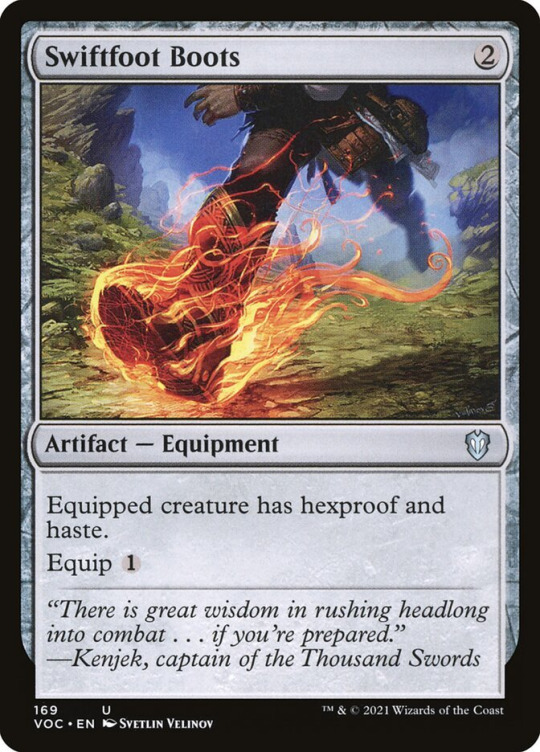
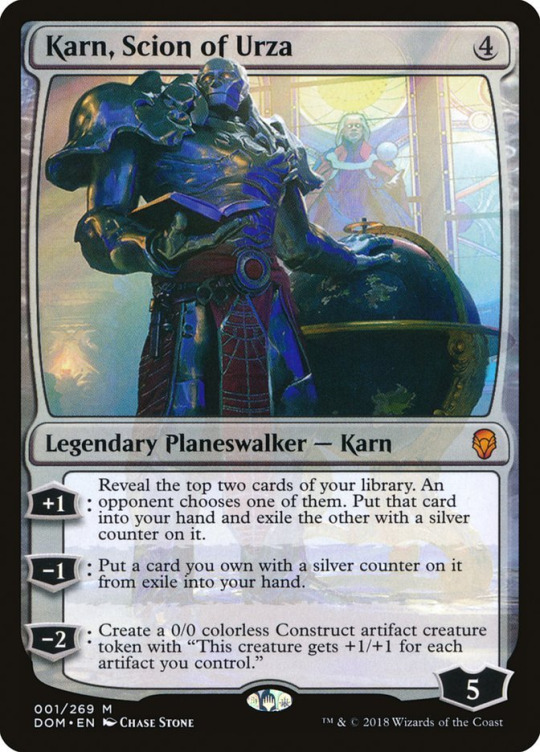
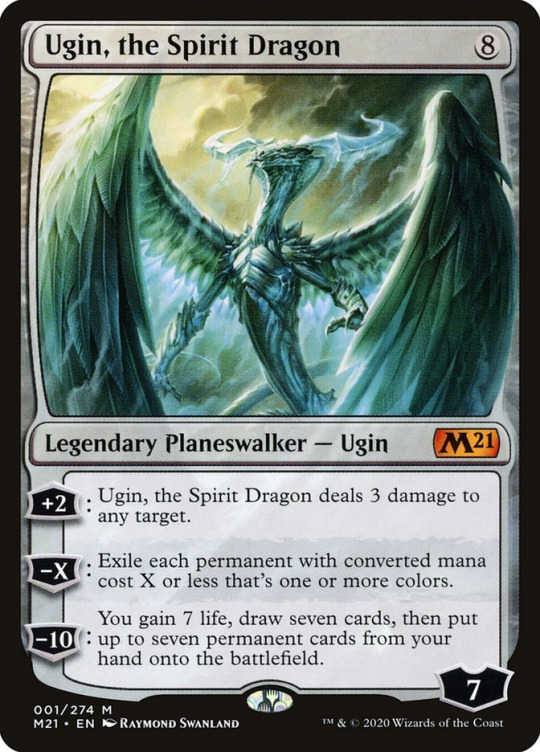
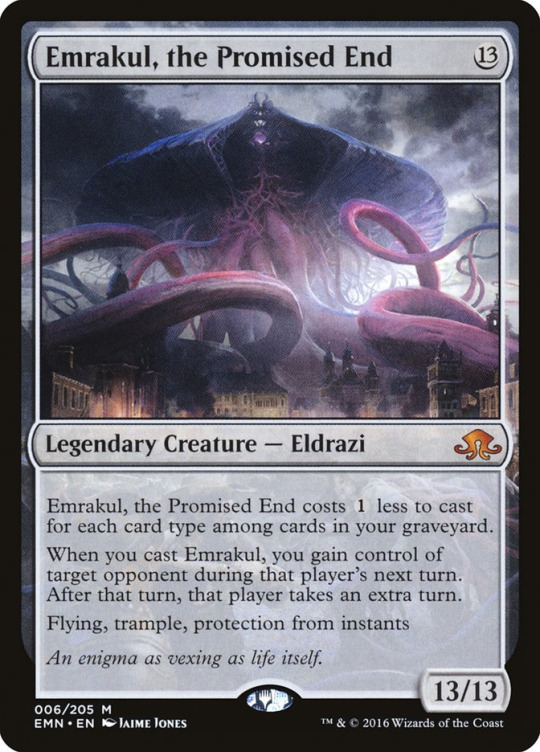
Colorless as a whole doesn’t have any philosophical upsides or downsides since it doesn’t have a coherent philosophy it is adherent to.
Also, for the sake of clarity, there do exist artifacts and objects with a color alignment, even if they tend to be less common than those of the colorless variety. These colored artifacts are either sentient while also having a strong adherence to one of the 5 color philosophies or are just heavily attuned with or connected to some color, or color combination, of mana for whatever reason.
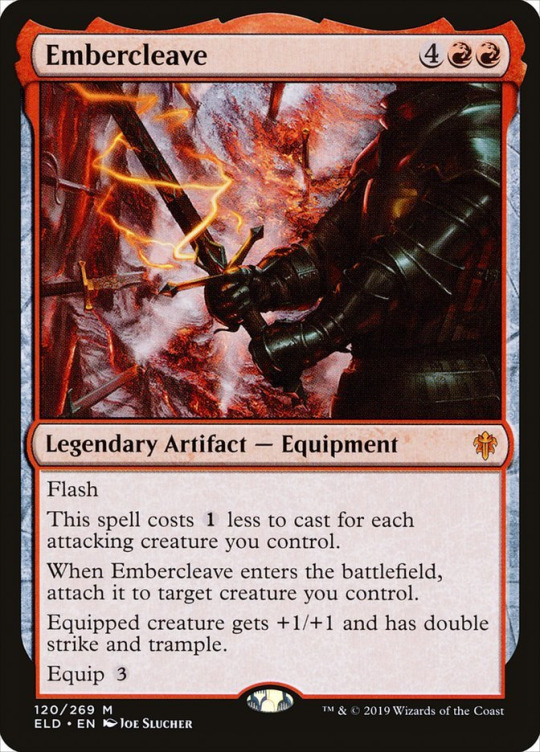
Color Allies and Enemies
Now, earlier I mentioned the Color Pie and WUBRG(White, Blue, Black, Red, and Green) order. Well, let’s come back to that for a second. You see, each color has two of what are called allied colors and two enemy colors. A color’s “allies” are the colors that are directly next to it on the Color Pie while enemy colors are the two colors on the opposite side of the pie from said color.
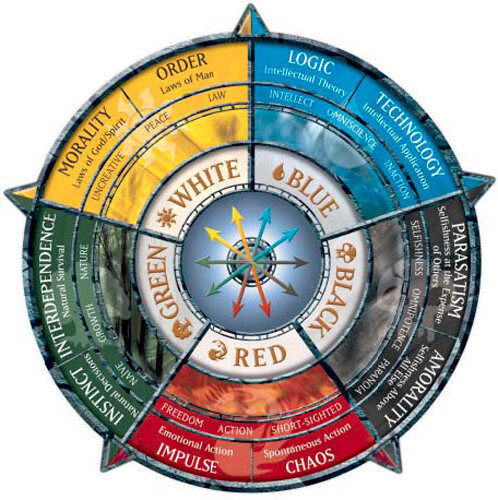
For example, White’s allied colors are the colors next to it, Blue and Green, and its enemy colors are Red and Black. As the names would imply ally colors from a purely philosophical standpoint tend to have more things they agree on with the colors they are allied with and enemy colors tend to have a lot of ideologies that directly oppose their respective enemy colors. If we go back to White we can see that one of the things White prioritizes is structure and the greater good. Green also has a sense of right and wrong like White does and it also has a sense of structure about the way things are supposed to be. Blue also likes structures that can help improve things and spread knowledge, plus it has a sense of the bigger picture and understands that you shouldn’t always put your needs and wants above everyone else. On the other hand, you have Black and Red. Black argues you should always put yourself first and look out for yourself and Red’s philosophy is that you should follow your heart and do whatever you feel like doing. These ideals directly oppose White’s ideals of the greater good and selflessness(These are just brief examples by the way they aren’t meant to be super in-depth).
Now just to be clear, just because a color is allied with another color does not mean that those colors see eye to eye on everything or always agree with each other, and even enemy colors still have things they agree on. Furthermore, not every character that aligns with a color gets along with every single character that is of the allied colors nor do they hate all characters who align with their enemy colors. I mean, yes a Green aligned character is probably more likely to get along with a White aligned character than a Black aligned one because of the fact that in general people with similar philosophies about how the world should work are usually more likely to get along with each other, but this isn’t the end all be all or a hard rule. Heck, characters that fall under the exact same color alignment(s) can be diametrically opposed. Two Blue characters may have different ideas of what perfection they should be striving for and one White aligned character may have a different definition of what’s morally good and peaceful than another White aligned character to the point where they may become enemies, see each other as threats or just simply find themselves on opposing sides of some sort of conflict.
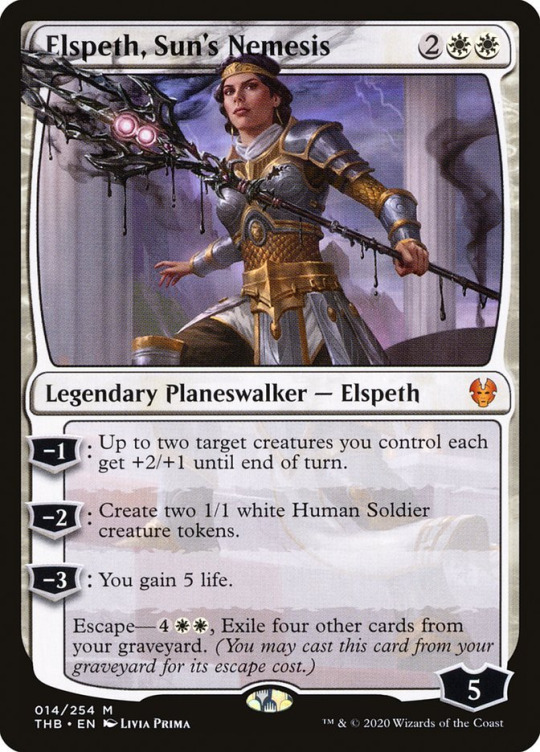

Remember, color philosophy, and philosophy in general, is not just a stock character personality. Certain overarching traits are more likely to occur due to their ideals but this does not mean literally everyone in said color alignment has them nor does it mean everyone within said color alignments embodies literally every aspect of that color. While the colors are archetypes they are PHILOSOPHICAL archetypes, not personality ones.
When it comes to ally/matching color alignments it helps to think of it this way. Does every person within a political alignment or party see eye to eye on every issue, do they all have the same exact personality? No, of course not. There may be some traits a lot of them have due to who their philosophy appeals to but they aren’t all carbon copies of each other nor do they all get along. A color’s relationship with enemy colors can be thought of in a similar way. I’m sure everyone has at least one friend who has wildly different opinions on how good a tv show is or a certain aspect of what they consider ideal for themselves, their community, or the world. Just because your opinions aren’t one to one doesn’t mean you aren’t friends.
To that end, where the color pie places each color is a sort of measurement for how well each philosophy sinks up with each other. A Blue aligned person or character can still have Red or Green aligned friends and family(just make sure to avoid talking about politics with them on thanksgiving). I mean heck, Teferi is a Blue, and sometimes White-Blue, aligned character that is in a happy and loving relationship with the Red aligned Subira, and White and Blue are about as opposite from Red as you can get on the color pie.
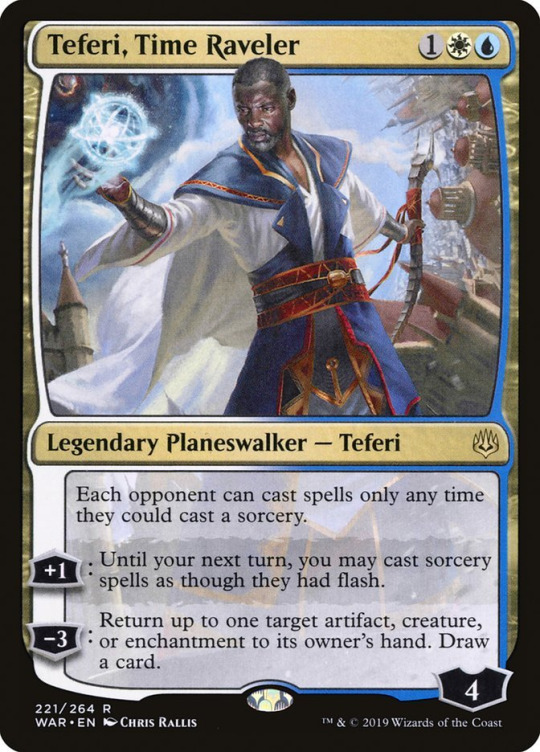
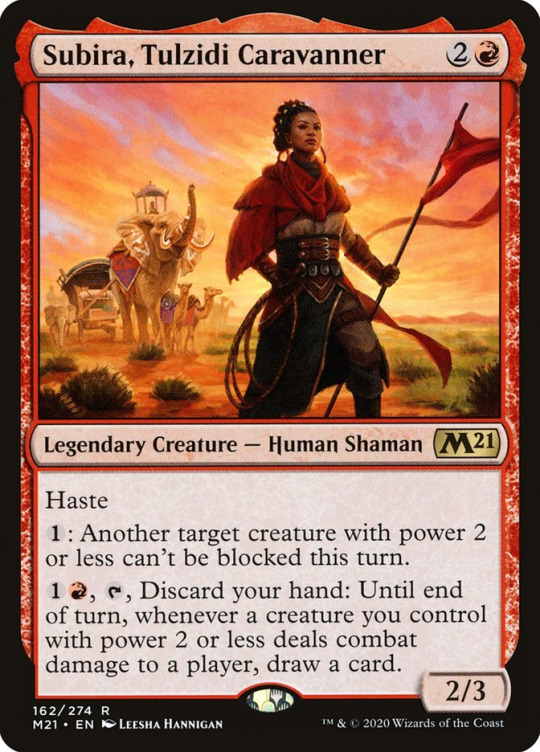
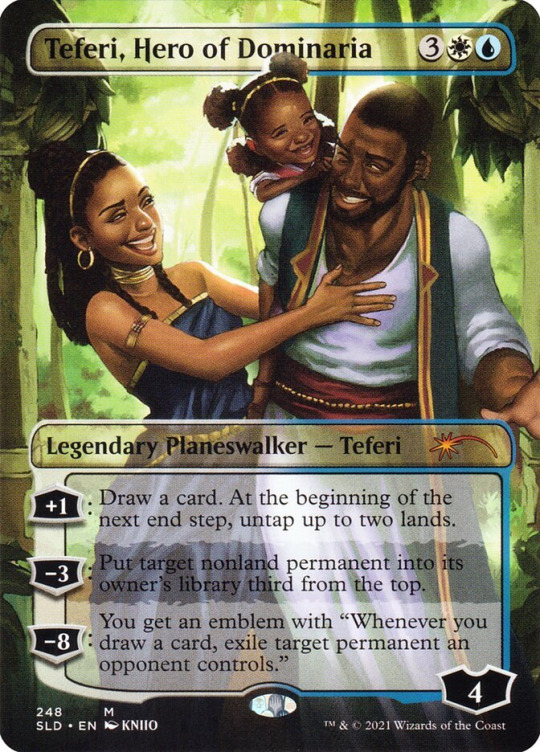
It is also important to mention that characters of various color alignments can rub off on each other in various ways without completely altering the alignment of whoever they’re affecting. You can have a Black aligned character hanging around a bunch of White aligned people and thus have them be more likely to follow whatever laws and/or rules these people make because they know that breaking them and getting caught might be way more trouble than it’s worth. Conversely, you could have a White aligned character hanging around Black aligned people who does something that could normally be considered more Black aligned or immoral due to things such as peer/social pressure without losing their White alignment.
We should also consider that not every person or character necessarily embodies literally every aspect of the color they fall under. Yeah, there are a few key aspects to the ideology which in turn makes the occurrence of certain strengths and/or weaknesses more prevalent or easier to fall into for those aligned with said colors. but not every White aligned character is uncompromising, and not every Blue character comes off as cold or emotionless to others for example. It’s just that characters in these alignments are more likely to fall into these pitfalls when compared to other colors due to their heavily moral and information-dependent values respectively, but it’s not universal or a trait literally every character will have. A lot of these potential shortcomings can also act as various forms of inner conflict, and not just an outer conflict, for characters.
Color Combinations
I might as well randomly segue into color combinations. So you don’t have to pick just one if several colors sound equally correct to you. Any person or thing can have anywhere from one to all five colors in their identity and all the various combinations that entails. Heck, as I went over previously, in Magic there are some things that don’t have any colors in their color identity.

Each color combination has its own philosophy that tends to be based on the agreements of the component colors. For example, Green likes understanding nature and watching nature change and evolve and Blue also likes understanding things, knowledge, and watching things improve. So when you slap these two philosophies together you often get one that prizes things like progress and evolution.
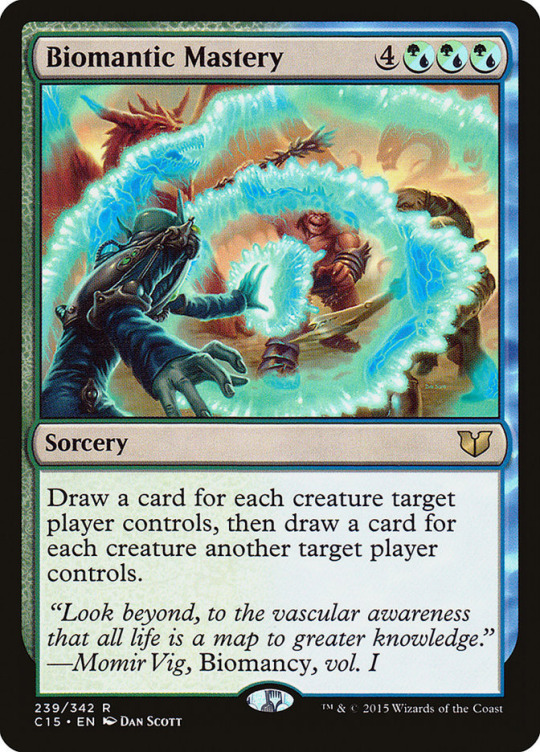
I should also mention that just like mono-colors, there are a myriad of ways that characters with these philosophies can manifest ,and there are no hard rules about how they act or who they can be. Also, the same combination of colors can manifest differently depending on how the two colors combine. Instead of combining the progress aspect of Green and Blue, you could combine Green wanting to understand nature along with Blue wanting to understand things too in order to get a character who seeks to fully understand and harness nature to its fullest potential…
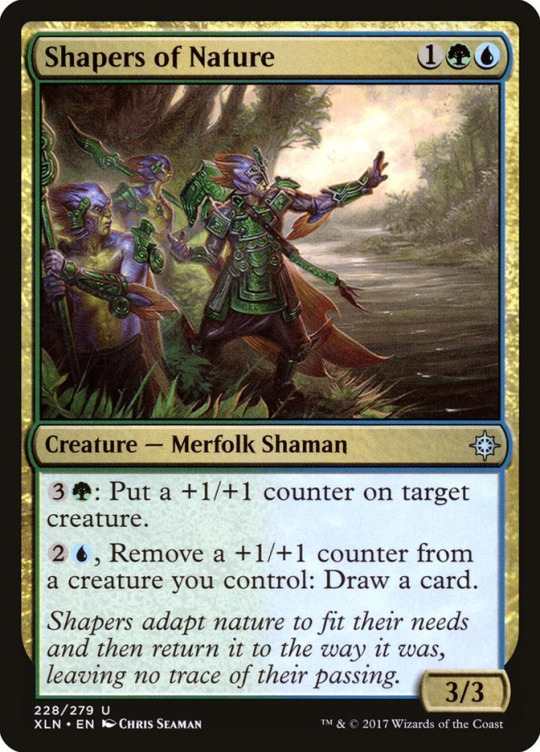
or you could take Green wanting to preserve nature and Blue wanting to preserve things for the sake of preserving information to create a way of thinking that wishes to protect nature.
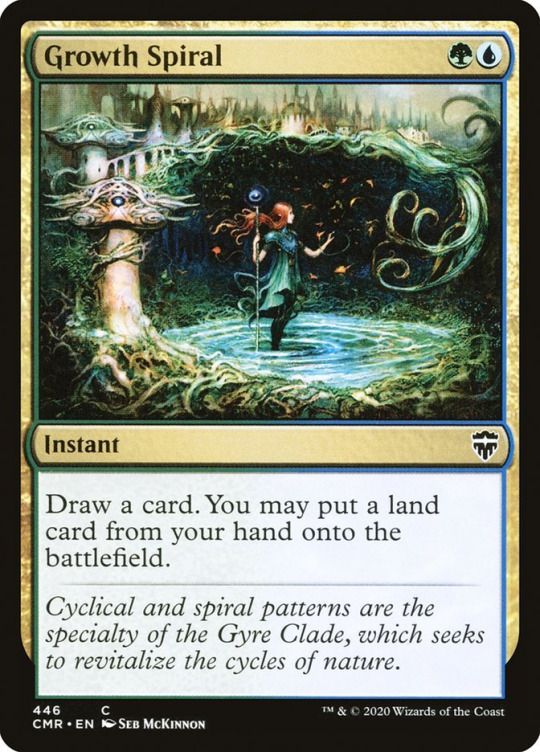
This is all without even getting into center and secondary colors by the way.
Where Colors Fall
Before we continue on, let’s quickly go back to the Color Pie in general and look into more of the specifics regarding why cards within Magic are put into certain color(s). For the sake of convenience, I have decided to make my own categories for the three general reasons that determine where a card ends up, Flavor, Mechanical and Mixed.
I already touched on a bit of philosophy and flavor earlier so I will keep my covering of the Flavor category brief. Cards that I have put in this category have their color identity based on the fact that the action, idea, archetype, or character said card is depicting is either straight up inherently a type of ideology or trait that falls under the philosophy of a specific color(s) or is something that is far more likely to fall under the philosophy of said color(s) than it would in other color identities.

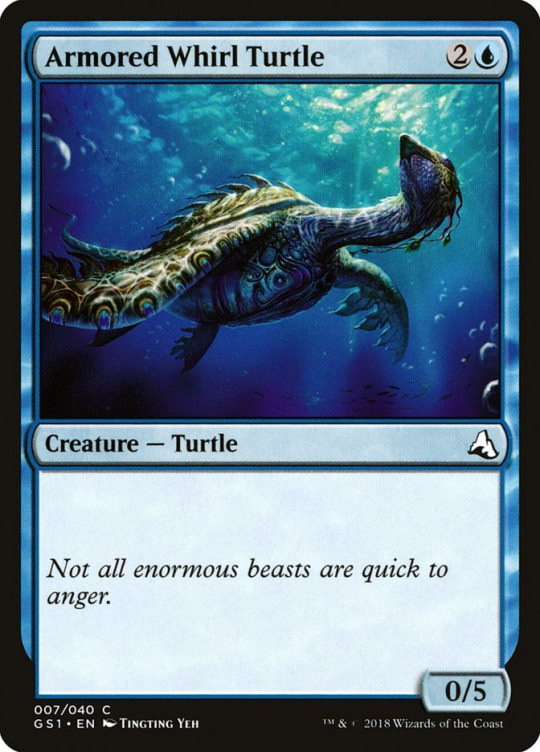

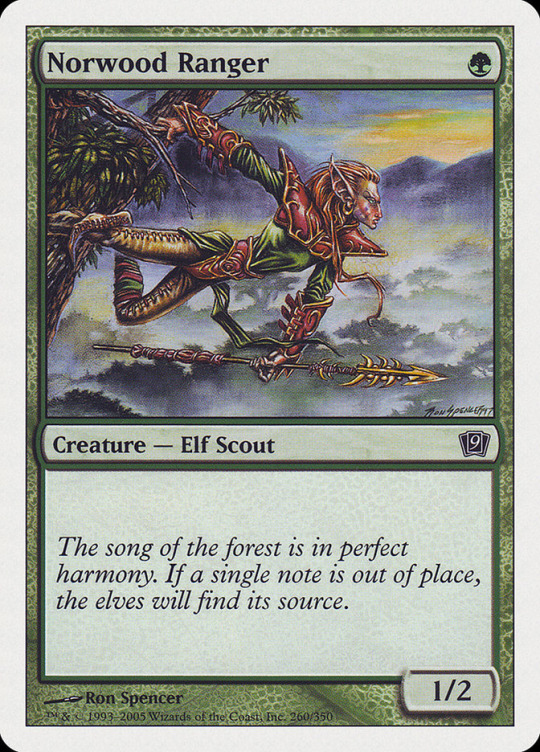
Cards that fall under the Mechanical category are there because their colors are strictly based on their gameplay or mechanics(cards that have their mechanics based solely on the fact that they are part of a cycle could also be considered a subcategory of this type). I’ve noticed that cards in this category can have actions, ideas or archetypes that don’t necessarily align perfectly with a color’s ideology or method of doing something but it’s mechanics do align with the color’s gameplay identity.
I think a good example of what I mean would be cards like Baffling End and Fateful Absence. I’m going to be honest, I don’t really know what is inherently White-aligned about a poor motherfucker just vanishing for no explainable reason, but mechanically these cards fit into White’s ability to sort of “trade” with a player by exiling or destroying something they control and giving them something in return.
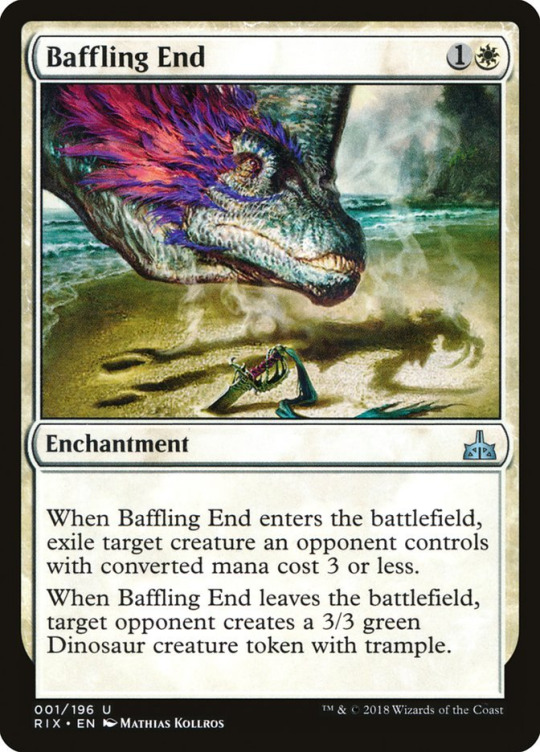
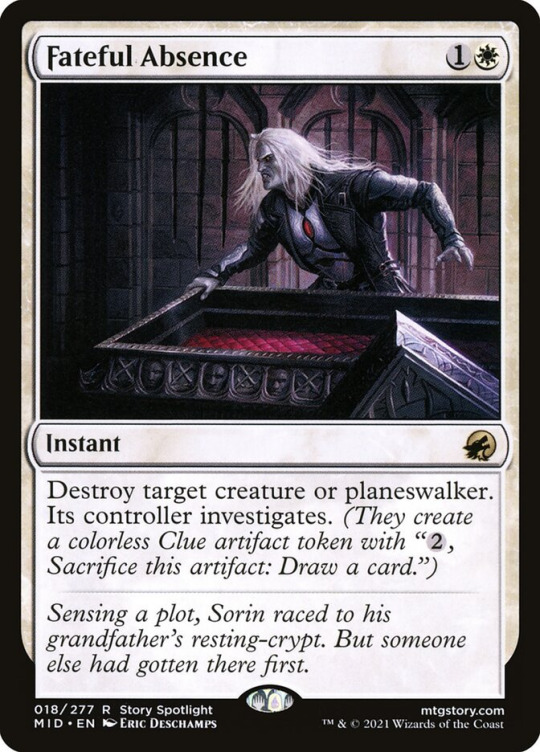
The final category is of course the Mixed category. Which is kind of just here for any cards that don’t fit cleanly into either of the previous categories.
I should mention that I don’t believe this is a perfect categorical system. MTG is very complex and nuanced at times so there are plenty of arguments to be made. For example, you could argue that Armored Whirl Turtle is of the mixed or mechanical category because having high toughness and low power does fit into like White and Blue sections of the Color Pie. These categories are a kind of simplification that is meant to help get some of these ideas and flavor or mechanic themes across.
Center/Focus and Secondary Colors
Due to all this talk about multi-colored alignments, I think it’s time to touch upon center and secondary colors.
A person or character can have one or more “center” and/or secondary colors in their color identity. For example, someone like Teferi might be both White and Blue but their center color is Blue and their secondary color is White.
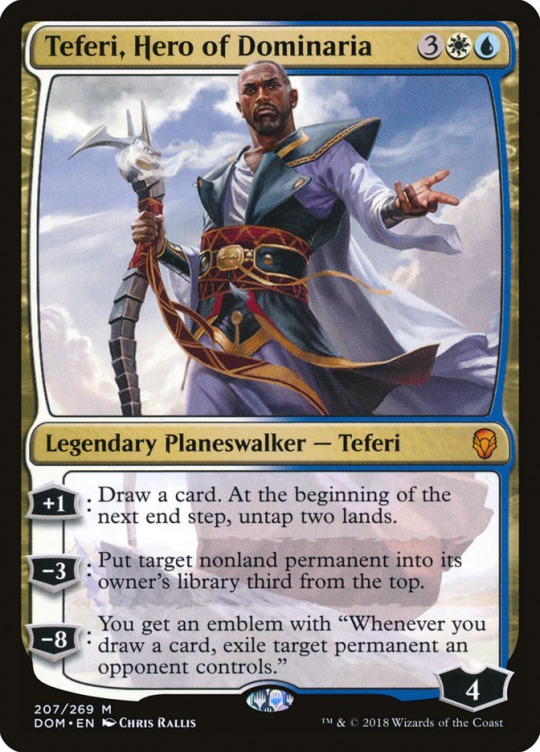
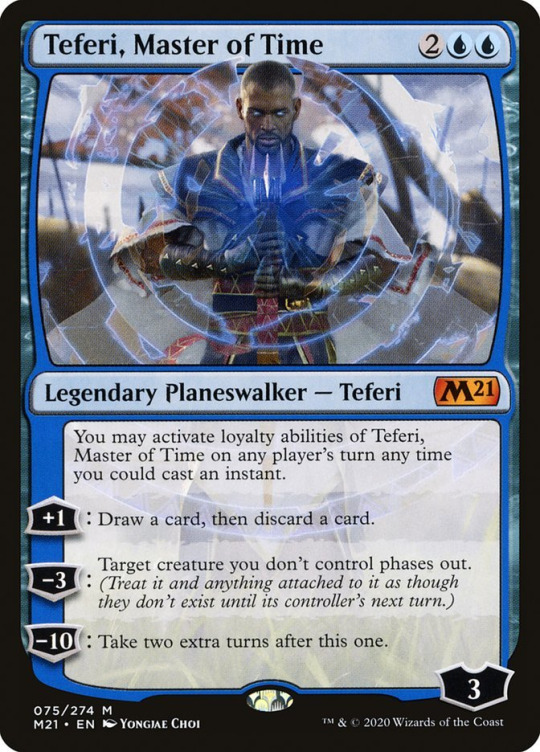
Meanwhile, someone like Kaya has both White AND Black as their center colors. I’ve also seen center colors referred to as focus colors but they are the same thing.
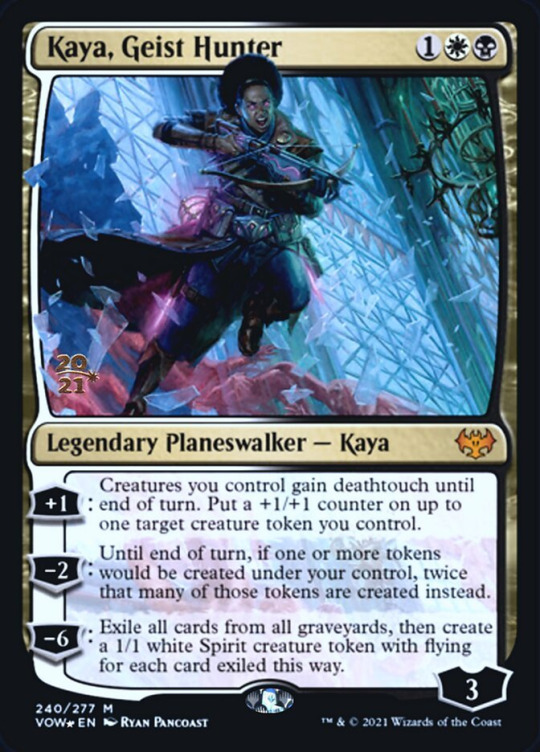
So what even is a center color? As mentioned earlier, multi-colored philosophies tend to be formed from what the colors that make them up agree on. However, when you assign a color as a center or focus you will have the philosophy in question lean towards that color more. The best way to explain is like this, you have a White-Blue character and their center is Blue. So they value Blue’s philosophical goal of perfection and being the best you one can be. However, the presence of White as a secondary color sort of alters how they believe that goal should be achieved. In this case, you end up having a character who tries to achieve Blue’s end goal through White’s means and way of thinking. Thus, you end up with a character who is somehow using White’s structure or morals in order to be the best they can be and try to improve the world around them. This presence of center and secondary colors adds a whole new layer of depth to color identity and can be used to better understand multicolored philosophies. As you can tell when it comes to center and secondary colors you can usually break them down into a formula of whatever the end goal of the color is + what they believe should be done to achieve it.
Now of course, like with most things regarding the Color Pie, there are a lot of nuances to be had. So I’m going to save more specific talks about what different center colors can mean when paired with other specific colors and how they can manifest at a later date. Things like center and secondary colors can have exceptions or manifest in wildly different ways.
Mechanics
Now of course I can’t claim to make a series that will cover how the Color Pie affects Magic the Gathering’s keywords and mechanics without discussing how the colors themselves influence the gameplay and game design of Magic.
Just like how each of the colors and their various combinations have their own strengths and weaknesses from a philosophical point of view they also have their own strengths and weaknesses in their respective gameplay. For example, Red is pretty good at damaging creatures, planeswalkers, players, and destroying artifacts but it usually has a really tough time when it comes to having any way to deal with enchantments. Meanwhile, Blue has counterspells to stop things from entering the battlefield, ways to bounce permanents, and to draw cards. However, it tends to be incredibly bad at destroying permanents once they are actually on the field.
It’s important to remember that there tends to be at least one exception to these mechanical rules I’m describing. Sometimes the design team just makes an honest mistake and gives a color something that messes with what’s supposed to be a color’s weakness(es).
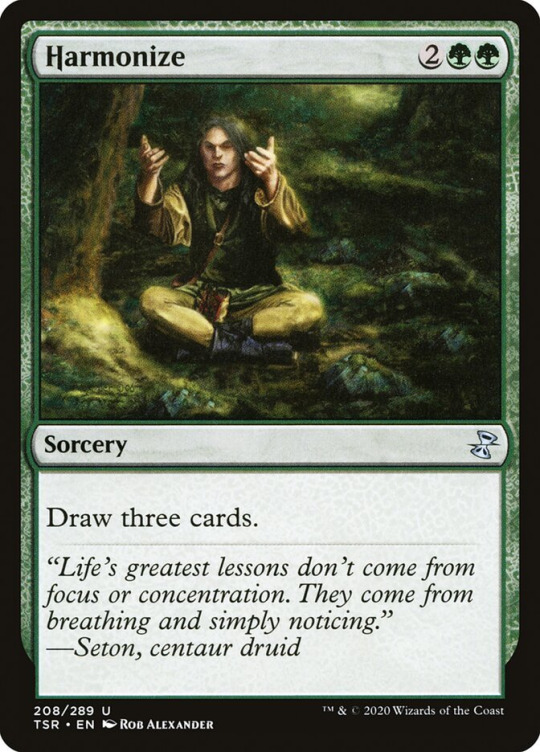
Sometimes the mechanical side of the Color Pie changes and what was once thought to make sense in a color for gameplay and/or philosophy based reasons gets changed, added, removed, etc.
One thing you should always remember, and I can’t state this enough, is that a color doing something it normally can’t isn’t automatically some sort of mistake or Color Pie break. Sometimes colors can do something but only on rare occasions, sometimes there are cards that let a color makeup for a weakness to some degree but at some sort of major cost or downside.
There are times where a set that a color is in has a theme that just ends up applying to all the other colors too. An example of this is Amonkhet’s or Innistrad’s respective heavy graveyard themes. In such sets colors outside of Black may also get more graveyard recursion than usual, in this case, it comes in the form of mechanics like Embalm, Eternalize, Flashback, and/or Disturb.
We’ll come back to Color Pie breaks and bends later. So let’s talk about mana and how it ties into the Color Pie and gameplay.
As you probably already know, in Magic there is a mana system. If you want to cast a Blue spell you need Blue mana, and you can’t just use Blue mana in order to cast a purely Red mana spell-like Shock.
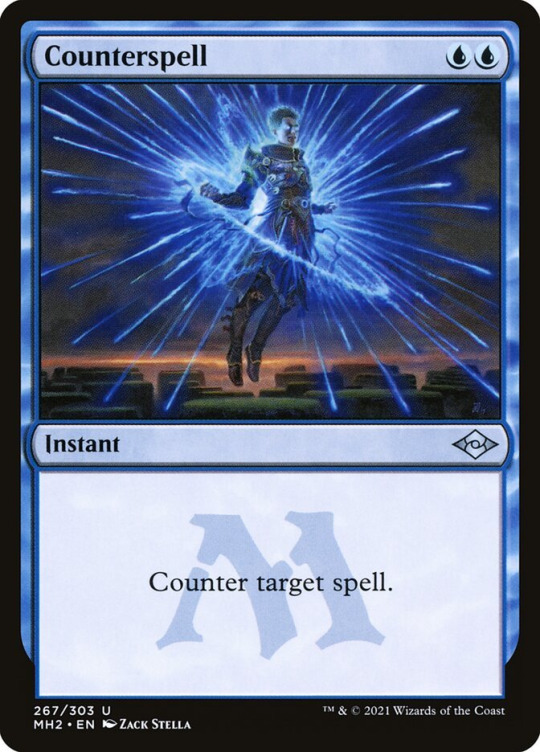
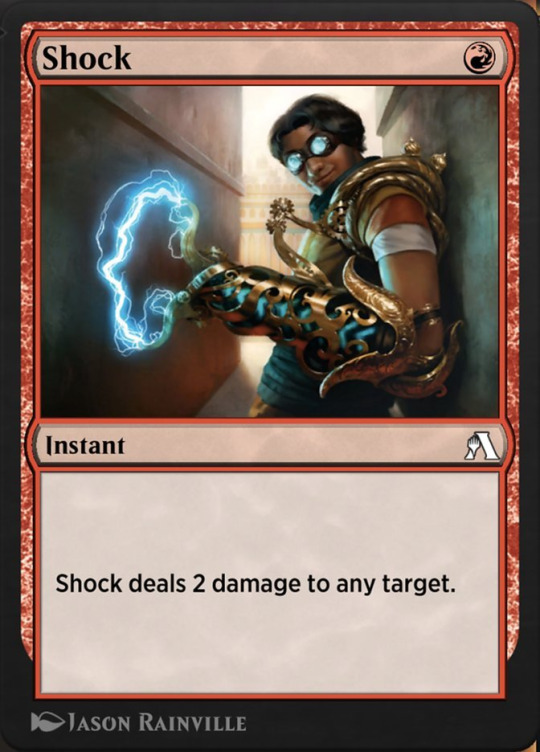
This mana system creates an interesting interaction where players must fight two competing forces within the game. One force is pushing you to play with cards and decks that have as many colors as possible. This is because every color has strengths and weaknesses and the more colors you have in your decks the more likely you will be able to compensate for, and overcome, the weaknesses of each color. You could do something like use Blue to make up for White’s lack of card draw, Red to make up for Blue’s lack of damage dealing, Black’s -1/-1 counters to help Red deal with indestructible creatures, White to help Red deal with enchantments, and so on and so forth.
However, this force comes into direct conflict with the mana system because the mana system actually pushes players in the exact opposite direction.

Since you can’t use the Red mana produced by your basic Mountains to pay for your exclusively Blue mana Opt and you are unable to spend Blue mana to cast you purely Green Gigantosaurus you are encouraged to stick to as few colors as possible in order to increase the possibility that you will have the proper mana needed to cast the spells you need at any given time.
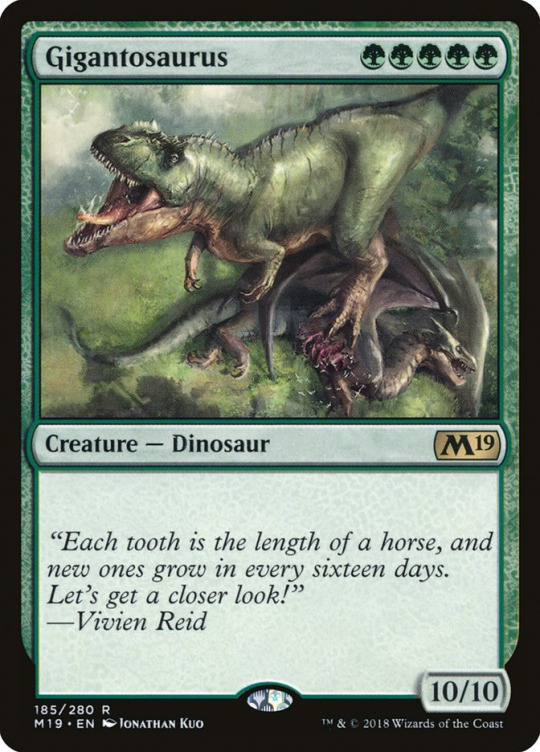
If you’re running a Mono-White deck you don’t have to worry about accidentally drawing a Mountain when you need an Island, but you give up having the presence of Red’s mechanical strengths in your deck and it may make any of White’s mechanical weaknesses in your deck that much more prominent. You are basically forced to choose between variety and consistency to varying degrees on various levels of gameplay. This helps prevent a gameplay situation where five-color decks are literally the only kind of deck worth playing in all forms of Magic until the end of time. These two opposing forces basically force(haha) the player to consider the strengths and weaknesses of each color while also deciding what is the most optimal way to make their deck consistent.
The colors also help give the players realistic expectations of how a match might play out the moment the first lands have been placed down. For example, If I’m playing against Billy and he puts a Mountain into play I now know Billy is playing Red and will likely have some form of direct damage. So I should be careful and play with those factors in mind or else I may end up being punished by having all my small and important creatures destroyed by direct damage. I should also be careful about letting my health drop too low because while a color such as White might not be able to finish me off unless it manages to deal damage with its Flying creatures, a color like Red can just damage me directly with a variety of different spells.
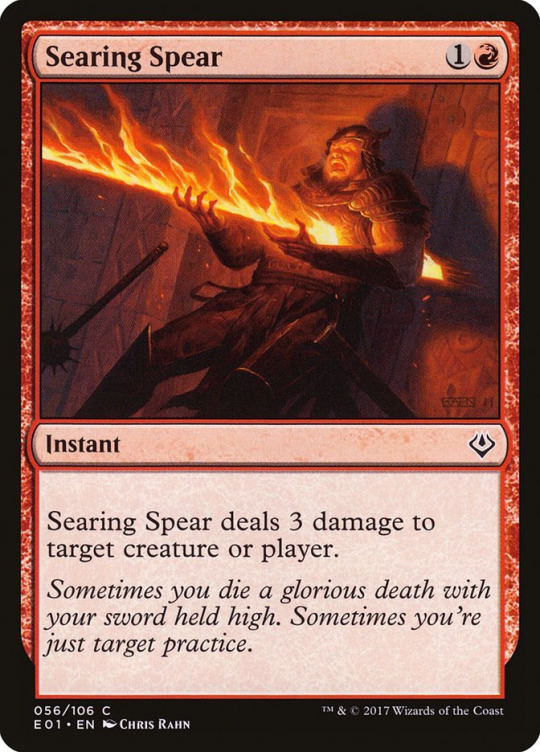
Now if Billy plays an Island I now know he’s playing Blue and that I have to watch out for counterspells. Maybe, I can trick Billy by playing a spell that seems to be important so that if he decides to counter it I can play the spell I actually need to win the game while all he’s out of resources.
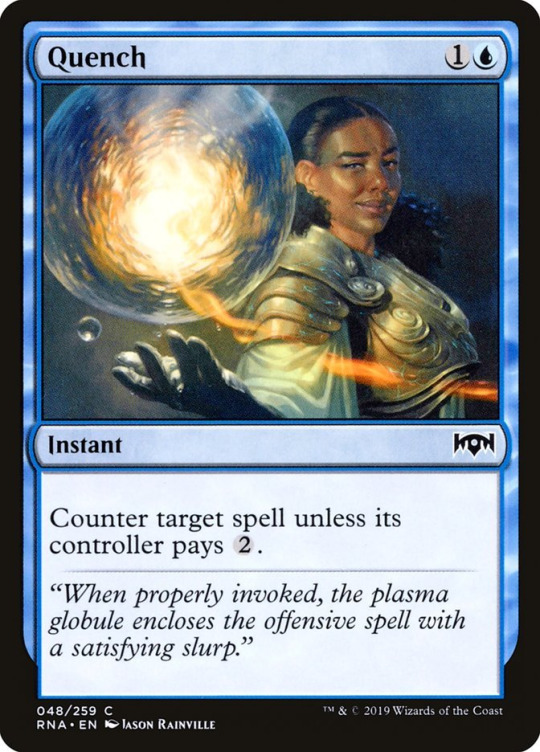
One of the things that Mark Rosewater points out is integral to game design is restrictions and limits. To a random passerby, saying something like this might come off as confusing but it actually makes a lot of sense. Let me put it this way, imagine if Magic the Gathering had no mana costs to consider, you could put any number of cards in your deck(no matter the format), all colors could do literally everything else the other colors could do with no downside, you could pick the exact cards that start in your hand, and had infinite health. Yeah, the game would fucking suck. It is very rare for a game that has no limitations to have any point in playing it. Yeah, I admit that the infinite health example might be a bit extreme. However, even without the infinite health, the version of Magic the Gathering I’ve described would literally play out the exact same every time. Most people would probably end up just running the same deck over and over with the exact same outcomes or they would probably just end up putting more interesting limitations themselves via the creation of new formats. In this way limitations actually breed creativity by forcing you to figure out interesting ways to achieve your goals(As mentioned in “Lesson #18: Restrictions breed creativity” in the “TWENTY YEARS, TWENTY LESSONS—PART 3” article).
Marro has also stated that “To design a good game, you need to understand why your target audience wants to play. And then you have to design your game to match that objective” and at the end of the day we all know Magic is a strategy card game. Part of the fun of Magic is that it’s kind of like a puzzle. It leads to moments like “Ok, I want to play these colors and what’s the best way to do that?,” “Ok, I want to play this specific card, how do I build a deck that supports it?,” or “Uh oh, My opponent played an enchantment that damages me every time I kill a creature, how do I play around it?”
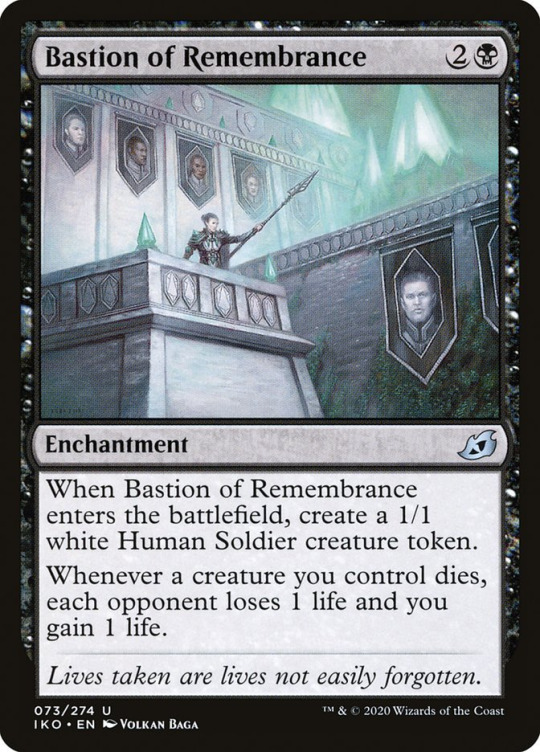
In that last example do you try to kill them before they can amass enough creatures to be a real threat? Do you focus on gaining enough life to counteract their effects? Do you build an army of fliers and try slipping past their creatures? So on and so forth.
Also, Mark does have a good point about the fact that limitations can create really fun stories regarding gameplay. I remember one time I was using my favorite historic Izzet deck and I just barely managed to win at like one health against a Mono-White life gain deck that had managed to get over 130 total life; it was just insane(I really wish I had recorded it. I’m sure almost everyone who has played Magic enough has at least one story where they barely managed to edge out a win in a spectacular fashion through a storm of luck and wits. Stories and experiences like this wouldn’t be possible without the limitations present in the general gameplay and the limitations put on each color.
Luck
I’m going to go off on a bit of a tangent away from just mechanics real quick. It’s something that I feel is important to the game and helps it in many ways and yet it isn’t talked about too often. That thing being luck.
Now, luck in games is a tricky thing. Most people don’t want a majority of their games to be purely luck-based. As that would remove any possibility of using one’s own skills to win and would make any game that isn’t the purest form of casual frustrating. At the same time, there are times where you do want to spice a game up with some luck because if you don’t do that then the game would literally play out the same way time and time again with no variation(which would get boring really fast and limit replay value). The proper ratio of luck to skill in design varies from game to game depending on its genre, mechanics, and goals but I would argue that luck does in fact help Magic as a game.
First of all, there’s the obvious fact that it prevents games from playing out the exact same way even if you or an opponent is running the same deck over and over. If people had complete control over something like their deck order or starting cards in hand then there’s a good chance that after a while any games involving that deck would play out in the exact same predictable fashion. Which would mean that the gameplay is more likely to get stale and/or you are more likely to get bored of your favorite decks.
I would also argue that luck can act as one of the previously mentioned limitations that can be ever so important to game design. It is an obstacle a player must overcome or workaround. In deckbuilding this takes the form of generally trying to make decks reach a certain level of consistency in their function and win condition by choosing the proper cards. It can also take the form of using the cards in your hand in the most ideal or strategically advantageous way, forcing the player to think of the different ways in which they can achieve their goals with different hands or situations. This also applies to facing the same opponent, since said opponents will not always cast the exact same spells, creatures, and various threats in the exact same order, if at all.
Luck is also something that helps even the playing field. It’s thanks to luck that even a five-dollar budget deck has at least a chance, even if it’s small, of beating a finely tuned and more efficient deck. Without luck, there would be very little reason in continuing to play through a game of Magic the second you realized the opponent had a more meta deck than you.
The luck system in Magic the Gathering is definitely not perfect though. We’ve all had that moment where, for some ungodly reason, you somehow mulligan three hands in a row with one land in it and games where you could have easily won if you just drew that one card that should be in your deck. The point of this isn’t to say that Magic the Gathering’s luck is ideal or perfect but I would argue that it helps the game.
#mtg#magic the gathering#color pie#color philosophy#Color Pie Philosophy#TheFlavorOfMagicTheGathering#douglysium#TheTasteOfMagicTheGathering
7 notes
·
View notes
Text
haunted. art dump. part. SIX!!!!!!!!!!! oldest to newest!!! AAAAAHHHHHHHH!!!!!!!
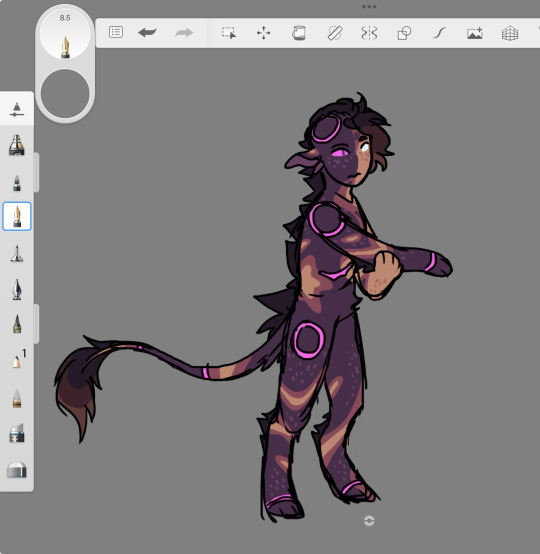
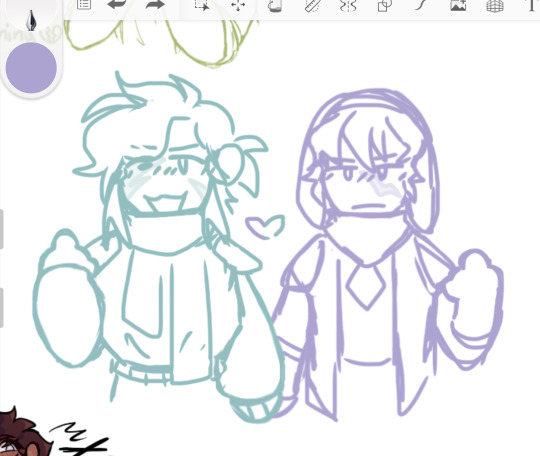
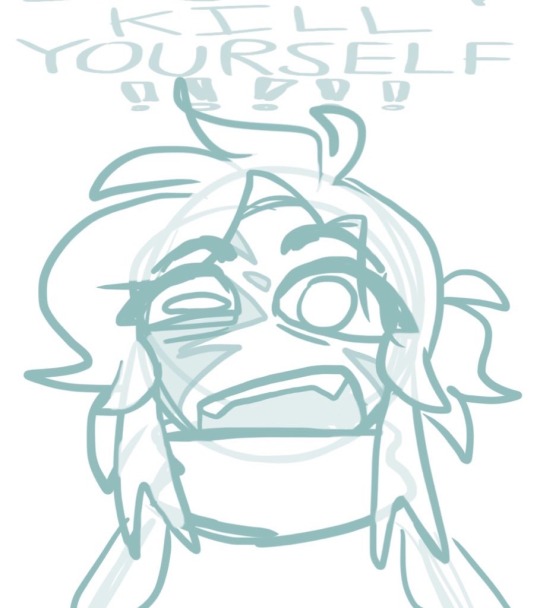
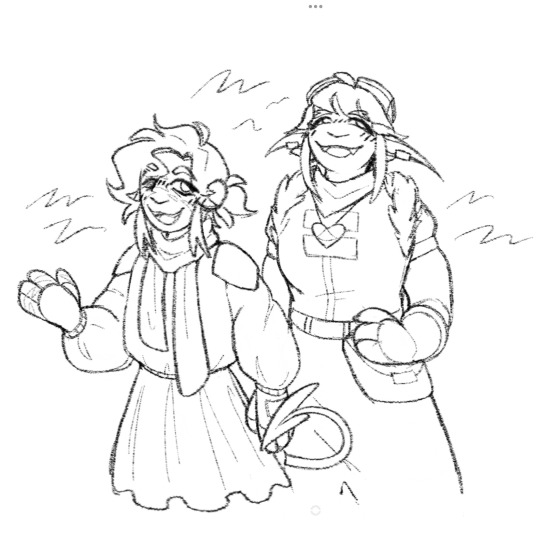
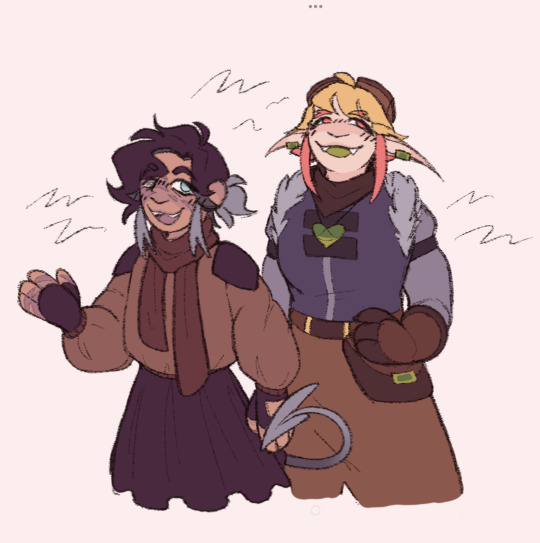

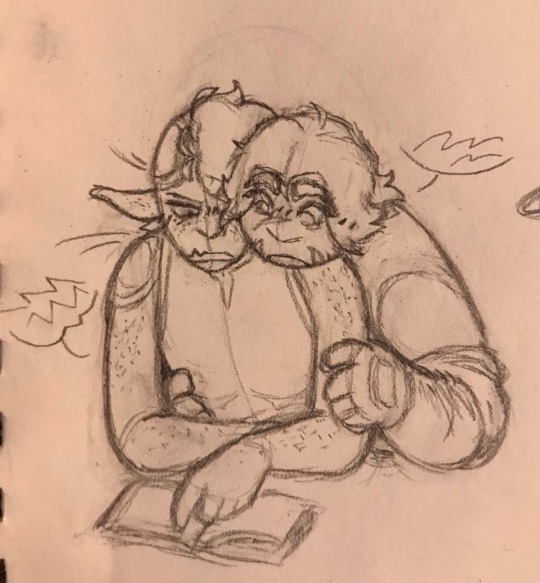

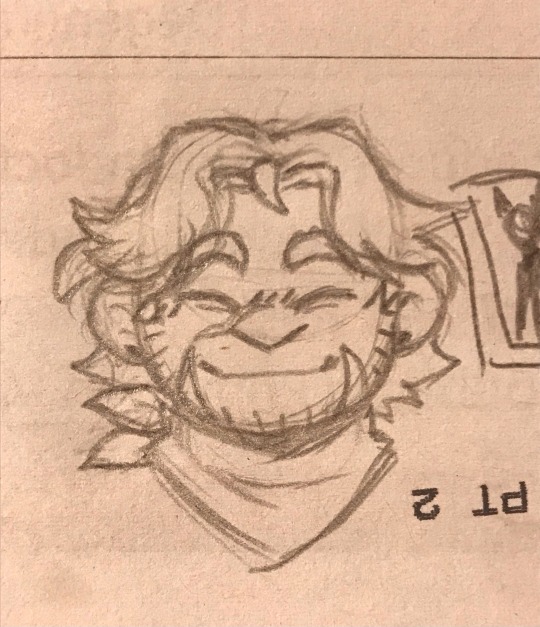
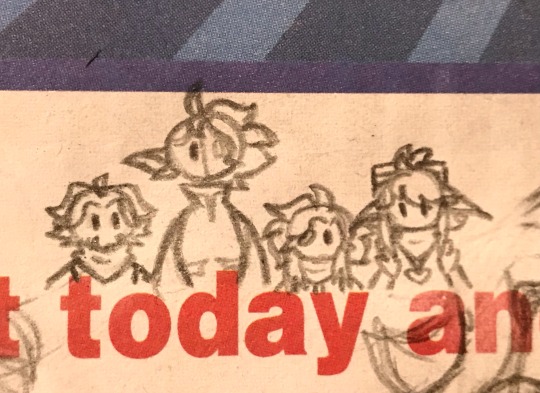
gives them all a kis
#the haunted minecraft#mia and armen are best friends i could talk abt them for SO long but i wont here#i dont rly like mias clothes in the colored drawing of mia and armen but dw i changed it at a later date#ive never actually liked that drawing much but ITS OK!! two cakes philosophy pulls thru always#mias so cutie pie#theyre ALL so cutie pie i love them so bad#drake and grayson are looking at a spell book or list of ingredients or something#i will also take any chance i get to draw drake all fluffy#the haunted fanart#the haunting minecraft#the haunted#rejectedshotgun#digital art#traditional art#doodles#my art#the haunted minecraft fanart#the haunted rejectedshotgun
11 notes
·
View notes
Text
Red
Magic the Gathering (MtG) is a card game created in 1993 that has continued into the modern day. While much of its success can be attributed to creative ideas in world building, gameplay, and characters, pieces of it are hinged on one of the games core concepts: the “Color Pie.” In Magic, every card is grouped into one of a few categories: White, Blue, Black, Red, Green, Colorless, and…

View On WordPress
#ADHD#art#atarka#boros#color#color explained#Color Philosophy#color pie#color pie magic#color red#creation#destruction#Discussion#Emotion#grixis#gruul#haste#Homer#homer simpson#izzet#jeskai#jund#kolaghan#Life#m#mabel#mabel pines#Magic#Magic Card Game#magic mechanic
10 notes
·
View notes
Text
Mtg color pie analysis:
"You've just won the lottery! What do you do with your money?"
White: Donate to charity
Blue: Go to college
Black: Start a business
Red: Buy a car
Green: Gift it to friends and family
15 notes
·
View notes
Text
A couple of points that you did bring up but I want to expand on because I’m writing an essay on Black and I’m trying not to explode.
Black is Not Just A Loner
While Black can lean into “have no real friends and just look out for yourself” that’s not inherently what the philosophy is always saying. What it’s specifically been saying is to look out for yourself first. You can have friends and family just make sure you prioritize your own needs and wellbeing first. And sometimes Black does have a good point, I mean how can you expect to help anyone if your not at your very best. If you are not at peak condition and doing that sometimes means being a bit selfish. Taking the resources you need to thrive, cutting people off, removing obstacles, etc.
Some people think Black doesn’t care about things like society but this isn’t really true. Black does have systems it likes (as all colors do) and from Black’s perceptive it kind of is doing what’s best for society. Having a world in which everyone looks out for themselves and can take care of themselves leads to stronger individuals who then make up a society that is made stronger by said individuals.
Black and Blue
I ended up talking about Blue’s relationship with Black more extensively in a super long 100 page essay but I’ll try to keep it brief. Blue and Black is one of the more fascinating allies because I don’t think a lot of people consider WHY they are allies. If Black is just “evil” how is it an Ally with blue who is then an ally of White. Shouldn’t Blue also be enemies with White or Black what’s the bridge here?
Well what is Blue all about? Blue is “perfection / progress through knowledge” it believes that almost anything can be achieved with the right amount of time and knowledge and it seeks to use this to improve both itself and the world around it. This is where White and Black come in.
White is all about putting other people or the greater good above yourself and this often leads to an emphasis on improving the world or society or what have you. Black is more individualistic so it’s all about improving the individual or the self. So it makes sense that Blue, a color more focused on improving everything it can, would fall between these two ideologies.
All three of these colors also have themselves of control. Blue is the most obvious because it tends to believe you have free will and can master just about anything with the right knowledge. White tends to use control as a tool to get people to behave and look out for the group via things like laws and morals. Black, like Blue, does actually tend to believe in free will and is all about saying that you need to do what needs to be done to take control of your life. This agreement is most obvious with factions like Esper (a shard that literally has even the clouds controlled with mathematical precision).
Black and Blue also share heavy themes of hope stemming from the idea that you can mold yourself or the world around you under the right circumstances. They are both enemy colors of Green, a color that tends to be more pre-deterministic.
The Color of Hope: Ambition, Necromancy, and Black Mana
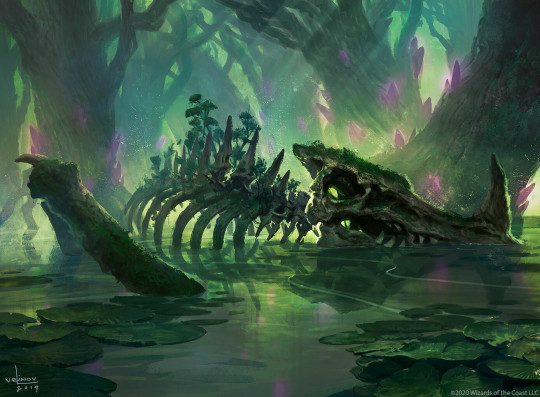
Black is one of the most misunderstood colors in Magic: the Gathering, not least because it appears on the surface to be so straightforward. Look at the most iconic black cards of Magic and you'll see deals with demons, necromancy, mass destruction and cruelty and suffering–the trappings of classic fantasy evil. Even the color's symbol itself is a skull, a universal signifier of death and danger.
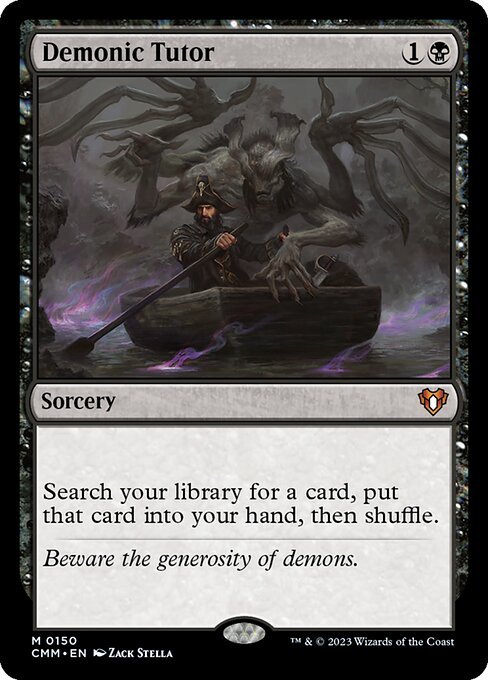
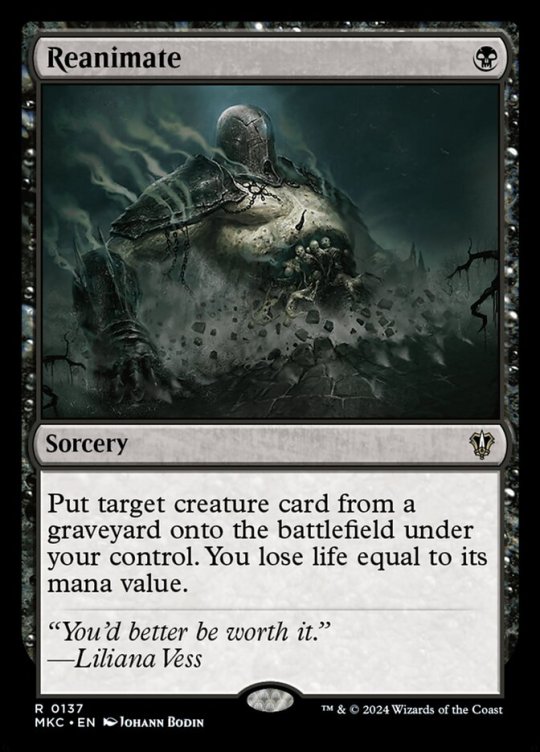
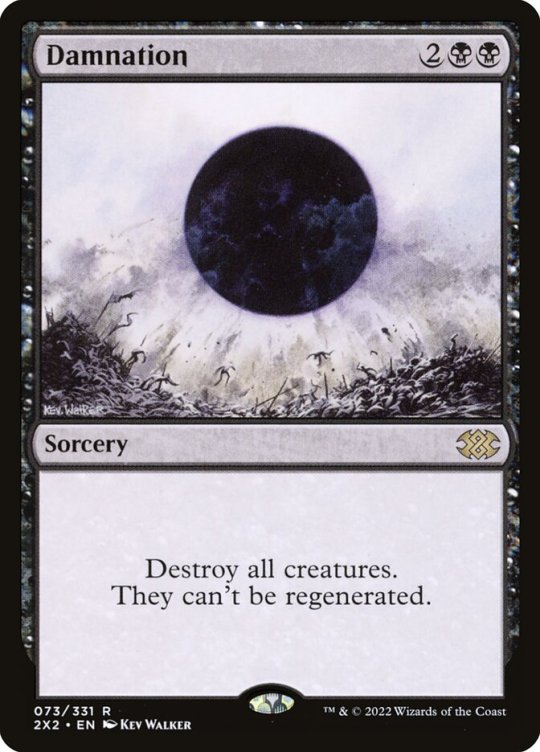
And in early Magic that seemed to be all it was. White was the color of Fantasy Good, black was the color of Fantasy Evil, and the rest of the colors were... fire magic? Elves? Whatever odd but intriguing skeleton affairs are implied by Time Walk?

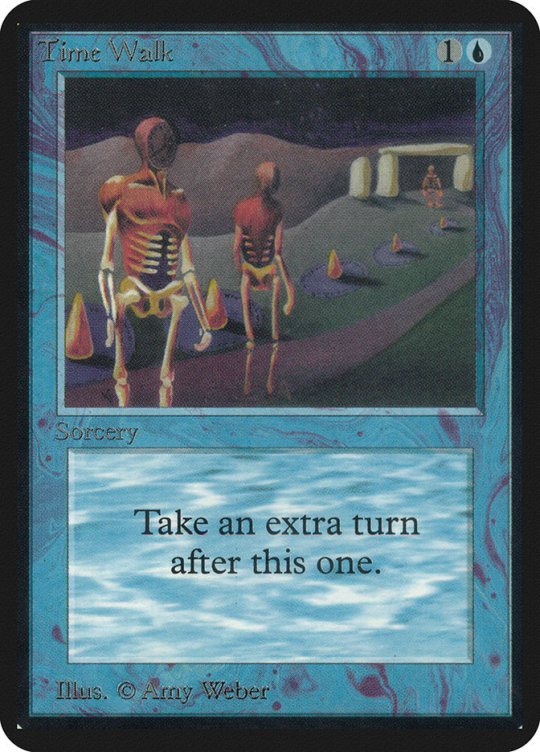
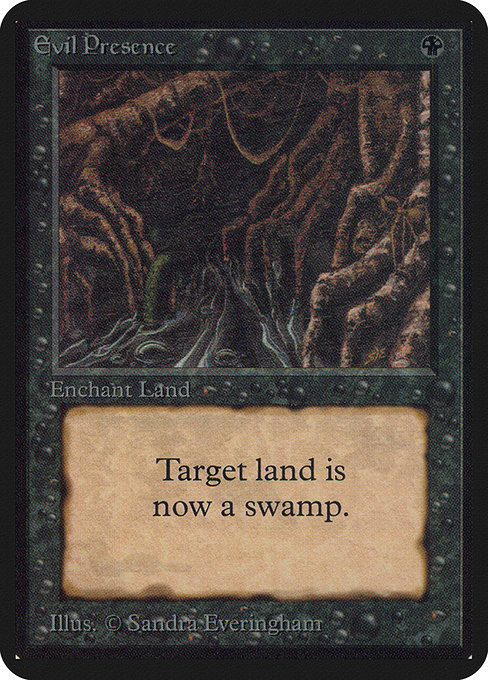
Gradually, though, Magic deepened as both a game and a storytelling medium. The color pie grew into itself as a system of complementary philosophies, archetypes whose associated aesthetics were only part of the full picture. Their arrangement around the wheel, below, is highly deliberate; neighboring colors are said to be allies with a high degree of philosophical and mechanical overlap, while colors on opposite sides of the pie are known as enemies, more likely to disagree on fundamental levels.
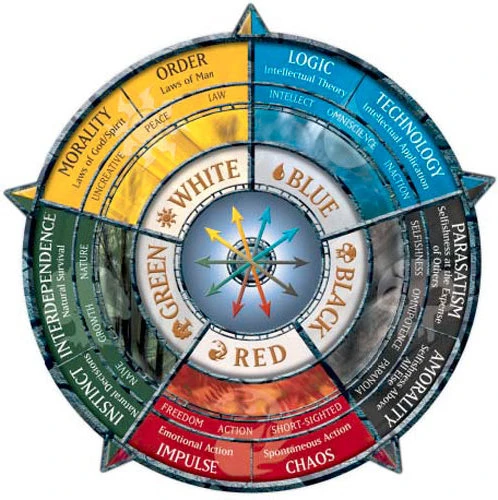
Black stopped merely representing capital E Evil and became the color of striving for power; unlike its peers, black felt that nothing, least of all morality, could prevent it from seizing what it wanted. Mark Rosewater's 2015 article about black emphasized the color's focus on the self:
"Black's philosophy is very simple: There's no one better suited to look after your own interests than you... Many costs require the sacrifice of others for your own advancement. Because it puts itself first, black is always willing to make this trade. The weak must fall for the strong to thrive." -Mark Rosewater
At its worst, black is an exploitative, amoral color that prioritizes itself at the expense of all others, allowing the "weak" to fall and scorning the very idea of compassion. Rosewater writes that black is "always willing" to trade others for itself. And these can certainly be parts of black's philosophy, when taken to its worst possible extremes, but they're far from the entire story.
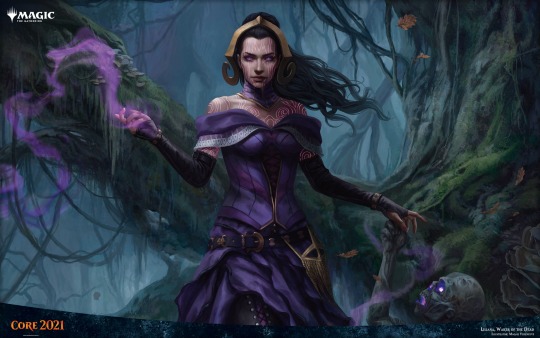
Over time, Magic's outlook on black gained nuance. Magic story introduced protagonists like the necromancer Liliana Vess, whose craving for immortality, seemingly exploitative nature, and demonic deals called back to the oldest portrayals of black–and yet she was not one-dimensionally evil. She underwent character development over the years, learning the value of reclaiming herself and standing beside others, and at no point did she become any less mono-black for it. Remember her; we will come back to Liliana and her story later.
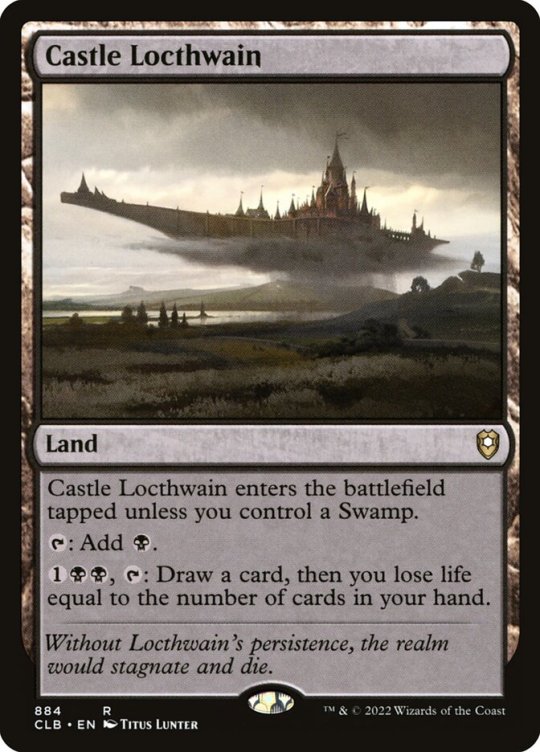
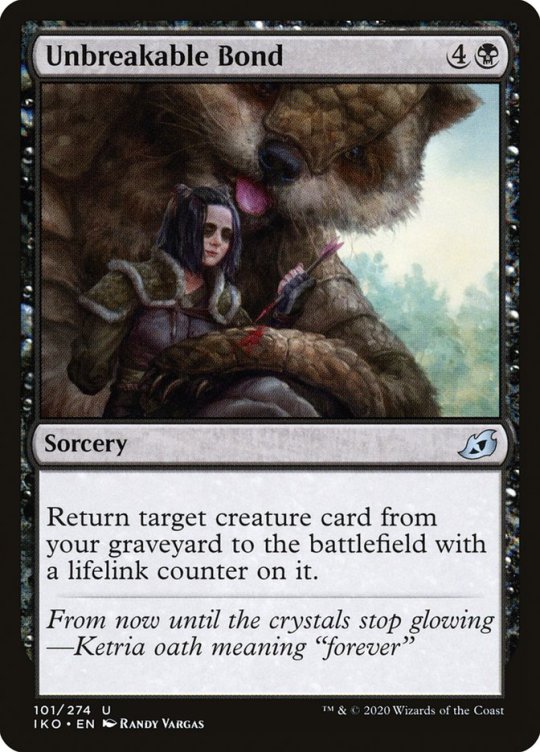
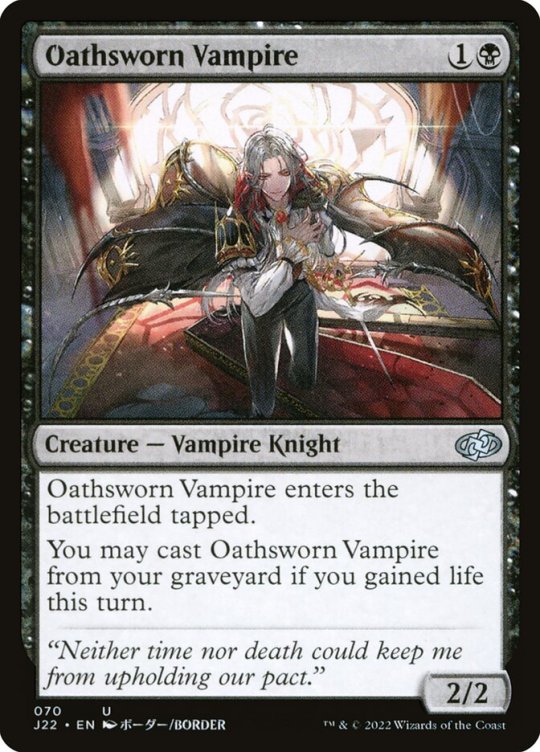
In addition to the usual death and decay, black cards began to feature a theme of relentless devotion. On the plane of Eldraine where each color represents a virtue, black's is persistence, explicitly as important as any other color. On the plane of Ikoria, the love between bonder and beast pulls Winota back from the brink of death. Wherever this Oathsworn Vampire printing is set, its flavor text is quintessentially black. It's the same self-driven attitude as before, but cast in a different light: black is nothing if not persistent when it's got its heart set on something (or someone) it cares about. Nothing, least of all the grave, will keep it down. After all, black will always come back for its own.
These newer cards uncovered the true face of black as a color capable of both great love and harm (sometimes even the latter for the sake of the former), and suggested a tantalizing new thread: perhaps putting yourself and yours first isn't all that bad, necessarily. Black is a deeply protective color; it says you don't just have to accept what you're handed, it's okay even to be furious about it (hello, ally color red), but let that galvanize you to do something about it.
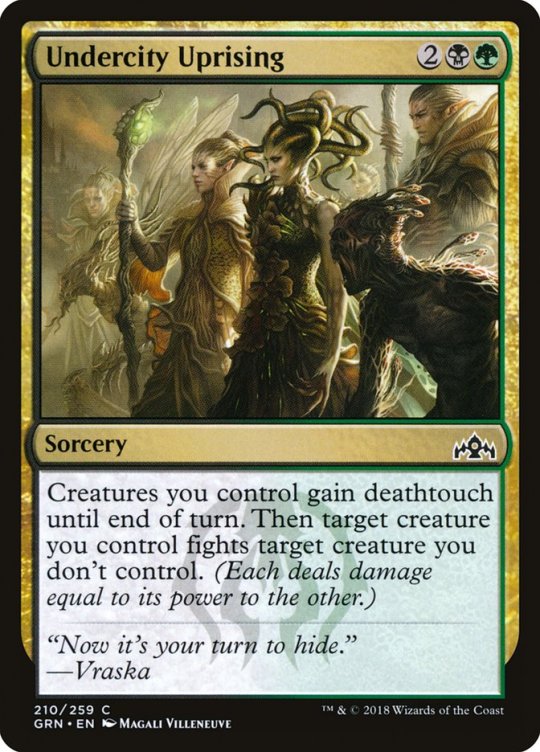
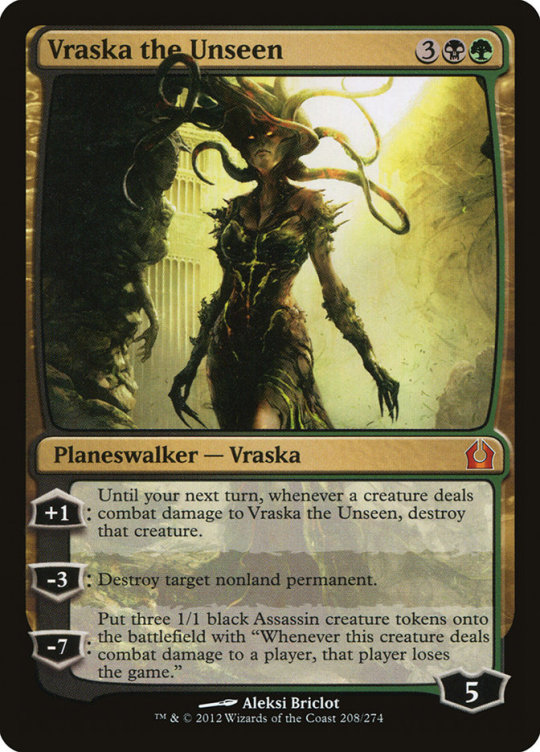
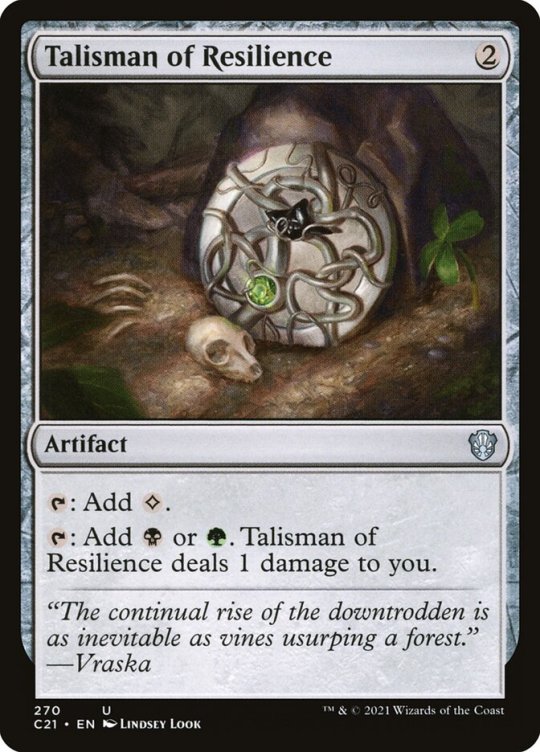
Vraska, a gorgon who faces extreme discrimination on her home plane of Ravnica, triumphs by reclaiming herself, gorgon powers and all–and even more radically, loving herself. She displays traits often considered the purview of white and green, such as a love of home and a drive to elevate the oppressed, but they are all filtered through the lens of her black alignment. Vraska staunchly refuses to deny herself or her people, the Golgari Swarm, of their value. Nor does she allow law or propriety to prevent her from championing them by any means necessary–even if that means cold-blooded murder, or aligning herself with a villain like the Planeswalker Nicol Bolas.
"[Vraska] thought of Mazirek, of the kraul, of the rest of the Ochran assassins and the malignant Jarad who reigned with casual ruin over the most downtrodden of the downtrodden. She remembered her years of isolation, and the heinous cruelty of the Azorius, and how no group deserved to suffer as much as those who would subjugate her own. Eliminating that hell was all she ever wanted." -The Talented Captain Vraska, Alison Luhrs
Like Vraska, black loves fierce and hard, willing to break any taboo for the sake of those it cares about. And it whispers, the entire way through, you are enough. You deserve better. No matter what others may say or do, you are enough.
"If I am to be met with disrespect, then I must first love myself with a fierceness no fool can take away." -Vraska in Pride of the Kraul, Alison Luhrs
Even black's "ruthlessness" isn't as fundamentally cruel as it appears, centering a passion for problem-solving (shared by its other ally blue) instead of a blunt disregard for others.
"People don’t understand the word ruthless. They think it means 'mean.' It’s not about being mean. It’s about seeing the bright, clear line that leads from A to B. The line that goes from motive to means. Beginning to end. It’s about seeing that bright, clear line and not caring about anything but the beautiful fact that you can see the solution. Not caring about anything else but the perfection of it." -K. A. Applegate
All of this comes together to make a black a color not of evil but of strength, integrity, and persistence. And that's all well and good, but I'm going to take it even further and put forward a new proposition: that black is the color of hope.
Of the nine mono-black Magic cards with "hope" in their names, all but Liliana portray black as an instrument of hope's destruction. This is, once again, black's flaw taken to its extreme–crushing others to achieve its own ends–but neglects black's own relationship with hope.

Black, more than any other color, requires hope to stay alive.
For black to persist, it must believe in a light at the end of the tunnel, a future in which its goals are realized. As long as it does, it will endure any hardship, walk through fire, and turn reality itself upside down on its way there. Primal, desperate ambition is the engine of hope that burns at the heart of black, keeping it always one step ahead of stagnation. Bitter and stubborn, black believes tomorrow will come because there is no other choice. After all, for black to relinquish hope is to let itself wither, regress, and die–an unacceptable outcome.
Thus, it is monumentally difficult to strip black of hope. That only makes it all the more crushing when it happens, when black contends with the idea that there is nothing it can do.
Black's deepest, darkest fear is helplessness.
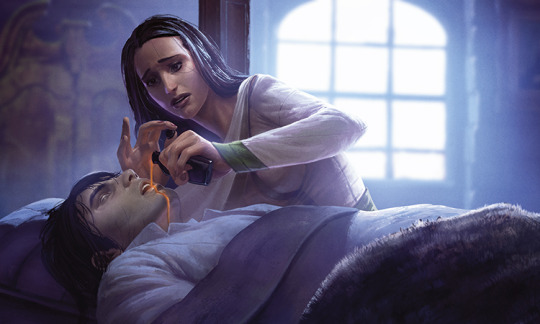
Like any mono-black character, Liliana Vess is driven at her core by a seething, desperate hope. When Liliana first unlocks her necromantic power, it is out of a sheer refusal to allow her ill brother Josu to die, even when the esis root that would cure him is destroyed by enemy witches in an undead-raising ritual. She defies her previous training as a healer, which taught her only to take the safe path, in favor of a higher-risk and higher-reward approach: stealing life from the witches themselves to restore power to the esis root she needs. It is her knowledge that her brother needs her, and her sheer stubborn will to succeed, which allows her to defeat the witches against steep odds.
"Six foes, and Liliana stood alone. But Josu's life depended on her, and the power blossoming within her was more than enough." -Liliana's Origin: The Fourth Pact, James Wyatt
Tragically, however, Liliana's attempted cure goes horrifically wrong, transforming Josu into an undead being plagued by eternal suffering. In his pain, Josu attacks Liliana. For a while Liliana holds out hope, finding the power to fight back while she determinedly searches for a spell to reverse the harm she's done. It is when she realizes this isn't possible that her strength falters.
"All this time, she had believed… that she could turn the power of death to the service of life and health. That a healer should use every tool at her disposal. But Josu was the result, a horrible fusion of life and death, and all her spells meant to manipulate the life force of the living could do nothing to harm the dead." -The Fourth Pact
Liliana learns that even her own dark magic, fueled by determination, cannot solve the problem she's created. She discovers the hard limit of her willpower, and the despair of this discovery is what causes her Planeswalker spark to ignite.

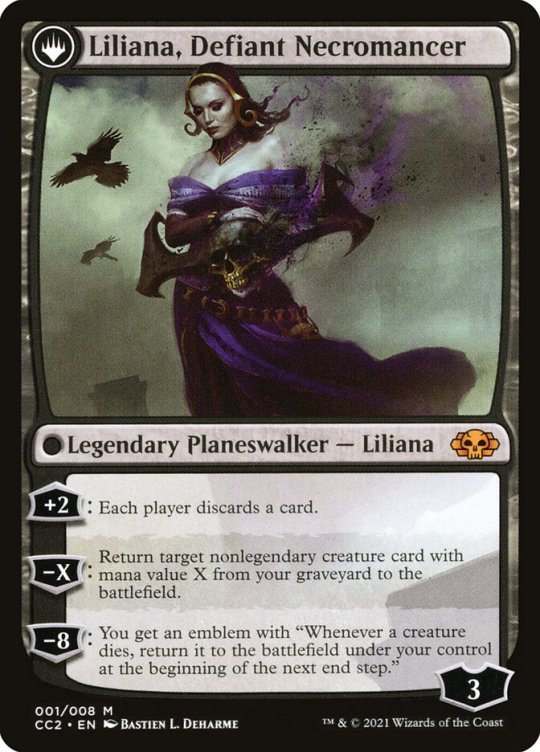
At this time Planeswalkers are as gods, immortal and near-omnipotent. Liliana spends decades enjoying this affirmation of her capability before the Mending strips her and all her peers of their power, reducing them once again to mortal mages.
"Then the Multiverse reshaped itself, robbing her—and every other Planeswalker—of the godlike power they once had wielded. Some called it the Mending, as if something broken had been repaired, but to Liliana, it seemed the opposite. It broke her beyond any hope of repair." -The Fourth Pact
Once again, it is Liliana's fear of helplessness and her refusal to accept it that drives her to push beyond the bounds of propriety–this time, to make a pact with Nicol Bolas and four demons to maintain her immortality. It is not enough for her merely to delay death; she requires the security of knowing she is fully beyond its reach, that she will never be helpless before it again as she was with Josu.
"Holding death at arm's length for whatever years are left to me? No, that's not enough. I want to be free of its shadow." -Liliana in The Fourth Pact
Black isn't like its enemy colors white and green, which are superficially associated far more often with hope. Unlike white, it doesn't believe that conviction, justice, and community will bring about rightness. Unlike green, it doesn't trust in the wisdom of the world or the natural order. Black believes that nothing will change unless you make it change; ultimately, black's self is the only one it can trust to bring about the world it needs. In addition, black lacks its enemies' idealism. Instead, it strives to be a pragmatic realist, making a final assessment of defeat all the more definite and crushing.
While white and green are more amenable to finding hope and holding it aloft as a banner, black claws hope desperately to its chest with shredded, bloody fingernails. Every ounce of hope black has, it tore by itself from the clutches of an uncaring world.
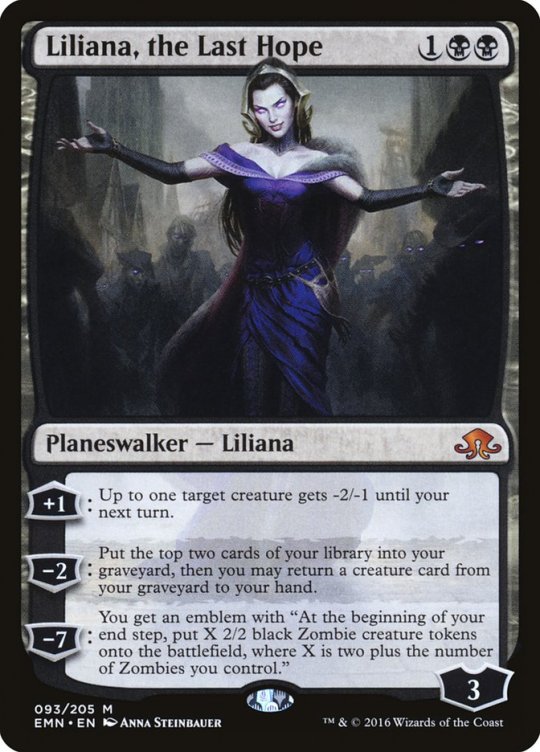
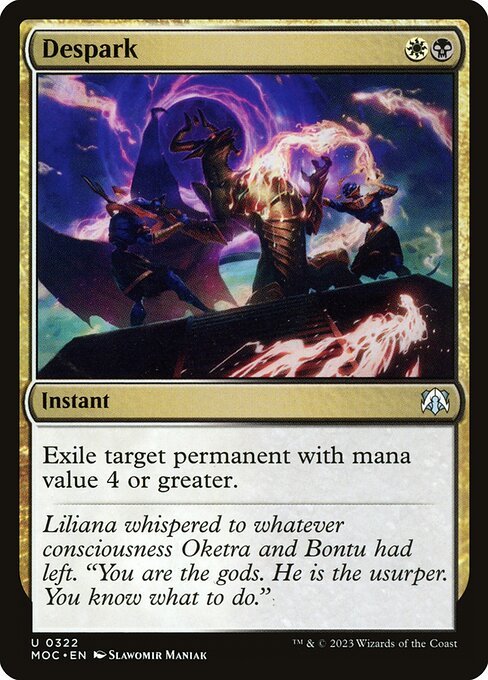
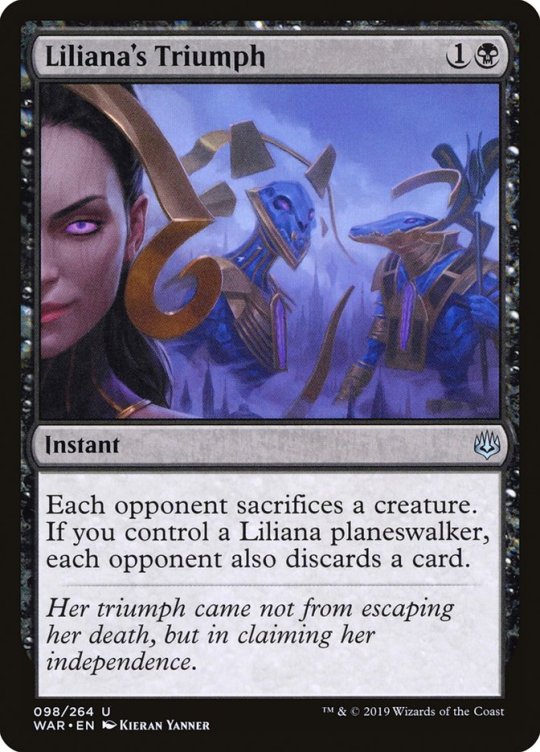
Ironically for such a self-driven color, black's fierce hope is the greatest asset it can provide to others–on its own terms, of course. It was Liliana who turned the tide of battle against the Eldrazi titan Emrakul, defiant in the face of cosmic despair. And when Nicol Bolas made his bid to return to godhood, using Liliana's necromancy to command his undead hordes, Liliana finally turned against him. In reclaiming her power, so too did she use it to free her fellow Planeswalkers from Bolas' assault. Her fear of helplessness no longer shackled her to him; agency and autonomy were hers at last.
The triumph of black, its moment of ultimate victory, is the hard-won fulfillment of its hope.
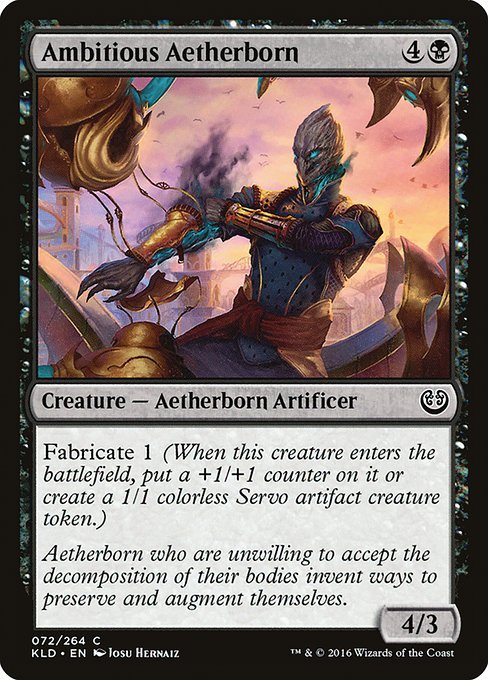
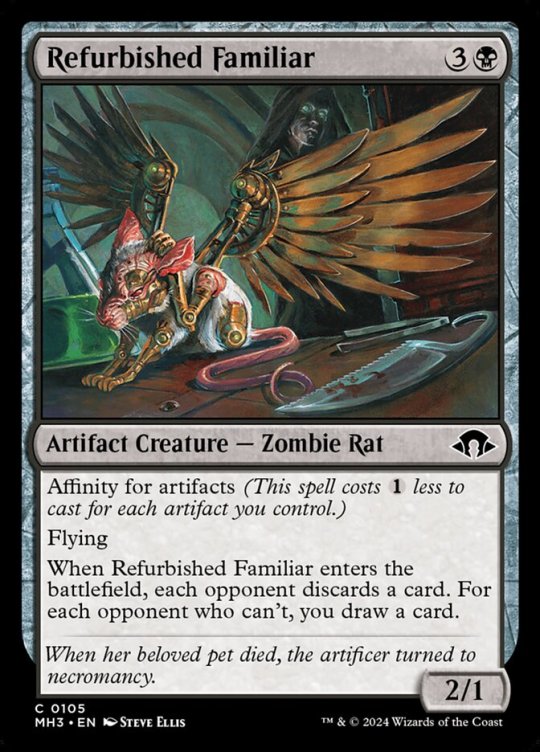
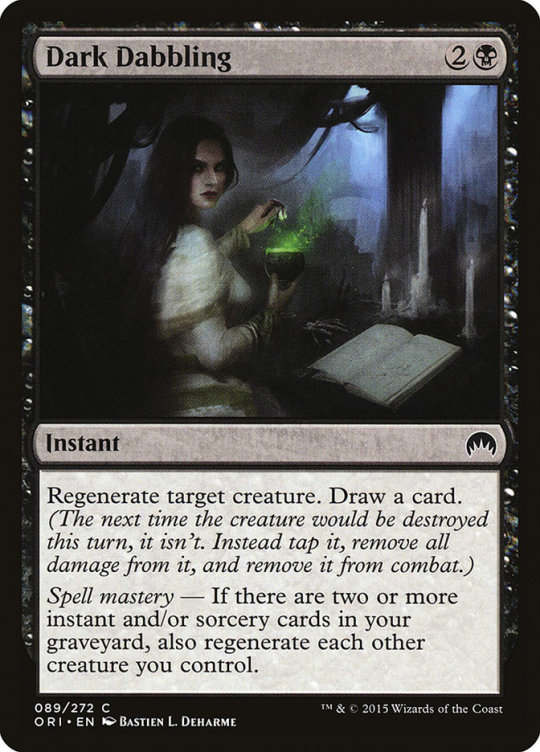
"Do not go gentle into that good night. Rage, rage against the dying of the light." -Dylan Thomas
An aetherborn, railing against the shortness of their natural lifespan, constructs a new body for themself with their own bare hands. An artificer's grief over her lost companion causes her to push invention to its limits. A young girl who loves her brother calls on the darkest of powers to save him. As it turns out, necromancy–that original thematic keystone of black–is only one of black's many, many refusals to let go of love and hope once it has them, even in the face of the ultimate end.
Time and time again, black–in love with life, ablaze with hope–looks the Grim Reaper in the eye and tells it: "Not today."
1K notes
·
View notes
Text
Doing The Right Thing: An Analysis of White's Monologue. (MTG)
This will be an extensive analysis of "My Words: White", in which game designer Mark Rosewater talks at length in the words of Mtg's mana color, White. This roleplay approach to explaining the color pie's differing philosophy and why they have a predisposition to certain tactics is my favorite, and I've been eagerly awaiting a return to pie philosophy since the last article was written years ago.

>"To explain my philosophy, I would like to begin by taking a step back and looking at the world as a whole. There are a lot of problems. There is crime, injustice, hunger, disease … just an endless amount of suffering."
White, consistent with its past interpretations, pitches itself as a solution to the world's problems. Not necessarily a problem, plenty of philosophies do that. Especially memetics which want to spread. No one likes crime, injustice, hunger or disease; so this acts as an effective hook. >"But here is the important thing—there does not have to be. I will use hunger as my example. There is enough food for everyone. Starvation happens not because we do not have the means to feed people but because people prioritize things over the welfare of others."
White likes to emphasize that evil isn't something inherent to the world, it's something that's infected it. A contagion that humans have brought with them and that humans can get rid of. This certainly is more compelling than the "There's nothing you can do about bad stuff existing." That White's enemy Black is known for. But take note that White's thesis statement here is that humans are the cause of other human's suffering. >"Most suffering happens because we choose not to stop it. But we can. The potential for a utopia is real. We have the means to get there."
I don't know if its manipulative or just compelling, but putting blame and guilt on the reader for specifically *choosing* not to stop evil is very interesting rhetoric. To take White in good faith, this is more a textbook call for action than some armchair psychologist "manipulation". But this is once again putting human suffering on human's choices. Associating suffering with human activity is consistent with White's ally Green, and citing potential for utopia, and the possibility of a world beyond our dreams is consistent with Blue; White's other ally. >"It only requires us to make one change. I will acknowledge it is a big change, but it is a doable one. We simply need to learn how to put the needs of the group ahead of our own personal needs. Instead of asking, "What do I want?" we must learn to ask, "What does the group need?" If each person thinks about the needs of the group and acts accordingly, we can create a utopia where everyone has their basic needs met."
Another piece of rhetoric White uses (and has used in the past) is presenting its philosophy and changes as simple and actionable. For a sales pitch for anything to work, what the reader has to do cannot be presented as overly ambitious, even if its a big change. It can't scare them away. Claiming that it's philosophy is only "what does the group need?" also implicitly says that everything after this is for the needs of the group. Not that I'm trying to paint White as not having the group's best interest in mind; Its a philosophical concept, I don't see it as needing to lie to the viewer besides about its enemies. But I do want to point out the argumentative tactics that White has been using in order to make its philosophy as appealing as possible. >"So, why is everyone not doing this?" "The temptation to do things that will benefit you is strong. That is the conflict we are up against. But there is good news. People inherently want to help one another. There is a natural goodness within each of us that seeks to help others. I admit it is more apparent in some individuals than others, but it is there in all of us, and you can witness it if you look around your community."
Note the use of "we", everything White says is to make the reader see them and it as working together against a shared enemy. White makes a Green (and scientifically proven) statement of humans inherently wanting to help each other, a sentiment that their shared enemy, Black, despises. >"But how do we get from where we are to where we need to be? First, people need guidance. People will do the right thing if you nudge them in the right direction. How do we do that? The answer is simple: structure. Humans are creatures of habit. If you can provide the incentives to act correctly, they will, and they will continue to repeat those behaviors. That is the key; we have to create a society where helping one another is core to how it is built." Another scientifically proven point that White uses for it's pitch: good behaviors will naturally emerge out of a system which rewards them. This is the reason behind White's obsession with structure. While White believes people naturally want to be good, it doesn't believe them to know precisely how. >"If one does the wrong thing, they get punished. Maybe you lose some of your resources, like money. If it is serious enough, you can lose your freedom and be locked away."
When speaking about it's enemies domains (money and resource hoarding is associated with Black, and freedom associated with Red) White isn't being outwardly hostile yet. White believes in the merits of money and freedom, but also doesn't see either as sacred. But rather, these are acceptable loses should one jeopardize a utopia. I believe this to be an important point to the understanding of the pie in 2025+. The Colors are (or atleast we know White to be) not actively spiteful of what their enemies want, they just see too big an obsession on those things as threats to something obviously more important. >"The most useful tool to tackle selfishness is morality. You have to teach people that there is an objective right and an objective wrong. If you do right, you are good. If you do wrong, you are evil. There are rewards for being good and punishments for being evil." "good people get to become part of the community, and evil people are shunned from it."
Here's the Black vs White axis, Morality. Interesting to me is that White does not see it's own motivation for good as enough for people, and that there have to be incentives outside of it. The mere absence of a utopia isn't enough. For as much as the White stereotype is obsessed with the right and wrong thing, actual White is fine if people focus on rewards and punishments instead of right and wrong for their own sake.
White phrases community involvement as a privilege, intentionally or not. If you're good, then you get to be in our society. Even though White says people are inherently good, White respects and fears the ease that people discard that goodness. This is a key part of how White sees Black; alluring. Even in old interviews, White refers to evil as "knowing how to tempt people" and earlier in this letter, it mentions the temptation of evil. This possibly gives context to the boarderline manipulative rhetoric nearing the start of the article. White knows that on the face of it, Black is flat out more tempting. Insert a joke here about how no one wants a white guy telling them what to do. >"A lot is on the line. One path leads to peace, the other suffering. Each rule that is broken means someone is hurt. If we have to take a heavy hand to ensure peace, to ensure that people can live a life without suffering, it is what has to be done. We are fighting a lot of powerful forces, so our messages have to be loud and clear." Speaking of unappealing aspects of White, it's "greater good" mentality is possibly the easiest way to make a White aligned villain; and the philosophical reason it has access to the vast, vast majority of the games boardwipes. So much so that the colloquial name for a boardwipe, a "Wrath" is a shortening of a White card: Wrath of God. If White believes that doing an evil thing will cause a greater net good outcome, it sees that evil thing as now being good. White's moralizing has no qualms with pulling the lever on the trolley problem; a solution many philosophers have come to already, and a testament to strong moral principles. But even these strong moral principles are certainly able to turn villainous given large enough scope and a song played in minor key. Interestingly, this "at any cost" mentality towards its goals is shared with Black (if to radically different ends), making Orzhov the color combo most willing to make sacrifices.

>"The most useful tool to tackle recklessness is the law. The law presents a list of things you are not allowed to do because they endanger society. If you commit one of these acts, there is a punishment of proper weight. The greater the threat to society, the larger the punishment. It is important that these rules are public and clear. They delineate from what you can do and cannot do. Like morality, there should not be any gray areas in these rules. Also, as with morality, you need to teach the public that breaking these rules leads to consequences. But what about people accidentally getting caught up in the system? What if someone does something wrong but for an important reason? Perhaps someone kills another, but only in self-defense. This is where you get the judicial system. People can judge the circumstances to make sure that people are not punished incorrectly."
A very interesting piece about White's world view (and one of the only places I vehemently disagree with it on) is a hatred of so called "gray areas" in morality and law. White is frequently painted as deontological, and this fully leans into the stereotype. You are either evil or you are good, you either did an evil thing or you did a good thing. And any nuance in actions or circumstances only serves to influence the final verdict. This isn't to say that White believes something like murder is always evil, just that with proper circumstances such a thing instead becomes good. A hate of gray often gets seen as a blindness to complexity of circumstances, but White instead seems to mean that the end result is a binary of either good or evil.
>"there might be others outside your group that have ill will toward your society. That is why you also need a military, to provide someone who can protect against those who wish your society ill."
White has gone from "Mine" to "Ours" to "Your", fully trying to get the reader to identify with it's ideology without thinking about it. Again, this isn't like some evil scheme, just a notable rhetorical device. This also reinforces White's idea that there are enemies who are wishing you, and more importantly; your utopia, harm. >"The combination of morality and law is important because it gives depth to your message. You should not kill for two reasons. First, it is morally wrong. Second, it is against the law. This means there are all sorts of repercussions—these disincentives can be physical (you will go to jail), emotional (people will shun you), or spiritual (you will be punished in your afterlife). Different people will prioritize different incentives, so the breadth of responses will help motivate a wide variety of people."
White sees its two different axis (law for Red and morality for Black) as incentives for its worldview for two different kids of people. Crucially, morality has more appeal to the Red and Green side of the pie (emotional and spiritual respectively) while Law has appeal to Black and Blue (self interested and systematized) >"Now, Blue cares a lot more about the civic side of things (government, law, the courts) than the moral side. Blue is a little more focused on constant improvement over the impact such decisions have on the people. For example, Blue is much more willing to allow people to fall through the cracks if the overall system is improved. Blue is trying to raise the ceiling (creating the highest potential), while I am more focused on raising the floor (ensuring an absolute level of care for all). But we have a lot of shared goals."
A common critique of White, being the color of society, is that people can fall through the cracks of a society. This argument, while fallacious, is addressed; and White levies such a flaw unto Blue more than itself. This paragraph also supports my assessment that White's two incentives appeal to apposite pie ends, and I predict this will be a trend with pie traits going forward. >"My biggest issue with Blue is that Blue spends far too much time caring about the individual. Just as Blue wants to optimize society, it wants to optimize each member of that society. To do so, it will distribute things in ways that I think of as unfair."
The color pie addage "to find what a color argues about with its allies, look at the ally's ally" applies here. Whites issue with Blue is its issue with Black, just to a lesser extent; too heavy a focus on individuality and unfair distribution of resources. >"Where Green and I most differ is the role of restraint. I believe that to have an orderly society, there have to be rules in place that keep people from acting on impulse. Green, in contrast, functions more on instinct. That is not emotional per se but is instead a way of acting on internal motivations that are not inherently driven by the welfare of the group. In other words, Green has a wild side that scares me a little."
White being scared of Green aside, this highlights a common confusion in the pie. The difference between instinct and emotion. White here says instincts are just internal motivations, and those internal motivations won't always lead the group towards a peaceful place. >"People, left to their own impulses, will do dangerous things. Some people will get hurt and others will die. For what? So that Red can just do whatever it wants to do? The insidious part is that Red makes it so enticing. Yes, there are limitations built into a system for the protection of its people. I get how that can feel restricting at times, but Red uses that frustration as a justification to not have any responsibility for its actions. "Oops, you died," Red says, "but look at the giant fireball I made.""
"Black treats immorality like a trophy, something to be proud of. Recklessness is dangerous, but at least that is not on purpose. Black thinks of violence, disease, and cruelty as tools, things it can use to get what it wants. Nothing is taboo to Black. It will do whatever it needs to do to get what it wants, no matter who gets hurt in the process. In fact, Black seems to revel in causing others pain. Their end goal is a dystopia, a world where most suffer so a few can thrive. It is the exact opposite of what we are working toward. What makes this so dangerous is that each person has desires to prioritize themself. I have to create elaborate systems to educate people, while Black feeds their worst impulses. And Black can start small. It is so easy to get someone to make a tiny selfish gesture."
This, keeps the pattern of White being strangely understanding of how compelling its ally's are. White is aware laws can feel restricting and how easy it is to be just a little selfish, but sees these things as slippery slopes toward justifying worse and worse behavior. This is a common argument for deontology, a small bad thing being capable of leading to worse and worse bad things. This also frequently takes the form of the slippery slope fallacy. While some slippery slope arguments are valid, the specific worry about what's to come rather than what's being suggested is what makes it fallacious; not actually addressing the point at hand. Of course White shows a misunderstanding of its enemies and what they want, a trend I hope to see going forward. Black does not want a dystopia, it simply sees that as how the world works on a fundamental level. And Red sees itself as taking responsibility, accepting the risks of an exciting life as they come; I believe what Whites actually mad at Red about is not taking responsibility for other people's safety, something White does in spades. >"Black has come to respect the power of systems. Black saw how I was using religion and law and has created its own forms of it. However, they can still be effective in educating and motivating people."
The language "has come to respect" is intriguing, as it implies this was not always the case. The pie is not static afterall, and this seems to be an acknowledgement of such. Colors priorities wax and wane. I do wonder what Black's interpretations of religion and law are. Cults and crime families are typically colored Orzhov. (Organized (W) Crime (B)), so I'm unclear what forms Whites referring to here, assuming cults and mafia are a joint effort on part of the competing colors.
>"it is admirable that Red can care so deeply about the needs of another."
Big fan of the colors finding things in one another to like.
>"Which brings me to my strengths and weaknesses. Mister Rosewater likes to say those are each an extension of the other. I have embraced order as a powerful tool. It helps me shape environments and gives me access to more answers to different threats than any other color of Magic. Given the time to plot and plan, I can solve most any problem. The downside of that is each of my answers is prescriptive. That is to say it is tailored to a certain problem, so if a different threat shows up, one I was not prepared for, I do not have the flexibility to adapt quickly. I can often get caught off guard if I did not properly anticipate what was coming. Another one of my strengths is my morality. I know right from wrong and can act accordingly. When I lay my head down at night, I can do so without regret, knowing that I held myself to the highest standards. Part of that is that there are things I refuse to do. For example, I will not kill unless it is absolutely necessary. I choose instead to imprison my foes, but that means there are times when they escape and undo my work. That does not happen to other colors of Magic, like Black, who makes sure to permanently remove any threat, but I understand living correctly comes at a cost. I cannot win the day if I do not do it honorably. Each time you justify doing something you know you should not, you are taking a step away from utopia instead of toward it."
White acknowledges its rigidity, claiming that its either due to morality or a prescriptive plan; not ignorance of other options, as its enemies typically paint it as. And another instance of White treating even minor transgressions as slippery slopes away from utopia. >"I get that what I am asking for is difficult. Doing the right thing is way harder than doing the easy thing, but what I have to offer is important. We, as a society, have the chance to think bigger, to be better. We do not have to accept that the world is as it is. We can dream of a world free of suffering. We have the power to improve our lives if we just have the courage and conviction to do so."
I just really like this ending thesis statement. White certainly has shown manipulative tendencies, and a neuroticism when it comes to even minor moral mistakes. But its an earnest philosophy which gives the reader the power to shape the world into a better one. Its a philosophy that, while certainly righteous, is right in many different ways. Humans are naturally good creatures, we have opportunities every day to do the right thing and make the world a better place, and if everyone in the world started just taking the small steps...maybe we could form a utopia.
White is my fav color of magic, in no short part because of its philosophy being very close to mine. Its habit of board nukes and variety of threat answers get explained in this article, aswell as what its willing to partner with its enemies on. Can't wait for the next article.
17 notes
·
View notes
Note
Tbh Ive been rereading all your posts and I’ve just been seeing how much your writing style has improved over the last year. I especially love your version of pre-game shuichi and how well characterized he is. However if I had to say one thing that’s been scratching my mind has been how Kokichi views his beloveds. Specifically I’m referring to how it seems he cares equally for each member but then sometimes the specific darling (the reader I think) is referred to as his “partner in crime”. Now I know this goes against kind of his whole leader gimmick, but I’m wondering if there ever is a reality where one specific member is his romantically involved partner while the others are platonic. Like he still loves them don’t get me wrong but also part of me would like to know what a Kokichi experiencing romantic interest/infatuation for the first time would be like. How would he balance it out with being a leader and process how different his feeling are from his other family members, how would he show he likes them? There’s so much potential to me Idk just a thought but I’d like to hear your thoughts.
love ur work<3
Very good question, the short answer is that the idea of a monogamous or romantically inclined kokichi is just unfathomable to me /j

More Romantic Orientated Yan Kokichi
Oh god this got long
The long answer is it's definitely possible, I personally see Kokichi as very aro/ace and that tends to color things but the aro is definitely more of my own stuff going on. I think he would straight up not recognize it's romantic, he sees them, his heart pounds, his hands get a bit sweaty and he's just like "hm, i seem to be poisoned"
He's going to rant about how weird his new future DICE member is to dice though, about how they make him feel even weirder then normal and make him feel heated and he wants to touch them but like, not tackle hugging or climbing on them like a jungle gym but like, soft, so he's probably been poisoned or dying or something.
Then once the other DICE members have proceeded to immediately launch into mocking Kokichi about his cruuuuush does he realize ah, this is that romance thingie people keep talking about... he hates it.
Honestly might be more avoidant of them then usual, this is new, and not a fun new, it's throwing things off and making it harder to plan and he doesn't like it. He spends more time observing at first then normal, maybe even tries to spend extra time away to try and ditch the crush part and go back to more familiar territory, plus what if it only lasts as long as the crush lasts??? Then what??? He needs more data.
I do think he would keep the obsession even if the crush faded though they'd probably bump down a few spots in the dice subconscious tier list of obsession for the record. Going from like, a full ten of his obsession down to like, a seven.
Once Kokichi has come to terms that he is in fact, having a crush, the obsession is only getting stronger, and that this might actually be something okay and useful. He's all in on recruitment, but he's trying to frame himself more as a knight in shining armor kind of thing, but like, ironically. He will push a pie in their face and laugh one moment and then the next moment dramatically save them from being bumped by some kids balloon, complete with fake dying and how worthy it is to martyr for the cause bleeeeh.
He's not actually trying to actually be a knight in shining armor, he's making a gag about the whole concept while still trying to link the two in his love interests mind. He's not your Lancelot, he's your Don Quixote, he WILL duel a windmill for your honor. He's trying to play into romantic archetypes like that but twisting them around into something original and humorous. His own spin on things while he tries and finds out his own niche and philosophy. Gives a lot more gifts and tries to show off more a someone who can be a provider, acting extra sweet in front of others, though a majority are also just pranks.
Do not trust any chocolates he gives you, they probably have something weird in them. He gives a candy apple and then it's secretly an onion not an apple, gremlin. He is finding out what accent they think is sexy, learning to mimic it, and then using it whisper "hey little mama let me whisper in your ear" and then stick his tongue in their ear. GREMLIN.
If they aren't the type to naturally give Kokichi the attention and reactions he desires, he's definitely shifting into tugging pigtails mode. His bullying gets louder and more physical, basically forcing them to shut him up, or fight back. Any time he can get them to basically push him away, or talk to him he's on cloud nine. He probably also flirts a lot more brazenly and less jokingly, he is standing on a table as he bickers just so he can be at head height so when they lean in to argue more with him he can be like "mmm you know you've got a pretty way to shut me up right now if you wanted~"
To him if he's tugging pigtails it's very much a game of trying to fluster and react, wanting to pull you into his whirlwind through your emotions, he'll never make the first move and kiss because that's boring. He'll flirt and tease and offer, but he wants them to make the first move, to give into their emotions and just be unable to hold back kissing him.
Either way I think he'd also just be a bit quieter? Like with other's he's nonstop but he pauses with a love interest to just kinda, take a moment to mentally snapshot their smile, the way their jaw clenches, just, taking it in quietly so he doesn't lose it too soon, though it always wears off quickly.
I also feel like if he wanted to be romantically involved with someone he wouldn't relax any on like the manipulating and isolating them to ensure they turn to him for help with anything. Especially if they already have partners, if they have partners he's latching onto them harder then they latch onto their interest lmao so they can keep an eye on things and find an excuse for why he should break them up for their own good.
Like if it was platonic he'd do background checks, break into the partners phone, somewhat more normal controlling stuff, but if he's romantically interested he WILL stalk them in all reaches of life to a point he might know more about them then his ACTUAL crush and if he can't find any dirt he will actively try and make dirt by trying to get someone to seduce them and then take blackmail pictures. He will Reynolds Pamphlet their asses.
However, some miracle he's juuuust sane enough to pull back on like, a potential kidnapping. He knows logically how damaging that could be and could result in a lot of uncomfy feelings of not knowing if they actually like him, or are trying to appease him which he doesn't want for them. If he wants to date he wants to know it was at least mostly your own will or else he feels skeevy.
The idea of someone he's trying to gently break down and build back up kissing him in a desperate attempt to win favor? Gross as hell, skeeves him out. He cares too deeply for his obsessions and them being comfortable and happy for that to fly. So if he's from the start romantically interested himself? He's doing everything to avoid that kind of dynamic and situation. If he grabbed someone platonic and now they get along great and it's been three years and they confess then he'd consider it, but he needs them to want him or else he just feels like he's taking advantage of something he can't take back.
So the odds get a lot lower, trying to focus more on wooing and luring them to come willingly and then locking the doors behind them then just stuffing them into the trunk of the clown car. He'll still do it if he feels it's for their safety or he's really getting tired of getting nowhere, it's just a lot longer until it reaches that point, plus he isn't getting bored of the game easily because its NEW, he just unlocked a bonus mode! a secret level! he can't rage quit so soon! Though in say, a killing game kind of situation, they would be nabbed near immediately.
Once they're actually dating he's actually a rather loving partner, in his own way. He does a lot of casual gestures, and only half of them are pranks in disguises! Lots of nicknames, and teasing all "you liiiike me thats so embarassiiing for you." Very clingy, he is hanging off their arm talking about how he's their eye candy. He's also physical in a bit of a different way, his touch is more slow, more soft, more like he's thinking or pondering about how soft the skin is, or wanting to just, slow down a bit for a moment, he will gently trace their arm, marveling on the little details, wanting to just, breathe and learn all about it, then a few minutes later he bites because he needed everyone to know it was his and he had a case of cuteness aggression. Balance in all things.
It's weird to say he slows down but I think he kinda does, he wants to savor it, not eat it as fast possible. He's still rushing around and pulling them into wild escapades and pushing their comfort zones, but he's also very much down for just, sitting with them. He never thought he could like a quiet moment so much until he's sitting there reading quietly with them asleep against his shoulder.
He feels a contentment that's rare for him, as while he adores all the other members they also wind up his energy pretty inherently. A partner winds it down though, makes him want to stay in one place, and he marvels at that. Taking lots of naps with them or just laying on their lap getting his head pet. It's cute.
He's very protective of them but also wanting to push them further and more, which can lead to his behavior shifting between overprotective to maybe should be a little more protective, his sense of scale for danger is weird and it makes him coddle his partner in ways that seem completely incompatible with the way he just lets them faceplant.
As for balancing DICE and his partner, I think after a few weeks of just pining he adapts pretty quickly, it's just obsession Plus after all. No reason to reinvent the wheel. They might get some special privilege like first pick of snack because of dating rights, but they do also have to do chores as well and they couldn't get away with being mean to the other members outside of the usual banter of DICE.
He's also not shy about his partner to DICE, while it's HIS partner they're still a member after all! So the usual lack of boundaries between members isn't super reduced, he's more then happy to cuddle his partner on the couch and then have all of dice converge for a giant cuddle pile, the ideal honestly, though he might pretend to act aghast and say they've been cheated on if they find their partner just casually chilling in a cuddle pile without him, but it's all in good humor, he's glad they're getting along!
For anything more adult, to be super brief he wouldn't engage as he is so so so ace in my eyes the idea wouldn't even cross his mind, but he would be willing to help them out if asked.
So in the end Kokichi does act differently, but it's more in his methods then in his results, and while they would be on some level his favorite DICE member, that doesn't actually impact the other DICE members beyond him maybe giving his partner the more fun chores and extra candy. It's like being beaten out by a 3% affection difference, basically unnoticeable unless you're paying extra attention.
#this is a bit sporadic because its 1 am#it was not 1 am when I started#yandere#yandere danganronpa#ndrv3#yandere ndrv3#drv3#x reader#danganronpa v3#yandere kokichi#yandere kokichi ouma#chainoftalent
22 notes
·
View notes
Text
I can't overstate how much I love the color wheel (or color pie) from Magic:The Gathering
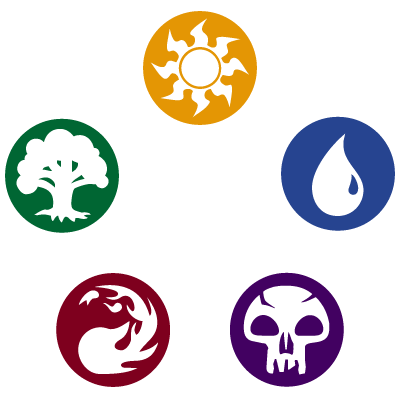
I started playing magic back in 2001 when I was 14, Odyssey had just come out. I knew a bit of English, and I soon started reading Magic's website for news and spoilers. That's when I discovered @markrosewater 's column Making Magic. MaRo is both a great game designer and an impressive writer, his column was entertaining, witty, fun and informative. I consider Magic and especially his column to be the main reason I learned to read English so fast.
Now, 2001 was a period of transformation in Magic. The main saga in the story had just ended (consider Avengers:Endgame), and the people at WotC were reconsidering and rebalancing the color wheel. I remember there being weeks dedicated to the single colors, and MaRo's comulumn being deeeep dives into those colors.
Now, what's the color wheel? You see, in the universe of Magic: The Gathering the primordial energy and building block is mana, which comes in one of five colors: white, blue, black, red and green. Mechanically, each card is associated to one (or more) colors, and each color has mechanics that are typical for it, like green being the color of growth and big creatures, blue being the color of spells and flying, and black being the color of death and zombies. But the people at WotC put a lot of effort to also distinguish each color thematically, defining *why* each color has certain mechanics, what it says about the color's philosophy and values. Green is the color of nature and community, where the small ones help the big ones grow and foster. Blue is the color of knowledge and artificiality, black is the color.
It's pretty intuitive most of the time, but here's where it gets even better: the placing of the colors on the wheel has a meaning. Colors that are close to each other are "allied" colors and have something in common, while colors that are opposite of each other represent the two opposites on an axis:

I don't have the time (or skill) to go into detail here, but this system is so damn elegant. It has five basix building blocks but allows to represent an incredibly vast array of concepts, characters and behaviors.

The color wheel is still my favourite system to define/describe fictional characters, it's miles better than the alignment chart of D&D (or, like, hogwarts houses).
I find it incredibly fun to discuss what color(s) certain character fall into: is superman white, green? Is batman white, black, blue? A combination of those? Ryuko Matoi is red, Satsuki Kiryuin is white. Do you disagree? Perfect, tell me why, it's always super interesting to see which aspects of a character people consider the most prominent!
My favourite Magic blocks and sets were those playing with the color wheel and its concepts, mainly Planar Chaos but ESPECIALLY Ravnica. Man, I really need to play some rpg campaign set on Ravnica sooner or later.
I played magic for 5-6 years (until I finished high school), but the color wheel is ingrained in my mind. It was the main chitchat topic when I first started going out with my SO more than 15 years ago xD
So yeah, not sure who this is for, it's mainly me rambling and fanboying about one of my favourite game design and character creation concepts. If you don't know the color wheel, I suggest you try to read a bit about it. And if you do know it, what do you think? Is there anyone out there who used it as a basis for an rpg or foe writing?
44 notes
·
View notes
Note
Global selfishness would involve whoever can take the slice, taking it.
Property law and recognition of ownership, whether legal or moral, is a rule that restricts Black's behavior. "But I bought it" is exactly the kind of thing that somebody would make up to try to take the last slice for themselves. It's an appeal to fairness.
What are the colors' opinions on taking the last piece of pie?
White - Split the piece between everyone who is hungry
Blue - Figure out who would benefit most from eating the last slice.
Black - Make it clear that only you can eat it. If you’re not hungry, throw it away.
Red - If you’re want it, eat it.
Green - If you’re hungry, eat it.
73 notes
·
View notes
Text
People I'd like to know better
Open-tagged by @lesbianjackies!
last song: Bach's Lute Suite in G-minor BWV-995 is currently playing on the radio. That's only dubiously a "song" because it doesn't have any vocals. The last thing I listened to that did was "The Steps" by Haim.
favorite color: Dark green.
last book: The last book I finished was The Boy Who Followed Ripley by Patricia Highsmith. Devastating, but also very fun. Now I'm reading Vita Nostra by Marina and Sergey Dyachenko.
last tv show: Pretty sure the last thing I watched on TV was the most recent episode of Severance with my parents the other night!
sweet/savory/spicy: Savory, but I like all three.
relationship status: Single; just got situationship-zoned, something I didn't even know was possible, by someone on Bumble, so I don't think I'll be pursuing that. At least I have a very committed long-term platonic Person.
last thing i googled: "s&p 500". It's not doing so hot!
looking forward to: Going to work tomorrow, since I like my job and my home situation isn't great at the moment because of Neighbor Drama.
current obsession: Yellowjackets has been 40% of my personality for the past two years, and more recently I'm very into a series of great conversations about the history of Western philosophy that I've been having with @stracciatellino, @mayasaura, and a couple of our other friends.
Tagging @deerest-deer @coolmcq @lilybarthes @the-blueberry-pie-is-a-lie @tar-miriel @thatlowdoorinthewall and @sapphicscience!
Also @ryttu3k. Let's catch up!
9 notes
·
View notes
Text
The Flavor of MTG’s Color Pie(Part 1/4(Reuploaded))

Introduction
So, I have since finished my little miniseries on the tribes of Innistrad and how their color philosophies express them in their culture, story, and mechanics, and I really enjoyed talking about it so I figured I would write some stuff on the factions as we see them on different planes and how the color philosophies manifest within them.
I have also realized that this article is way longer than I thought it was going to be so I’m going to make a different version that splits each section into parts.
Before I move on if you want to see my previous(much shorter) MTG articles covering the tribes of Innistrad then you can view them here- https://douglysium.tumblr.com/tagged/TheTasteOfMagicTheGathering. If there’s a specific tribe you want to read about then you can view them here.
Werewolves- https://douglysium.tumblr.com/post/662623213059276800/the-taste-of-innistrads-werewolves
Humans- https://douglysium.tumblr.com/post/662755543203643392/the-taste-of-humans-on-innistrad
Angels- https://douglysium.tumblr.com/post/663299115099308033/the-taste-of-innistrads-angels
Geists- https://douglysium.tumblr.com/post/664030257036361728/the-taste-of-innistrads-spirits
Zombies- https://douglysium.tumblr.com/post/664566115054256128/the-taste-of-innistrads-zombies
Vampires- https://douglysium.tumblr.com/post/664656723908362240/the-taste-of-innistrads-vampire
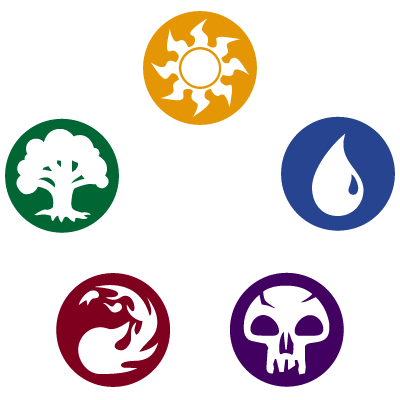

I could basically talk all day about the Color Pie if you caught me in the mood, and it turns out I am in the mood.
Although, before we jump straight into the philosophies themselves I decided to make this little intro first to cover my overall goal with this piece. The idea behind this is that it’s basically a housekeeping article. I take what I feel are some important overarching things to consider no matter what color or mechanic you are looking at and try to summarize them so I won’t be forced to repeatedly explain the same concepts over and over, and we can spend more time looking at the aspects that are more specific to each color.
As for what this series covers? Well, my first goal is simply to give my own explanation and thoughts about how the colors work but I also want to look at both the philosophical, and mechanical/gameplay sides of each color and how they tie into each other. I want to look at flavor questions such as how a White-aligned character may act or why this Green-aligned character may not like that Green-aligned character or how a faction’s color alignment can tell us about its goals and priorities, and gameplay questions like “Why does Blue draw so many cards? Why does Red have Haste? Why is Black always bringing stuff back from the graveyard?” etc. I do plan to still cover the color identities of factions within Magic’s multiverse eventually, probably between color articles to keep things interesting, but for now, our focus is on the colors themselves as I feel this creates a good foundation for any future tribe or faction based analysis, since if anyone is ever confused about something I bring up regarding colors in general then they could probably check them out here.
I should also mention that I’m definitely not the first person to cover the philosophies of the colors. You have people like TheManaSource, Dicetry, It’s Not Good, Lorely Writes, and even people who literally make Magic the Gathering products at Wizards of the Coast themselves, like Mark Rosewater, have plenty of blogs, videos, and podcasts that cover it. In fact, as I’m writing this Mark has recently made a convenient compendium of all his Color Pie related stuff, which you can check out here → https://magic.wizards.com/en/articles/archive/making-magic/lets-talk-color-pie-2021-10-11.
So at the end of the day, my goal with this article is to 1. Summarize and go over some general overarching themes or questions regarding the colors, 2. Act as the groundwork for the rest of the series and 3. Hopefully, allow me to explain why I personally love the Color Pie. So let’s begin.
The Color Pie in General
So first off, what does it even mean to be aligned with a certain color? Well, basically the gist of each color is that they represent a character’s core values and, by extension, their ideology. An example of this would be how Blue believes that the most important thing in life is being the best you one can be and that the optimal way to achieve that is through gaining knowledge, meanwhile Red believes the most important thing in life is to follow your heart and do what you want. What determines what color alignment someone/something falls under is not necessarily the state of their existence or even their personalities but rather what they believe in and value. I mean yeah, goblins are often Red-aligned and different species or tribes within Magic tend to share one or more colors for various reasons, such as culture, but this isn’t the end all be all mind you. Being human doesn’t mean you have to have White in your color identity, and just being a living thing isn’t enough to make you Green-aligned, and simply being hungry and wanting to eat or just feeling emotions does not guarantee you are of the Red-alignment. Heck, if you want to go back to the second point, we have even seen robots with Green in their identity. Which I know may surprise some considering how often it can destroy artifacts and how much it holds nature in high regard.
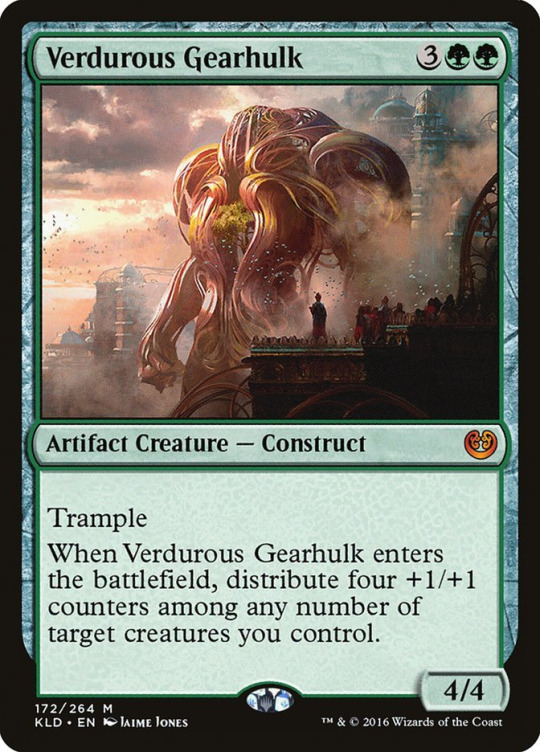
When it comes to the point about personalities, what I mean is that while it is true that a character’s personality can give you clues about what someone’s/something’s values is there is quite a bit of nuance to it. A common example we are given to help prove my point is that just because someone is super organized does not mean that they are aligned with White, but if they VALUE organization and the greater good they might be White-aligned(by extension I suppose this would also mean you can have messy or slovenly White-aligned characters). A mistake that I feel happens relatively often is that I see people assuming that a color has a sort of monopoly on a concept, behavior, or trait. For example, Red is the color that values emotion the most. So some people may look at Red and determine “Ok, so every card that depicts strong emotions, or an emotional moment has to have Red in it right?”
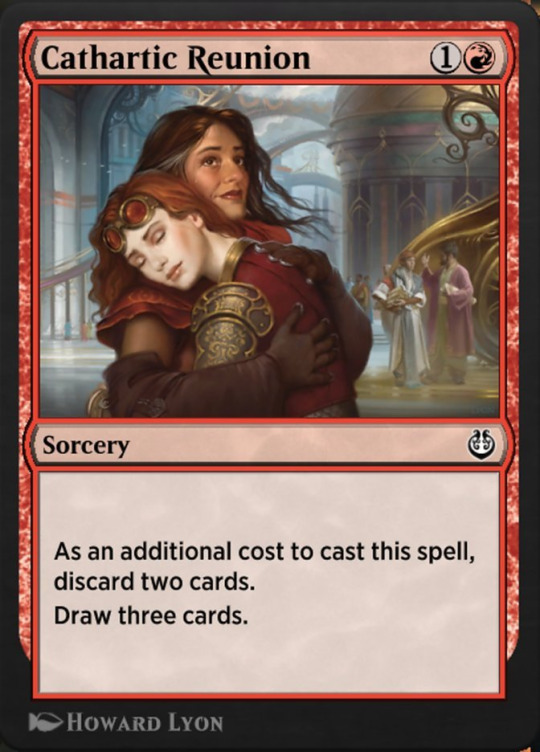
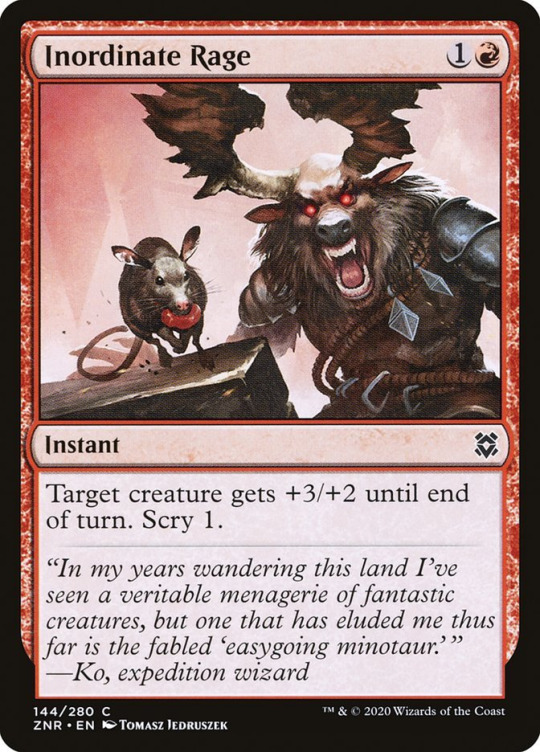
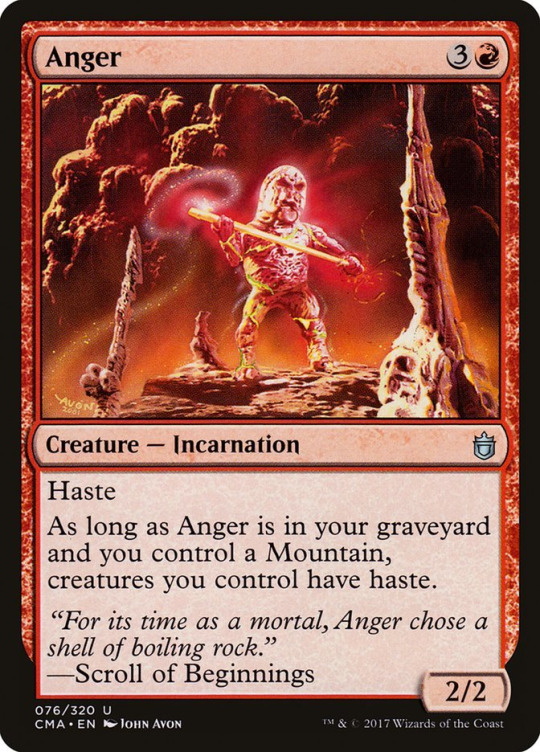
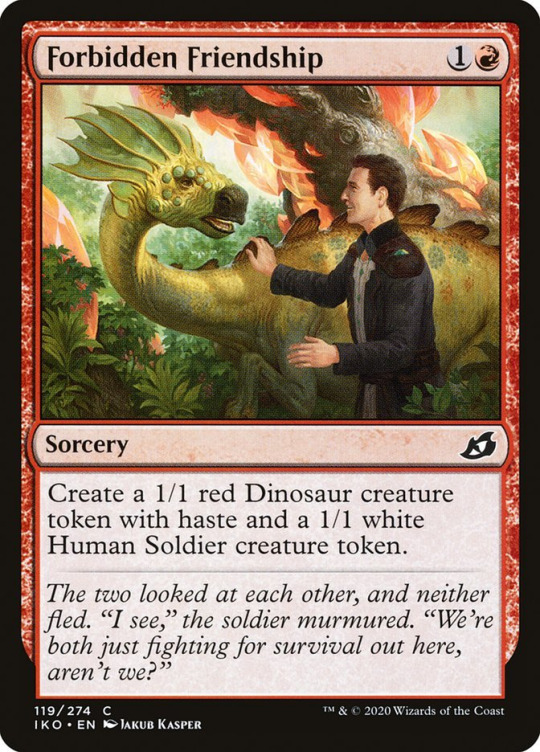
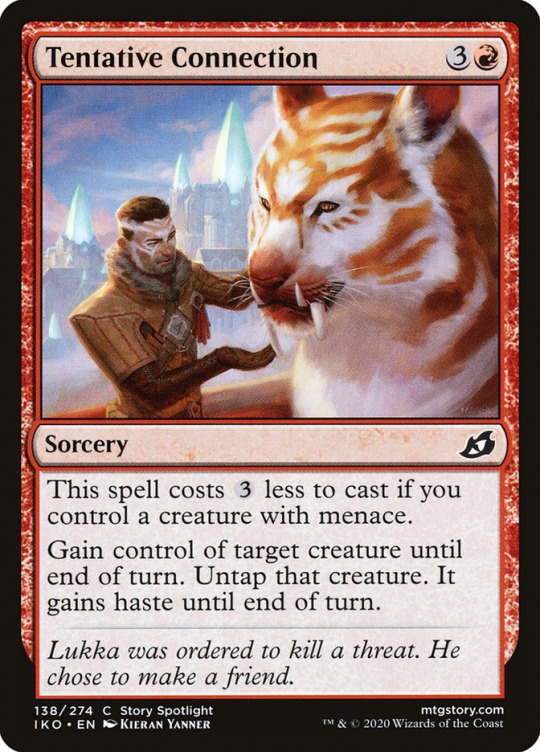
Well… no…
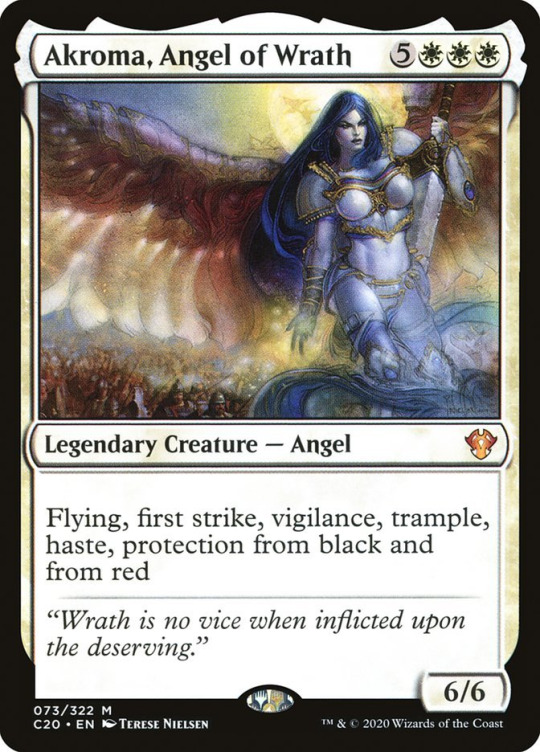
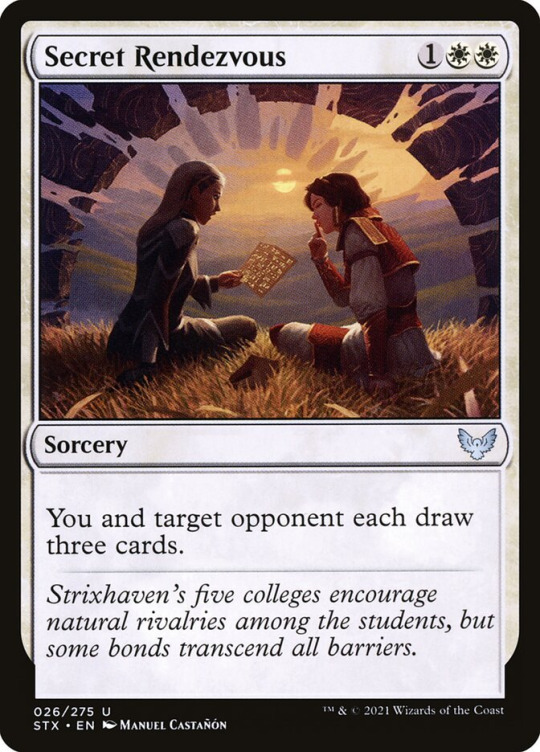
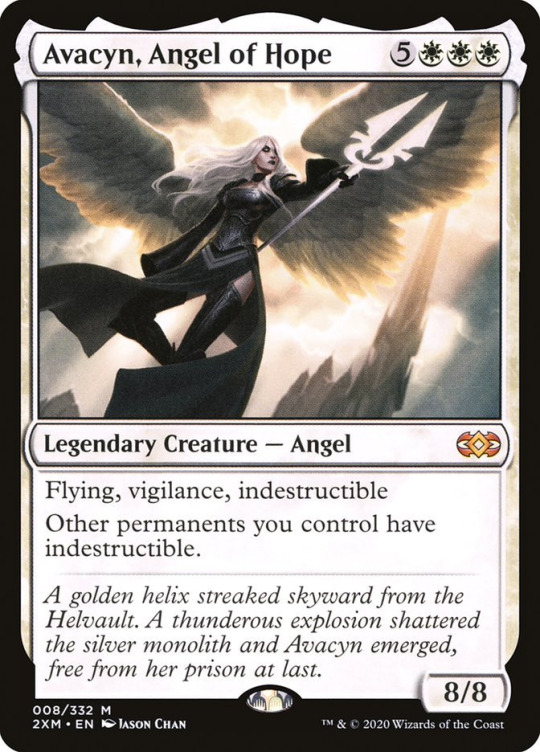
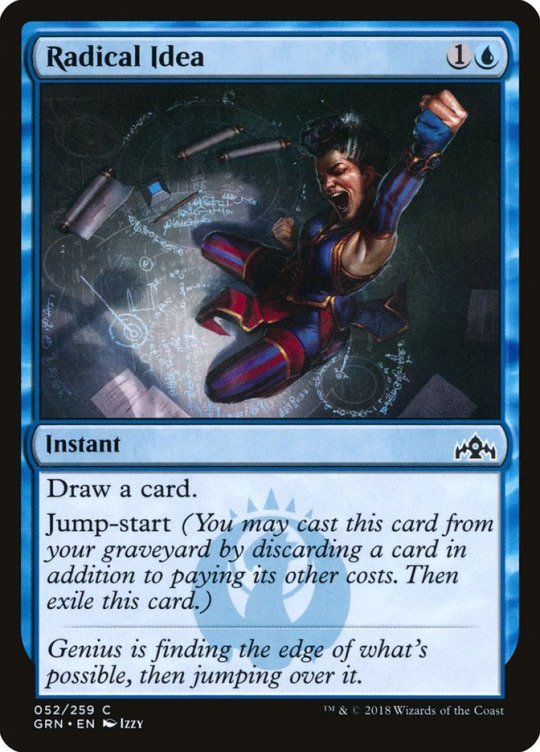
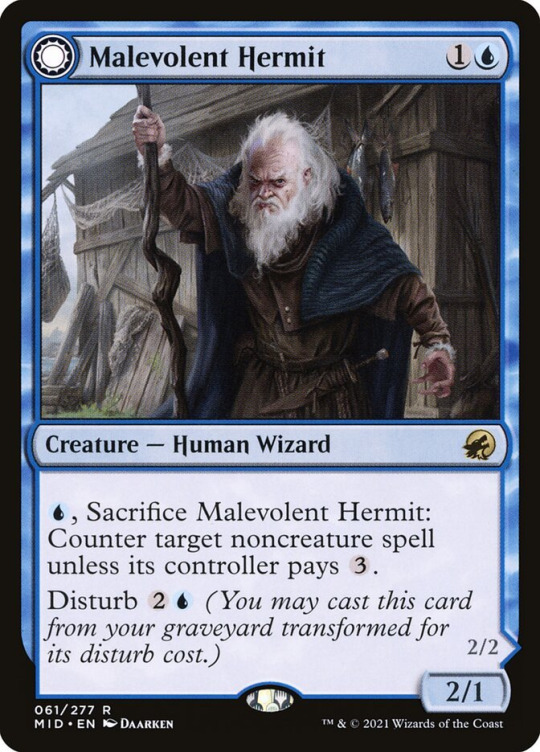
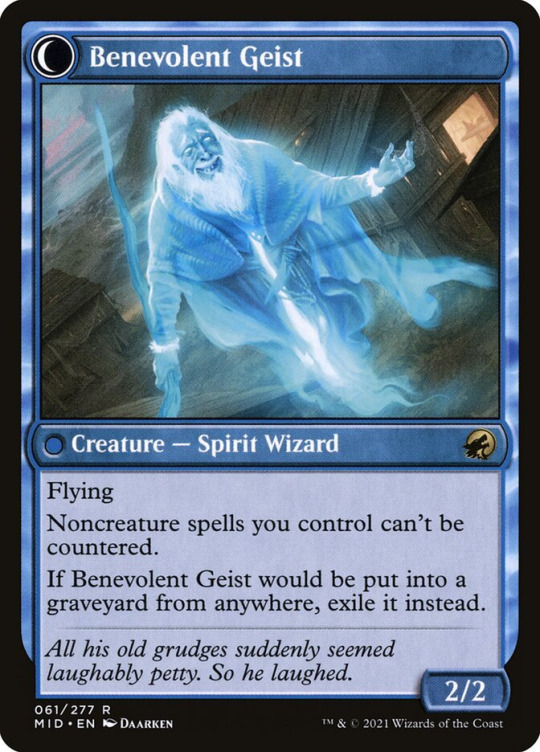
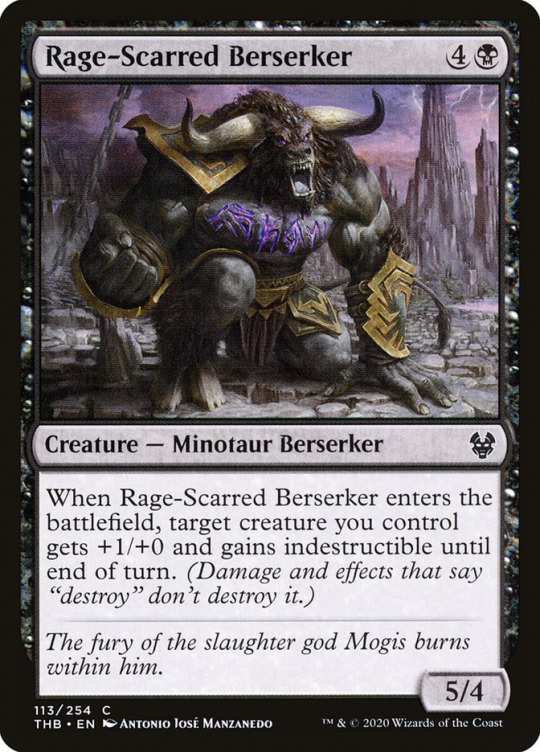
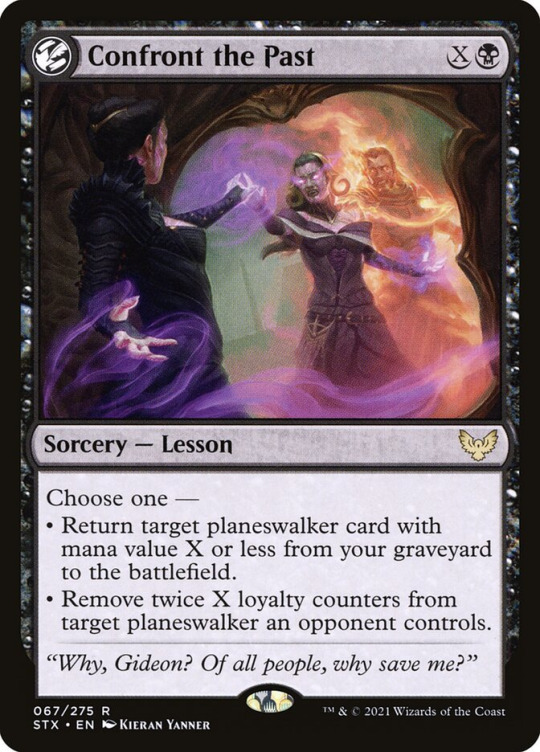
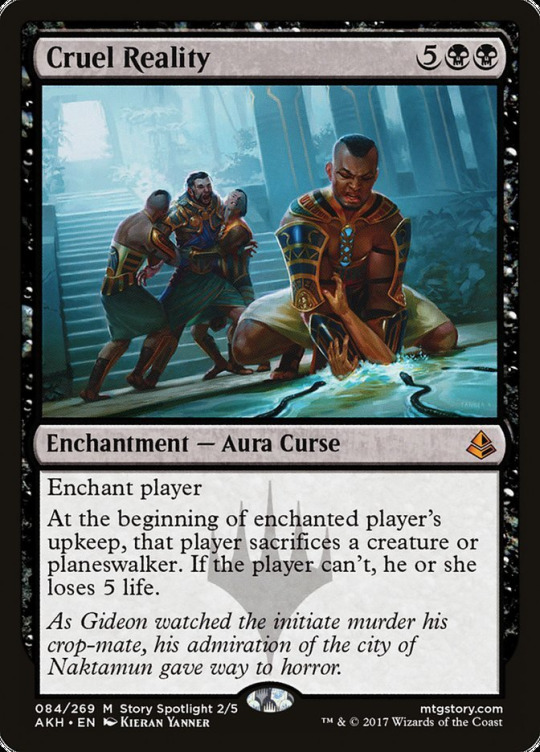
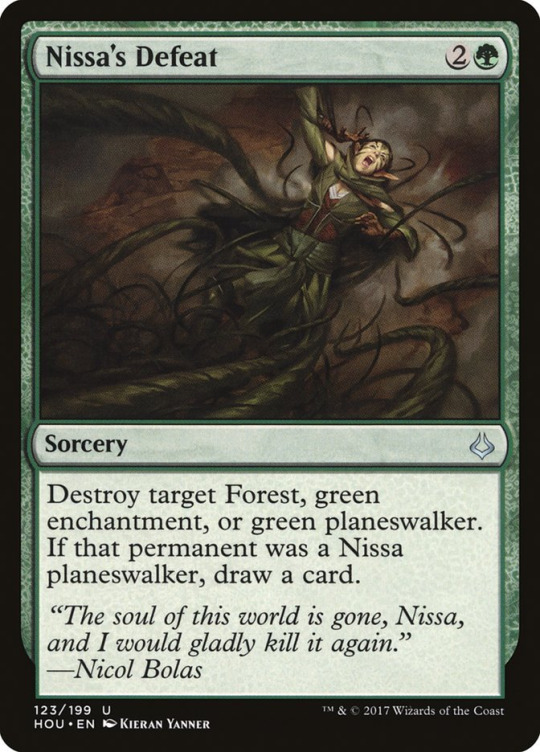
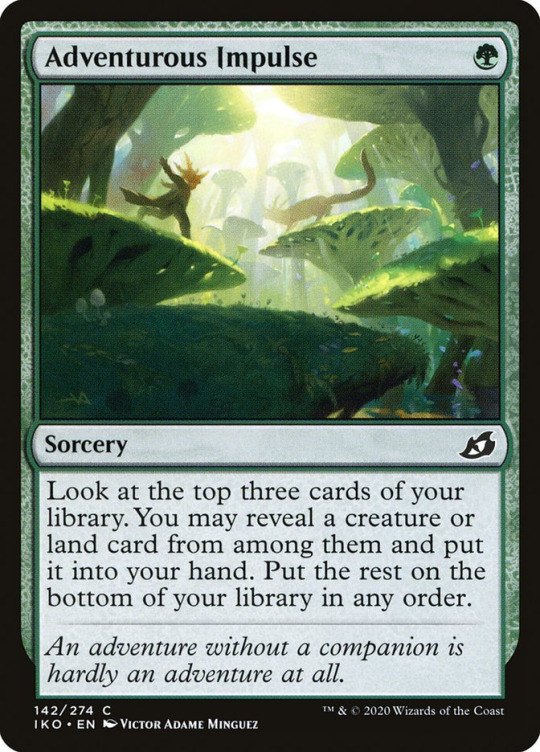
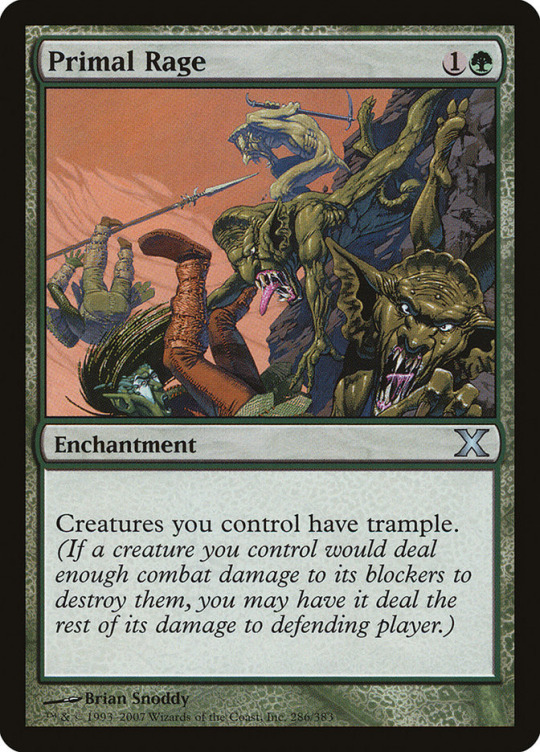
Now don’t get me wrong, Red is clearly the MOST LIKELY to have cards depicting strong emotions due to its belief that you should follow your heart first and foremost. However, that doesn’t mean that the other colors don’t have any emotions or can’t have emotional moments. What tends to be more important when looking at the colors as a whole is not only whether a character within that color has emotions but how they view their emotions and the emotions of others.
Let’s say you have two characters that are both really really angry. We will refer to these characters as John and Jim. John hates bottling up his emotions or holding them back. He believes that you should follow your heart if you want to be happy in life. So when John gets angry he doesn’t pull punches. If someone pisses him off he’ll simply fight them and say something like “Well he shouldn’t have pissed me off,” or maybe he’ll just scream at them and storm off. Both of these outcomes are equally likely.
On the other hand, there’s Jim. Jim is also super emotional but he has a strong moral code. He argues that it’s wrong to get into fights with people when it can be avoided and that you shouldn’t let your emotions control you or else you may end up causing a lot of unnecessary pain for both yourself and others and that’s something he abhors. So when Jim gets super angry he may raise his voice a bit but he will avoid throwing the first punch and will usually go home and do jumping jacks as an outlet for his anger.
Now as many can probably guess in this example, I think it’s safe to say that John is of the Red-alignment in some way while Jim is of the White-alignment in some form. John is someone who believes in following his heart and thus will prioritize what he feels and wants above basically everything else in a given situation. Jim is also an extremely emotional character but he prizes morality and peace above his emotions and is thus more willing to put off things that he wants to do(like punching someone in the face or yelling) for the greater good, or the good of the many. The point I’m trying to get across here is that it’s not that all White or Blue-aligned people intrinsically hate emotion in all its forms but rather they disagree with what Red values and how it reacts to emotions, and by the same token Red has a problem with White and Blue’s priorities. It’s also important to take into account that no one is perfect. It is possible for Jim to get so angry that he fails to properly contain his emotions and he ends up punching someone or getting into a fight. However, due to the philosophy of the White-alignment, I think it’s safe to say that he would probably feel bad about it or at least consider it a mistake/failing on his part in some way. Hopefully, you get what I’m trying to say, the color alignments don’t have a monopoly on concepts like emotion, order, intelligence, greed, concern for one’s own well being, etc., and even though color may be more likely to have it be more pronounced or emphasized in their personality or actions it does not guarantee it nor does it mean that the other colors are completely restricted from having it show up in their personality. The key point I’m trying to get across here is that the best way to help determine where someone sits on the Color Pie is based on what they VALUE as opposed to personality being the end all be all. Also, it should be noted that, yes, a personality can give you clues into what someone values. I mean, if you’re someone who views forethought and knowledge as part of the ideal we should strive for then you are more likely to be thoughtful but not everyone with the same or similar philosophy has the exact same personality. It should be noted that outside factors can also affect how a character acts even if it does not change their alignment, but more on that later.
The Gist of 5 Colors
Now as with most philosophical things there is a lot of discussion and debate to be had, and honestly, I could probably write an entire book solely on Color Pie philosophy alone. However, I figured that since it might be a bit before I finish writing the next article it might be helpful to give you all a taste of what each color is all about. Also, in case you don’t know we are going to go over them in WUBRG order, and for those of you who are unfamiliar with that term, it’s short for White, Blue, Black, Red, and Green and is the order in which the colors are represented. Why is Blue represented by U? I’ll talk about that when I make an article solely dedicated to Blue.
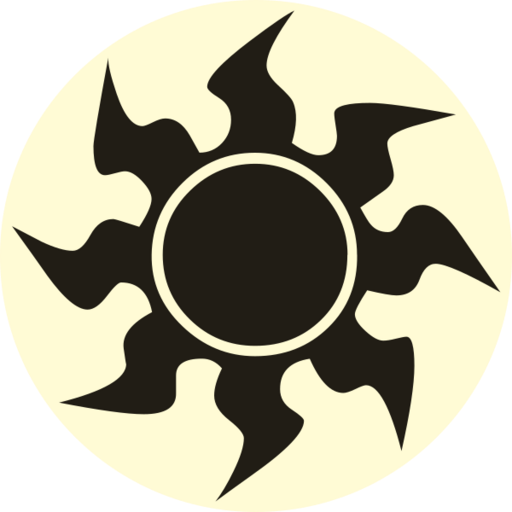
White believes in “Peace through Structure.” That is to say that it wishes to achieve peace and prosperity through various structures, such as laws, moral codes, religion, etc. It also believes in some form of objective morality(there are just some things that are morally wrong to do and some things are morally right). White values the community and the greater good over the good of the individual, and it often attempts to use social constructs and rules in order to help as many people as it can get what they need and guide them on the right path. Now, there is an extremely important distinction in the fact that White believes that there are enough resources for everyone to do what they NEED, and not everything they WANT. Which ultimately ties into White’s theme of sacrifice. Since White believes in putting the greater good above personal/selfish needs it argues that sometimes sacrifices are necessary for the bigger overarching goal. Also, when I say sacrifice in this case I am not solely referring to giving one’s life for a cause, although that can happen, I also mean sacrificing more mundane things like one’s time, money, making sure to avoid going to massive gatherings in order to help prevent the spread of something like a disease or sickness during a pandemic, even if that one party looks rad as hell, and other similar things/concepts. Before I continue, one thing that’s important to remember when looking at all the colors is that none of the colors are inherently good or bad. I mean yes due to White’s moral bent it will basically always want to do the right thing and even if it’s in an antagonist/villainous role it will usually believe it is doing the right thing because… I mean White genuinely does want to help and do the right thing, but at the end of the day intentions can only take you so far. You could also argue that certain colors are more likely to commit acts that a majority of people would consider “bad” or “evil” but again none of the colors are necessarily only negative traits by default. So in order to help get this point across I’ve decided to list one strength each color has as well as one weakness. I will go into more detail regarding each color’s strengths and weaknesses in future content.
One of White’s major strengths tends to be its teamwork and organization. Due to the fact that White prioritizes structure and the needs of the group it tends to be good at working in teams or large groups of people. It also often leans towards utilizing laws and/or moral codes in order to help people stay on the right track.
One of White’s weaknesses is that since it believes in the group over the individual and an objective morality it can sometimes end up having extremely black and white(get it?) view of the world can end up creating a mindset that is extremely controlling of others in an attempt to get them to fit into a strict idea of what is right and a mold that is extremely stagnant and inflexible to changing and adapting.
Some words that are heavily associated with White are peace, law, structure, selflessness, and equality.

Blue believes in seeking “Perfection through Knowledge.” An important clarification is that Blue’s philosophy doesn’t believe you can literally be perfect but rather that we should be constantly trying to improve and be the best us we can be(perfection here is a process not necessarily an end goal). Thus, in a way it can be described as attempting to achieve perfection, since what it’s trying to do is trying to get as close as possible to it. Blue argues that the best way for us to be the best we can be is through knowledge, information, education, etc. At the end of the day, knowledge is power and the key to being able to do something is to simply know how it works and how to do it. Blue believes everyone is a blank slate and that with the proper knowledge basically anything is possible. Now Blue isn’t a philosophy that’s dumb enough to argue that if you are born without wings or with bad vision you could just gain flight and 20/20 vision with sheer willpower. Rather, if you learn how flight or vision works you could do things like build a jetpack or create a set of glasses that could compensate or negate certain issues or even allow you to do new things you never thought possible. In Blue’s eyes, you only have one life so it makes sense that you shouldn’t waste it or ruin it by making shortsighted or emotional mistakes. Thus, you should carefully consider your actions and plan for the future.
One of Blue’s greatest strengths is probably the most obvious, knowledge. Due to the fact that its philosophy prizes knowledge and thinking it tends to be very good at utilizing the information at its disposal and it is less likely to make a silly or shortsighted mistake because it likes to keep the bigger picture, and the future, in mind. So even though a Blue character is capable of making mistakes they will at the very least decrease their chances of making a careless or not thought out action.
However, one of Blue’s major weaknesses is that it can end up being too passive and slow at times. It often sits around thinking and when tasked with making a choice it will try to figure out the best option. While this is often all well and good, sometimes this can lead to Blue getting “frozen” with all the choices it has. This is in the sense that sometimes they take too long to make a decision or act so they can end up not reacting to something fast enough, or in extreme cases just not end up making a decision at all. Sometimes the easiest way to get the upper hand on Blue is to simply act before it has time to think or formulate a plan.
Some of the words that are associated with Blue are knowledge, deceit, cautious, deliberating, and perfecting.

Black believes in “Power through Opportunity’’. This means that, unlike say White, Black believes that there is no objective morality and it prioritizes the self over others. This means that Black believes that there is nothing wrong with doing whatever it takes to win, no matter how underhanded, inhumane, dishonorable, immoral, or unlawful, and thus it’s priorities can be described as trying to amass as much power and strength via any opportunity that it can make or encounter. At the end of the day, Black believes that it’s power that talks and that frankly, the world is a ruthless and unfair place. While some of the White alignment may claim that those who are of the Black alignment are the reason bad things exist, in Black’s eyes it’s the other way around. People are Black-aligned because the world is full of unfairness and brutality which in turn means that it is reasonable that people do whatever they can to survive and gain power. Black isn’t always creating all the world’s problems more so playing with the hand it was dealt in life. It is also important to note that Black is not inherently evil and White is not inherently good. First of all, Black is amoral, which means that it doesn’t actually believe in any sort of objective good and evil, and second of all, from Black’s perspective, life is already hard and unfair enough as it is. Compounding that issue with a bunch of subjective ever-changing morals, limitations, laws, and traditions that you yourself or others put on you is only hindering you. Not to mention that at the end of the day, the only one you can truly guarantee to care about you, your wants, and your safety is yourself. No one else is guaranteed or obligated to look out for you so you should look for any opportunities you see or create and use them to the fullest without mercy or shame. You should do what is best for you and whatever it takes for you to survive.
One of Black’s strengths as a color is that, at its best, it can end up being the most pragmatic out of all the colors, and thus it will be willing to do what needs to be done to achieve its goals. Sometimes other colors may be unwilling to tap into a resource they consider to be icky, scary, or unholy, such as corpses that can be used to make a zombie army, but Black is a color that rarely lets resources like that go to waste.
Now, ironically this sort of ties into one of Black’s biggest weaknesses. While Black does think things out, it’s “nothing is off-limits” ideal can end up manifesting as something that leads Black to take a lot of risks and sacrifices in order to get what it wants. Black is one of the colors that are most likely to end up messing with stuff that people say you shouldn’t mess with for a good reason, and being willing to sacrifice things for an important goal can end up making backfires or misplays blow up in your face all the more. This means that sometimes the color that is most likely to defeat Black can end up being Black itself, since at its worst it’s selfishness, greed, power-hungry ideals, and “no line is a line I’m unwilling to cross” philosophy can sometimes end up shooting it in the foot immediately or down the line.
Some words that are associated with Black are power, self-interest, death, sacrifice, and uninhibited.

Red believes in “Freedom through Action.” That is to say Red believes that in order to enjoy life to the fullest you need only to follow your emotions/heart and do what it is you want to do whenever you feel like doing it. If you feel angry and want to punch something then punch something, if you’re sad and want to cry then cry, if you’re happy and want to laugh then laugh, so on and so forth. Red doesn’t even bother to promise that you won’t make mistakes or get into fights but in Red’s eyes those are just part of life anyway, so there’s no point in trying to bottle up your emotions or sit around scared to do what your heart tells you. I mean you only have one life to live so why spend it not doing the things you really want to do or not acting on the stuff you feel.
One of Red’s strengths is the fact that it often acts quickly. It often knows what it wants and because of that, it will often immediately begin taking the steps needed to get what it wants. It is a color philosophy that doesn’t like just waiting around pining after things and will try to go for what it wants.
One of its weaknesses is that it can be extremely short sighted or chaotic in a lot of situations. It prizes just doing what it wants and following, often fleeting, emotions which means that it may not always think through the consequences of actions or choice. This can lead to Red being bitten in the ass either immediately or down the line because it failed to consider the long-term ramifications of something it did.
Some of the words that can be associated with Red are freedom, emotion, active, impulsive, and destructive.

Last but not least is Green. Green is a color that believes in “Growth through Acceptance.” Green’s philosophy argues that one is born with all they need to be fulfilled and by extension nature has all we need to live a complete life, one just needs to embrace it. It believes that everything is born with a purpose, wolves are born to hunt, deers are meant to be prey, birds are supposed to fly and grass needs to grow. Now, it’s important to remember that Green does believe that things can change, as nature itself is something that evolves and changes over time, but in its eyes such changes should either occur naturally and/or help you better realize your role in nature and the grand scheme of things. If you were born a sparrow then that means you were born to fly and can learn better ways to fly for example. Due to these themes of acceptance regarding your place in the universe and the natural order Green is a color that is tied strongly to things like destiny, divine purpose, and/or many other forms of predeterminism. Green advocates that, instead of fighting against our natural place, we should simply accept them as they are and come to terms with the fact that there are things we just can’t change and some things we can’t fully understand. One cannot magically sprout wings if they are a turtle or become immortal just by thinking about it, and that’s just the way things are. Green is also a color that is strongly connected to the past, tradition, and history as one of the best ways one can figure out where they belong is to look towards the past. If you want to figure out what the role of a bear is in the ecosystem then you may want to look at how bears have impacted the ecosystem in the past or the role they played in the history of that ecosystem.
One of Green’s strengths is that its belief in the natural systems of the world/universe/planes often gives it a strong understanding and connection to nature and the things that occur in it. It is a color that can definitely really appreciate how nature works and the wonder nature can hold.
One of Green’s weaknesses is also tied to the fact that Green sees nature as the best thing since sliced bread. In a weird way, it can sort of end up putting all its eggs in one basket by being unwilling to try anything that it deems unnatural. It also means that if the nature it’s relying on is lacking in something or is too damaged/destroyed it may have trouble adapting due to it’s potentially go natural or go home style beliefs.

Before we move on I might as well at least touch on Colorless, since there are objects and characters that aren’t aligned with any of the five colors. Colorless, as the name would suggest, is the lack of any color and thus it usually represents something that doesn’t have its own ideology to speak of, such as non-sentient objects or artifacts. However, it can also represent characters who have sort of transcended the normal mana colors, such as Ugin as a spirit, or beings that are beyond the understanding of the Color Pie or normal logic, such as the Eldrazi. That’s not to say that a Colorless character can’t have a personality or some sort of value but Colorless as a whole has no consistent permanently overarching philosophy.
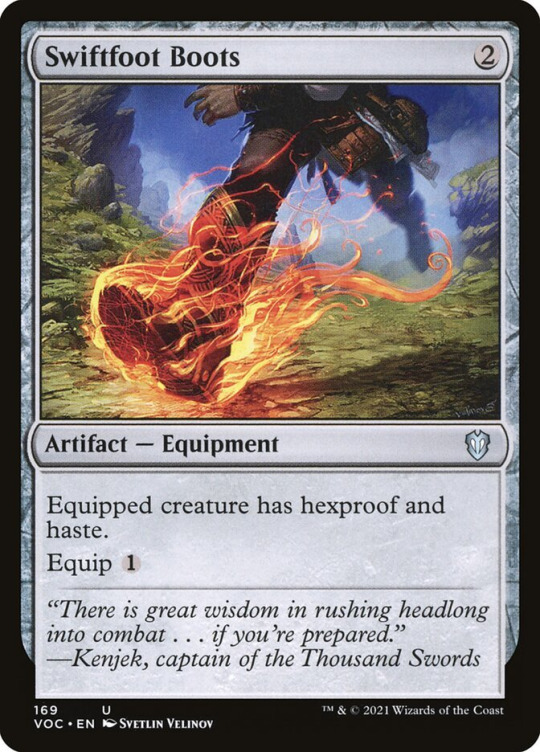
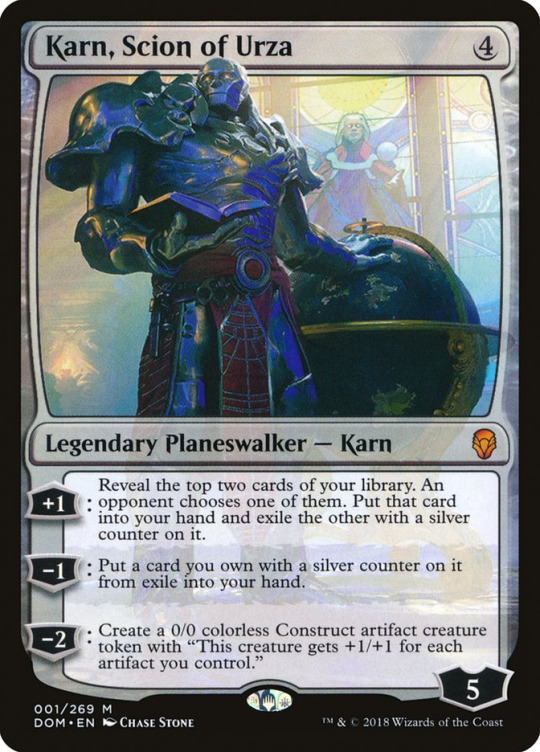
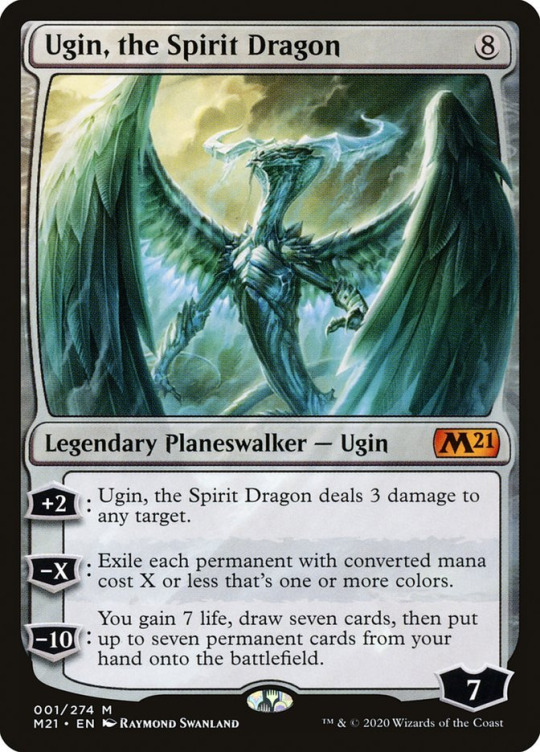
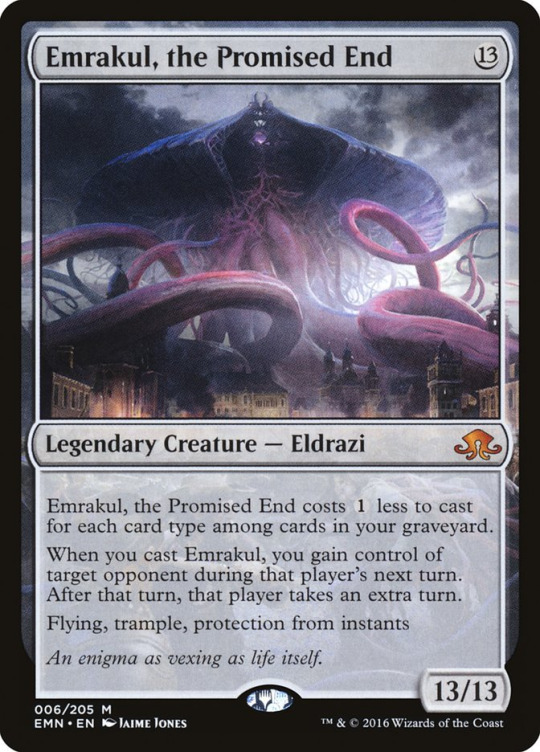
Colorless as a whole doesn’t have any philosophical upsides or downsides since it doesn’t have a coherent philosophy it is adherent to.
Also, for the sake of clarity, there do exist artifacts and objects with a color alignment, even if they tend to be less common than those of the colorless variety. These colored artifacts are either sentient while also having a strong adherence to one of the 5 color philosophies or are just heavily attuned with or connected to some color, or color combination, of mana for whatever reason.

Color Allies and Enemies
Now, earlier I mentioned the Color Pie and WUBRG(White, Blue, Black, Red, and Green) order. Well, let’s come back to that for a second. You see, each color has two of what are called allied colors and two enemy colors. A color’s “allies” are the colors that are directly next to it on the Color Pie while enemy colors are the two colors on the opposite side of the pie from said color.
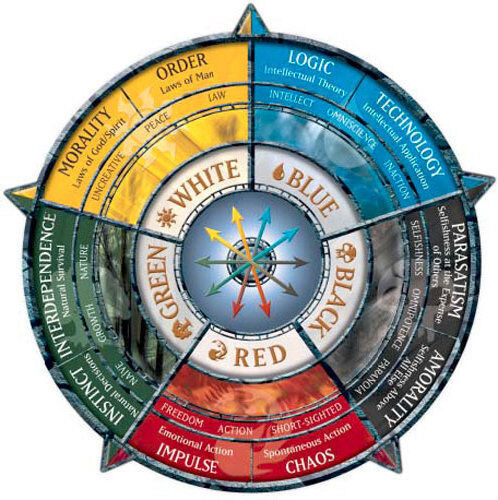
For example, White’s allied colors are the colors next to it, Blue and Green, and its enemy colors are Red and Black. As the names would imply ally colors from a purely philosophical standpoint tend to have more things they agree on with the colors they are allied with and enemy colors tend to have a lot of ideologies that directly oppose their respective enemy colors. If we go back to White we can see that one of the things White prioritizes is structure and the greater good. Green also has a sense of right and wrong like White does and it also has a sense of structure about the way things are supposed to be. Blue also likes structures that can help improve things and spread knowledge, plus it has a sense of the bigger picture and understands that you shouldn’t always put your needs and wants above everyone else. On the other hand, you have Black and Red. Black argues you should always put yourself first and look out for yourself and Red’s philosophy is that you should follow your heart and do whatever you feel like doing. These ideals directly oppose White’s ideals of the greater good and selflessness(These are just brief examples by the way they aren’t meant to be super in-depth).
Now just to be clear, just because a color is allied with another color does not mean that those colors see eye to eye on everything or always agree with each other, and even enemy colors still have things they agree on. Furthermore, not every character that aligns with a color gets along with every single character that is of the allied colors nor do they hate all characters who align with their enemy colors. I mean, yes a Green aligned character is probably more likely to get along with a White aligned character than a Black aligned one because of the fact that in general people with similar philosophies about how the world should work are usually more likely to get along with each other, but this isn’t the end all be all or a hard rule. Heck, characters that fall under the exact same color alignment(s) can be diametrically opposed. Two Blue characters may have different ideas of what perfection they should be striving for and one White aligned character may have a different definition of what’s morally good and peaceful than another White aligned character to the point where they may become enemies, see each other as threats or just simply find themselves on opposing sides of some sort of conflict.
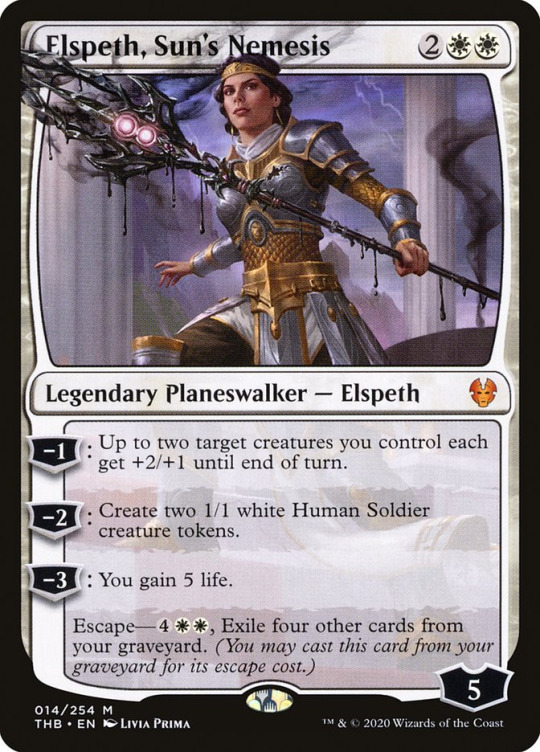
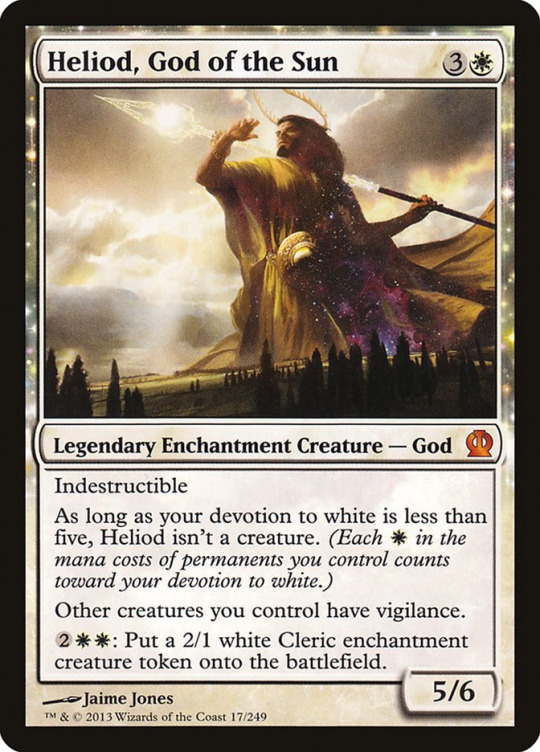
Remember, color philosophy, and philosophy in general, is not just a stock character personality. Certain overarching traits are more likely to occur due to their ideals but this does not mean literally everyone in said color alignment has them nor does it mean everyone within said color alignments embodies literally every aspect of that color. While the colors are archetypes they are PHILOSOPHICAL archetypes, not personality ones.
When it comes to ally/matching color alignments it helps to think of it this way. Does every person within a political alignment or party see eye to eye on every issue, do they all have the same exact personality? No, of course not. There may be some traits a lot of them have due to who their philosophy appeals to but they aren’t all carbon copies of each other nor do they all get along. A color’s relationship with enemy colors can be thought of in a similar way. I’m sure everyone has at least one friend who has wildly different opinions on how good a tv show is or a certain aspect of what they consider ideal for themselves, their community, or the world. Just because your opinions aren’t one to one doesn’t mean you aren’t friends.
To that end, where the color pie places each color is a sort of measurement for how well each philosophy sinks up with each other. A Blue aligned person or character can still have Red or Green aligned friends and family(just make sure to avoid talking about politics with them on thanksgiving). I mean heck, Teferi is a Blue, and sometimes White-Blue, aligned character that is in a happy and loving relationship with the Red aligned Subira, and White and Blue are about as opposite from Red as you can get on the color pie.
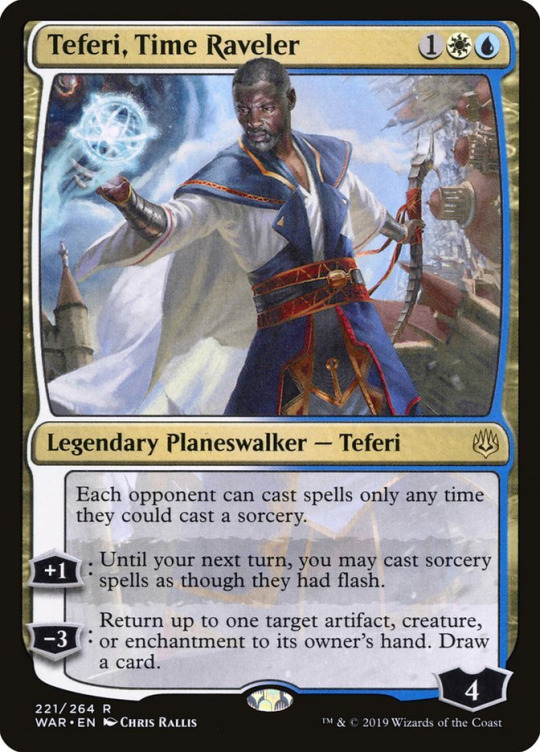
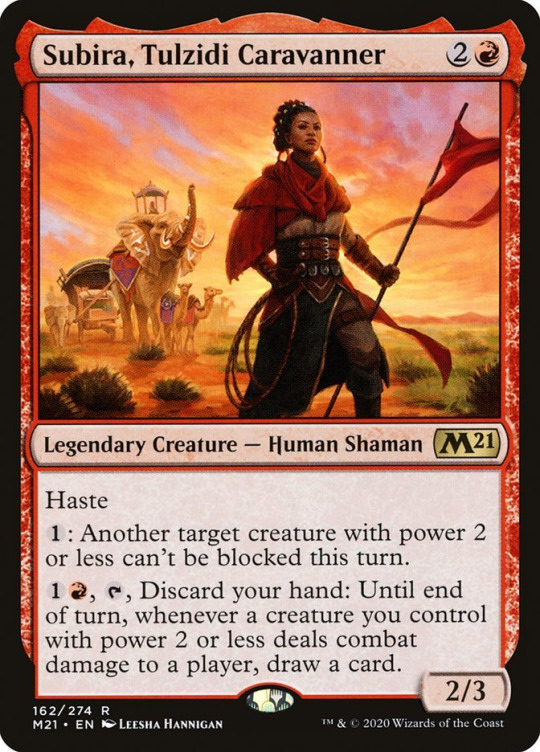
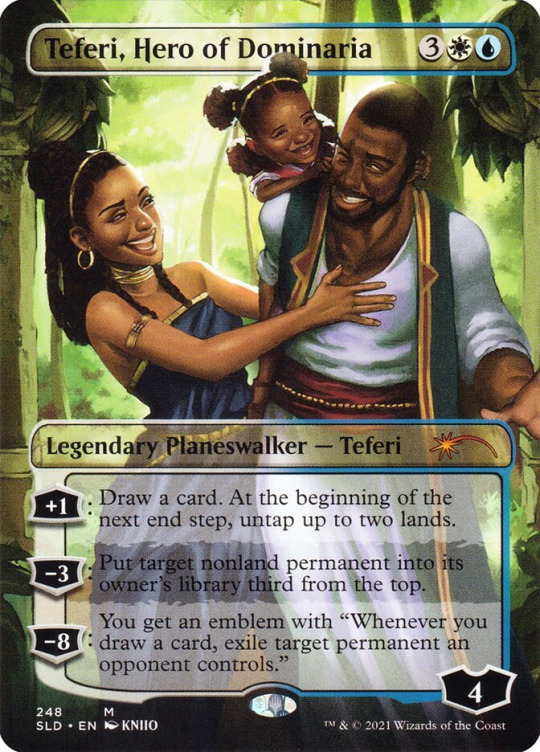
It is also important to mention that characters of various color alignments can rub off on each other in various ways without completely altering the alignment of whoever they’re affecting. You can have a Black aligned character hanging around a bunch of White aligned people and thus have them be more likely to follow whatever laws and/or rules these people make because they know that breaking them and getting caught might be way more trouble than it’s worth. Conversely, you could have a White aligned character hanging around Black aligned people who does something that could normally be considered more Black aligned or immoral due to things such as peer/social pressure without losing their White alignment.
We should also consider that not every person or character necessarily embodies literally every aspect of the color they fall under. Yeah, there are a few key aspects to the ideology which in turn makes the occurrence of certain strengths and/or weaknesses more prevalent or easier to fall into for those aligned with said colors. but not every White aligned character is uncompromising, and not every Blue character comes off as cold or emotionless to others for example. It’s just that characters in these alignments are more likely to fall into these pitfalls when compared to other colors due to their heavily moral and information-dependent values respectively, but it’s not universal or a trait literally every character will have. A lot of these potential shortcomings can also act as various forms of inner conflict, and not just an outer conflict, for characters.
Color Combinations
I might as well randomly segue into color combinations. So you don’t have to pick just one if several colors sound equally correct to you. Any person or thing can have anywhere from one to all five colors in their identity and all the various combinations that entails. Heck, as I went over previously, in Magic there are some things that don’t have any colors in their color identity.
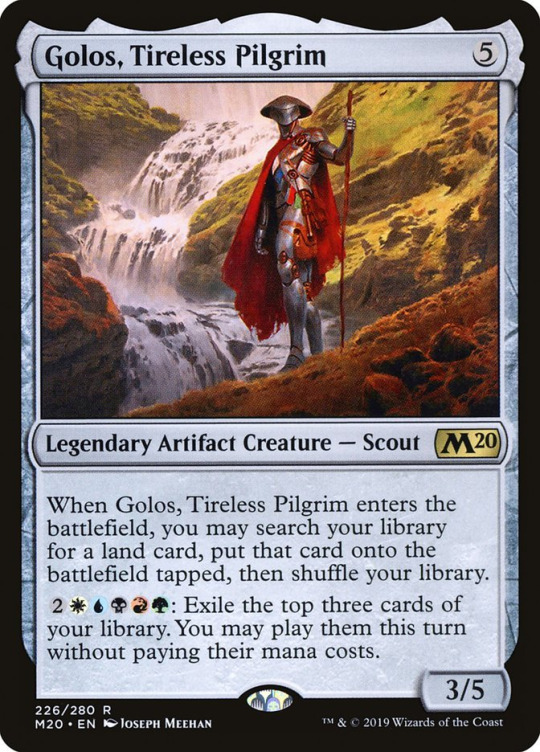
Each color combination has its own philosophy that tends to be based on the agreements of the component colors. For example, Green likes understanding nature and watching nature change and evolve and Blue also likes understanding things, knowledge, and watching things improve. So when you slap these two philosophies together you often get one that prizes things like progress and evolution.
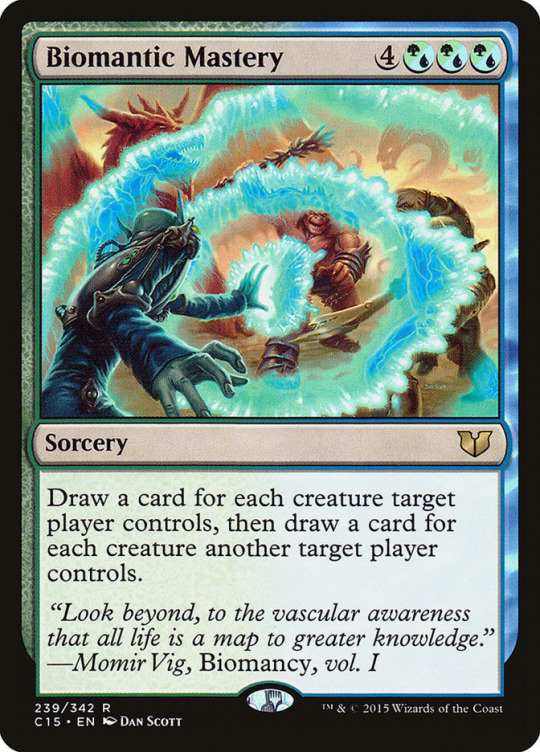
I should also mention that just like mono-colors, there are a myriad of ways that characters with these philosophies can manifest ,and there are no hard rules about how they act or who they can be. Also, the same combination of colors can manifest differently depending on how the two colors combine. Instead of combining the progress aspect of Green and Blue, you could combine Green wanting to understand nature along with Blue wanting to understand things too in order to get a character who seeks to fully understand and harness nature to its fullest potential…
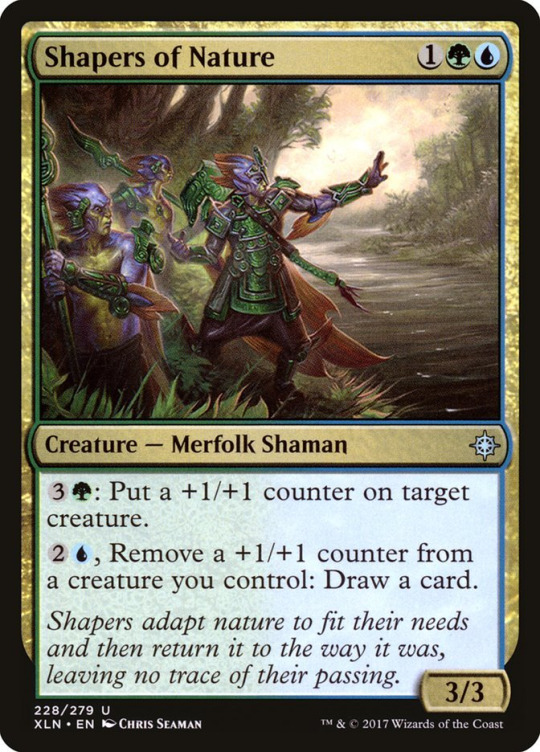
or you could take Green wanting to preserve nature and Blue wanting to preserve things for the sake of preserving information to create a way of thinking that wishes to protect nature.
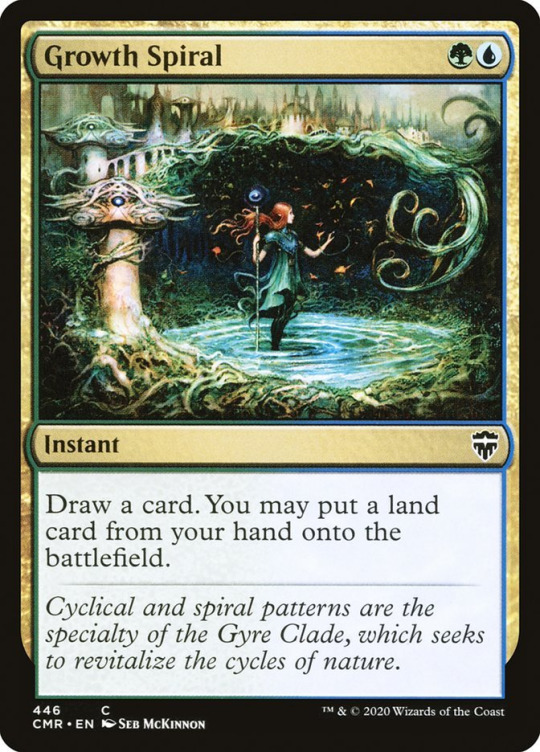
This is all without even getting into center and secondary colors by the way.
Where Colors Fall
Before we continue on, let’s quickly go back to the Color Pie in general and look into more of the specifics regarding why cards within Magic are put into certain color(s). For the sake of convenience, I have decided to make my own categories for the three general reasons that determine where a card ends up, Flavor, Mechanical and Mixed.
I already touched on a bit of philosophy and flavor earlier so I will keep my covering of the Flavor category brief. Cards that I have put in this category have their color identity based on the fact that the action, idea, archetype, or character said card is depicting is either straight up inherently a type of ideology or trait that falls under the philosophy of a specific color(s) or is something that is far more likely to fall under the philosophy of said color(s) than it would in other color identities.
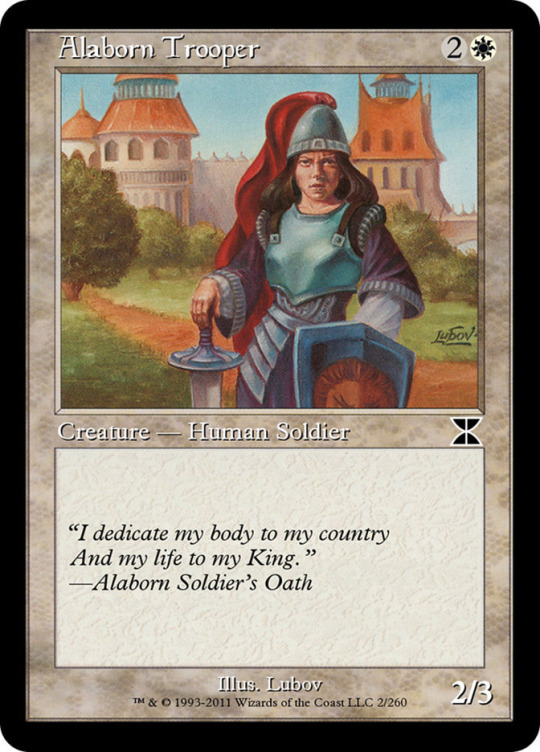
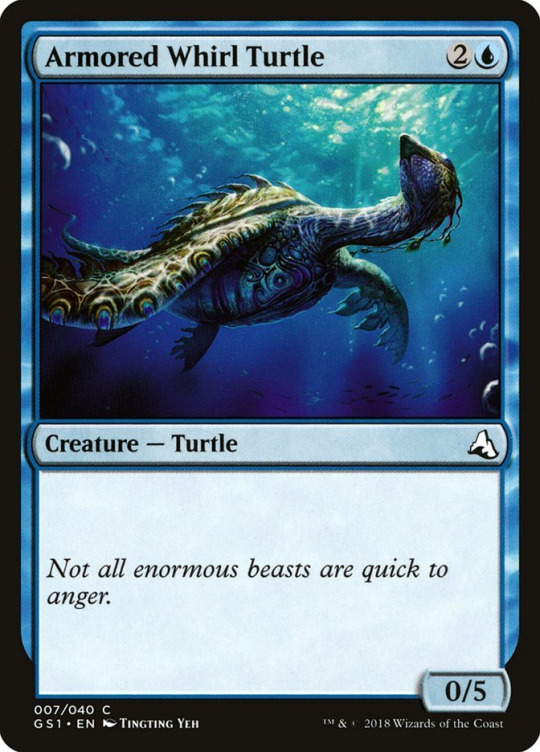
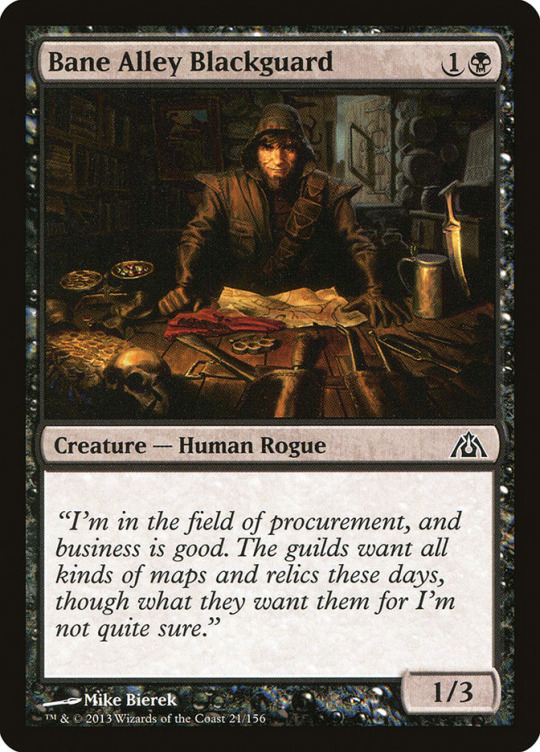
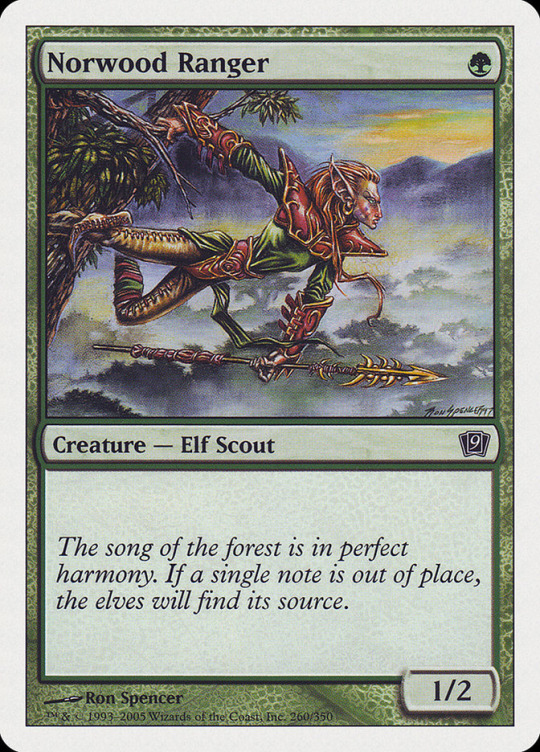
Cards that fall under the Mechanical category are there because their colors are strictly based on their gameplay or mechanics(cards that have their mechanics based solely on the fact that they are part of a cycle could also be considered a subcategory of this type). I’ve noticed that cards in this category can have actions, ideas or archetypes that don’t necessarily align perfectly with a color’s ideology or method of doing something but it’s mechanics do align with the color’s gameplay identity.
I think a good example of what I mean would be cards like Baffling End and Fateful Absence. I’m going to be honest, I don’t really know what is inherently White-aligned about a poor motherfucker just vanishing for no explainable reason, but mechanically these cards fit into White’s ability to sort of “trade” with a player by exiling or destroying something they control and giving them something in return.
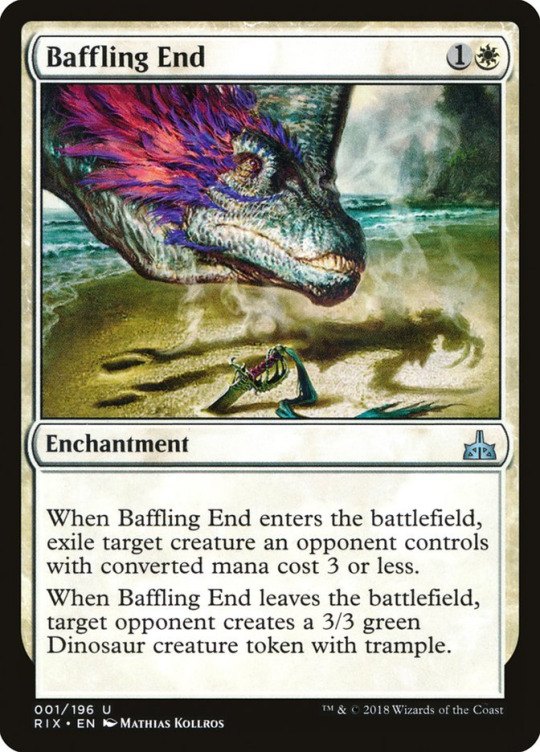
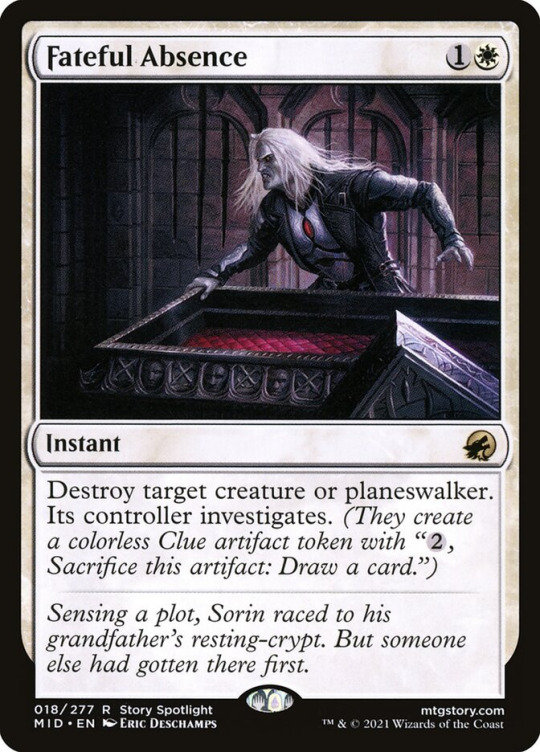
The final category is of course the Mixed category. Which is kind of just here for any cards that don’t fit cleanly into either of the previous categories.
I should mention that I don’t believe this is a perfect categorical system. MTG is very complex and nuanced at times so there are plenty of arguments to be made. For example, you could argue that Armored Whirl Turtle is of the mixed or mechanical category because having high toughness and low power does fit into like White and Blue sections of the Color Pie. These categories are a kind of simplification that is meant to help get some of these ideas and flavor or mechanic themes across.
Center/Focus and Secondary Colors
Due to all this talk about multi-colored alignments, I think it’s time to touch upon center and secondary colors.
A person or character can have one or more “center” and/or secondary colors in their color identity. For example, someone like Teferi might be both White and Blue but their center color is Blue and their secondary color is White.
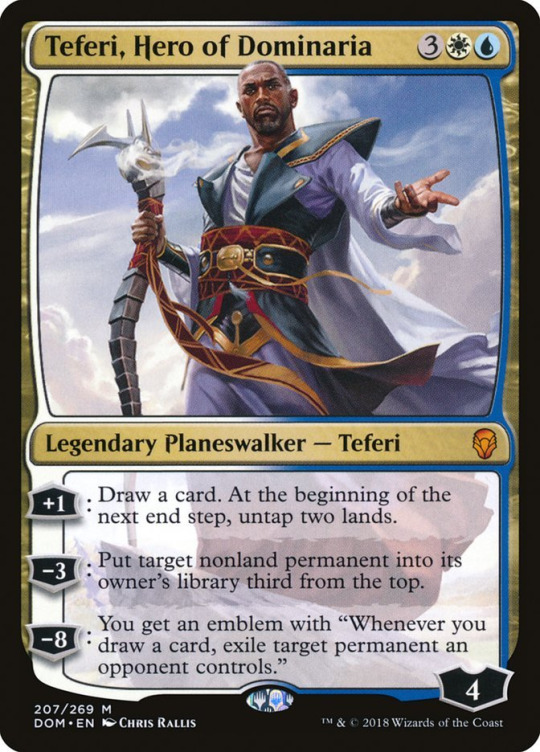
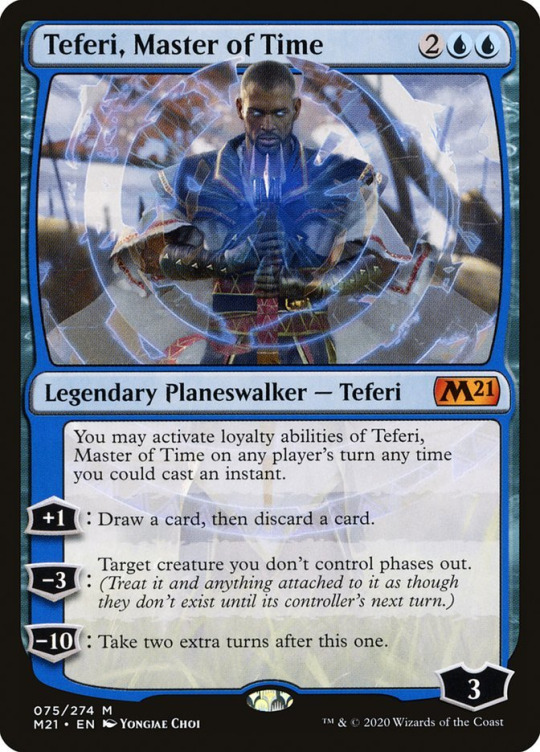
Meanwhile, someone like Kaya has both White AND Black as their center colors. I’ve also seen center colors referred to as focus colors but they are the same thing.
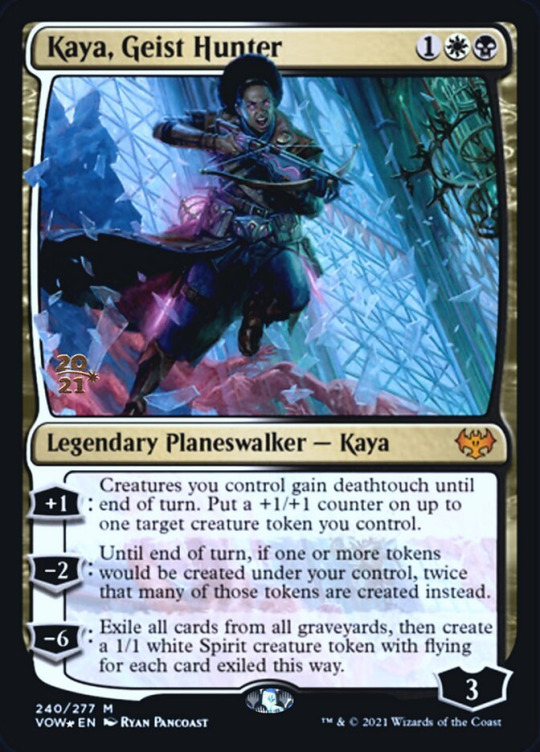
So what even is a center color? As mentioned earlier, multi-colored philosophies tend to be formed from what the colors that make them up agree on. However, when you assign a color as a center or focus you will have the philosophy in question lean towards that color more. The best way to explain is like this, you have a White-Blue character and their center is Blue. So they value Blue’s philosophical goal of perfection and being the best you one can be. However, the presence of White as a secondary color sort of alters how they believe that goal should be achieved. In this case, you end up having a character who tries to achieve Blue’s end goal through White’s means and way of thinking. Thus, you end up with a character who is somehow using White’s structure or morals in order to be the best they can be and try to improve the world around them. This presence of center and secondary colors adds a whole new layer of depth to color identity and can be used to better understand multicolored philosophies. As you can tell when it comes to center and secondary colors you can usually break them down into a formula of whatever the end goal of the color is + what they believe should be done to achieve it.
Now of course, like with most things regarding the Color Pie, there are a lot of nuances to be had. So I’m going to save more specific talks about what different center colors can mean when paired with other specific colors and how they can manifest at a later date. Things like center and secondary colors can have exceptions or manifest in wildly different ways.
Mechanics
Now of course I can’t claim to make a series that will cover how the Color Pie affects Magic the Gathering’s keywords and mechanics without discussing how the colors themselves influence the gameplay and game design of Magic.
Just like how each of the colors and their various combinations have their own strengths and weaknesses from a philosophical point of view they also have their own strengths and weaknesses in their respective gameplay. For example, Red is pretty good at damaging creatures, planeswalkers, players, and destroying artifacts but it usually has a really tough time when it comes to having any way to deal with enchantments. Meanwhile, Blue has counterspells to stop things from entering the battlefield, ways to bounce permanents, and to draw cards. However, it tends to be incredibly bad at destroying permanents once they are actually on the field.
It’s important to remember that there tends to be at least one exception to these mechanical rules I’m describing. Sometimes the design team just makes an honest mistake and gives a color something that messes with what’s supposed to be a color’s weakness(es).
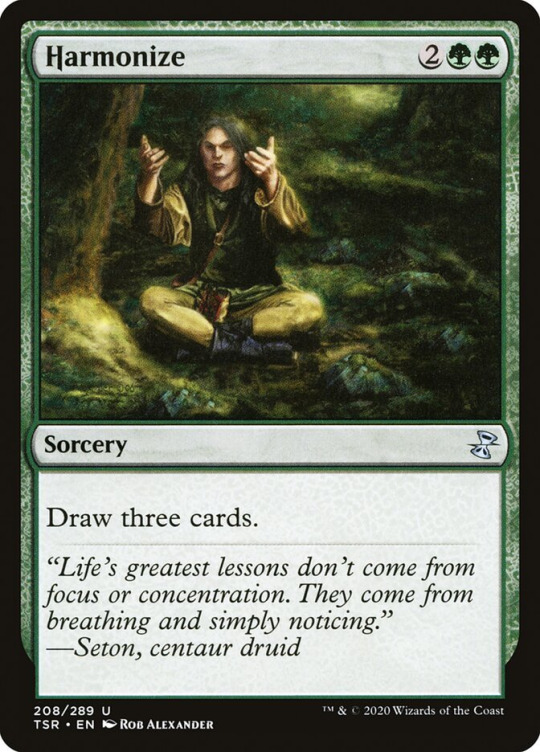
Sometimes the mechanical side of the Color Pie changes and what was once thought to make sense in a color for gameplay and/or philosophy based reasons gets changed, added, removed, etc.
One thing you should always remember, and I can’t state this enough, is that a color doing something it normally can’t isn’t automatically some sort of mistake or Color Pie break. Sometimes colors can do something but only on rare occasions, sometimes there are cards that let a color makeup for a weakness to some degree but at some sort of major cost or downside.
There are times where a set that a color is in has a theme that just ends up applying to all the other colors too. An example of this is Amonkhet’s or Innistrad’s respective heavy graveyard themes. In such sets colors outside of Black may also get more graveyard recursion than usual, in this case, it comes in the form of mechanics like Embalm, Eternalize, Flashback, and/or Disturb.
We’ll come back to Color Pie breaks and bends later. So let’s talk about mana and how it ties into the Color Pie and gameplay.
As you probably already know, in Magic there is a mana system. If you want to cast a Blue spell you need Blue mana, and you can’t just use Blue mana in order to cast a purely Red mana spell-like Shock.
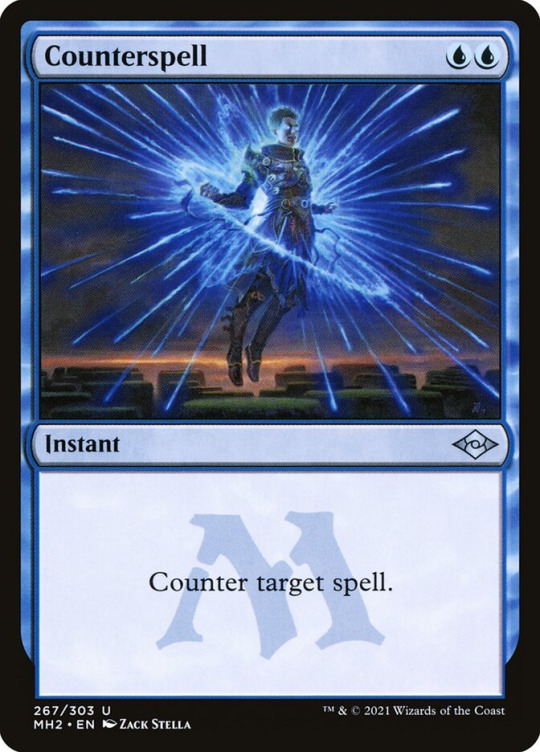
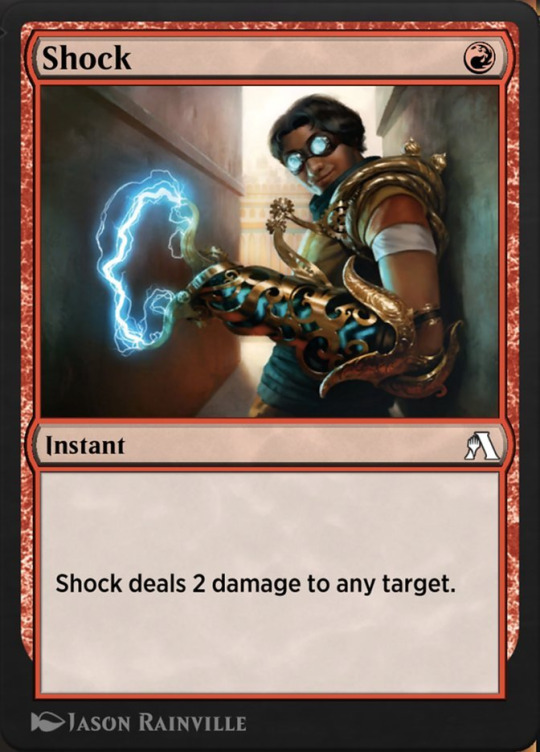
This mana system creates an interesting interaction where players must fight two competing forces within the game. One force is pushing you to play with cards and decks that have as many colors as possible. This is because every color has strengths and weaknesses and the more colors you have in your decks the more likely you will be able to compensate for, and overcome, the weaknesses of each color. You could do something like use Blue to make up for White’s lack of card draw, Red to make up for Blue’s lack of damage dealing, Black’s -1/-1 counters to help Red deal with indestructible creatures, White to help Red deal with enchantments, and so on and so forth.
However, this force comes into direct conflict with the mana system because the mana system actually pushes players in the exact opposite direction.

Since you can’t use the Red mana produced by your basic Mountains to pay for your exclusively Blue mana Opt and you are unable to spend Blue mana to cast you purely Green Gigantosaurus you are encouraged to stick to as few colors as possible in order to increase the possibility that you will have the proper mana needed to cast the spells you need at any given time.
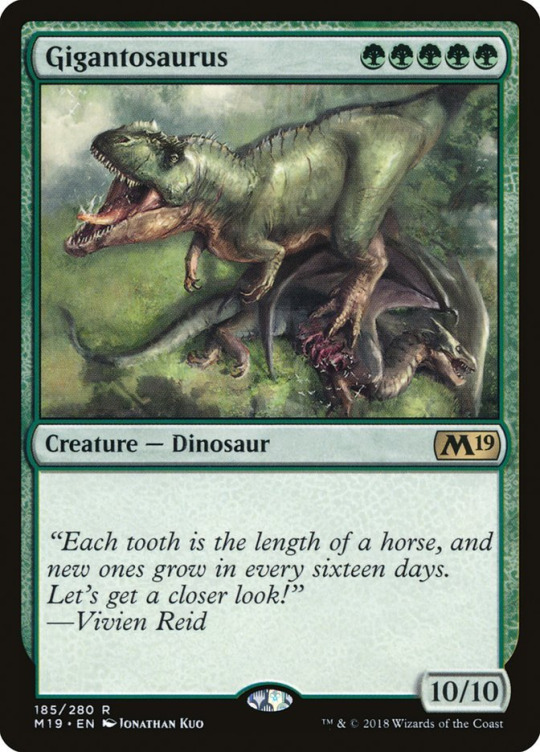
If you’re running a Mono-White deck you don’t have to worry about accidentally drawing a Mountain when you need an Island, but you give up having the presence of Red’s mechanical strengths in your deck and it may make any of White’s mechanical weaknesses in your deck that much more prominent. You are basically forced to choose between variety and consistency to varying degrees on various levels of gameplay. This helps prevent a gameplay situation where five-color decks are literally the only kind of deck worth playing in all forms of Magic until the end of time. These two opposing forces basically force(haha) the player to consider the strengths and weaknesses of each color while also deciding what is the most optimal way to make their deck consistent.
The colors also help give the players realistic expectations of how a match might play out the moment the first lands have been placed down. For example, If I’m playing against Billy and he puts a Mountain into play I now know Billy is playing Red and will likely have some form of direct damage. So I should be careful and play with those factors in mind or else I may end up being punished by having all my small and important creatures destroyed by direct damage. I should also be careful about letting my health drop too low because while a color such as White might not be able to finish me off unless it manages to deal damage with its Flying creatures, a color like Red can just damage me directly with a variety of different spells.
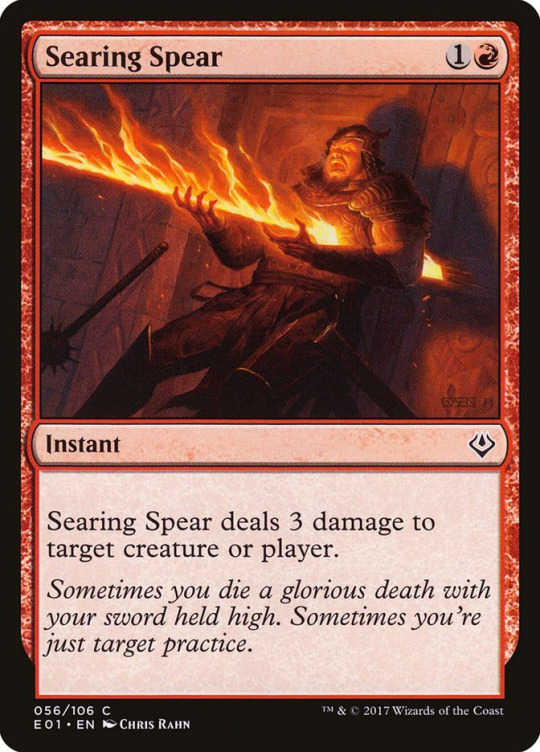
Now if Billy plays an Island I now know he’s playing Blue and that I have to watch out for counterspells. Maybe, I can trick Billy by playing a spell that seems to be important so that if he decides to counter it I can play the spell I actually need to win the game while all he’s out of resources.
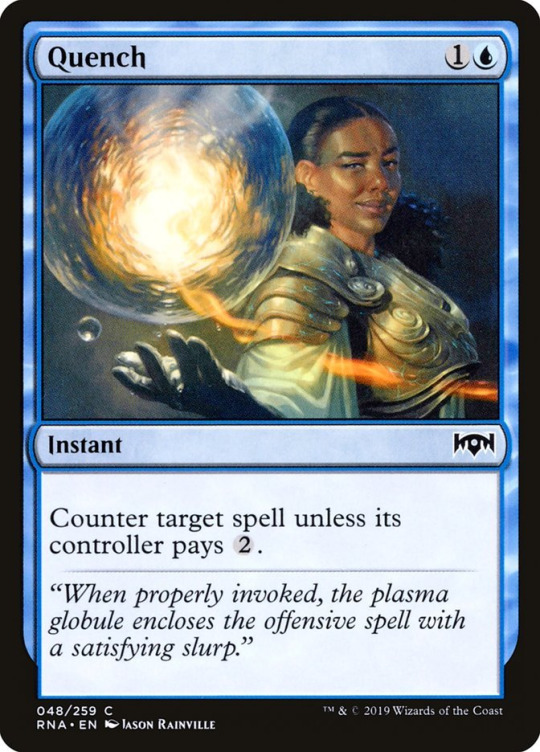
One of the things that Mark Rosewater points out is integral to game design is restrictions and limits. To a random passerby, saying something like this might come off as confusing but it actually makes a lot of sense. Let me put it this way, imagine if Magic the Gathering had no mana costs to consider, you could put any number of cards in your deck(no matter the format), all colors could do literally everything else the other colors could do with no downside, you could pick the exact cards that start in your hand, and had infinite health. Yeah, the game would fucking suck. It is very rare for a game that has no limitations to have any point in playing it. Yeah, I admit that the infinite health example might be a bit extreme. However, even without the infinite health, the version of Magic the Gathering I’ve described would literally play out the exact same every time. Most people would probably end up just running the same deck over and over with the exact same outcomes or they would probably just end up putting more interesting limitations themselves via the creation of new formats. In this way limitations actually breed creativity by forcing you to figure out interesting ways to achieve your goals(As mentioned in “Lesson #18: Restrictions breed creativity” in the “TWENTY YEARS, TWENTY LESSONS—PART 3” article).
Marro has also stated that “To design a good game, you need to understand why your target audience wants to play. And then you have to design your game to match that objective” and at the end of the day we all know Magic is a strategy card game. Part of the fun of Magic is that it’s kind of like a puzzle. It leads to moments like “Ok, I want to play these colors and what’s the best way to do that?,” “Ok, I want to play this specific card, how do I build a deck that supports it?,” or “Uh oh, My opponent played an enchantment that damages me every time I kill a creature, how do I play around it?”
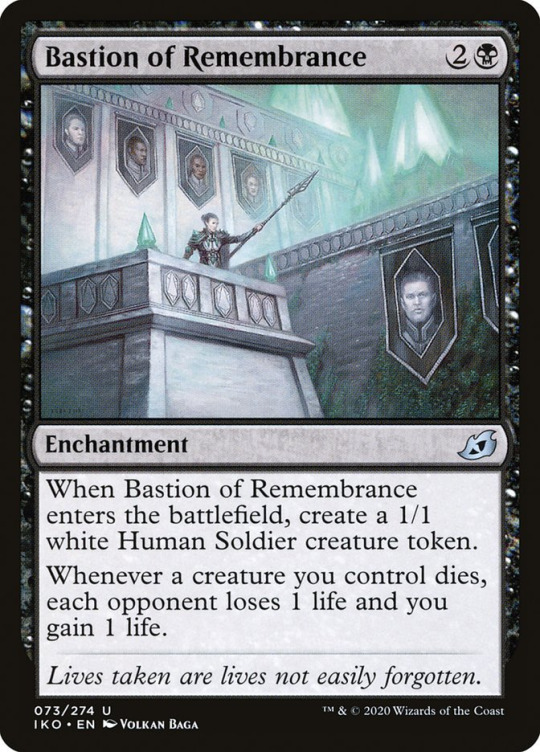
In that last example do you try to kill them before they can amass enough creatures to be a real threat? Do you focus on gaining enough life to counteract their effects? Do you build an army of fliers and try slipping past their creatures? So on and so forth.
Also, Mark does have a good point about the fact that limitations can create really fun stories regarding gameplay. I remember one time I was using my favorite historic Izzet deck and I just barely managed to win at like one health against a Mono-White life gain deck that had managed to get over 130 total life; it was just insane(I really wish I had recorded it. I’m sure almost everyone who has played Magic enough has at least one story where they barely managed to edge out a win in a spectacular fashion through a storm of luck and wits. Stories and experiences like this wouldn’t be possible without the limitations present in the general gameplay and the limitations put on each color.
Luck
I’m going to go off on a bit of a tangent away from just mechanics real quick. It’s something that I feel is important to the game and helps it in many ways and yet it isn’t talked about too often. That thing being luck.
Now, luck in games is a tricky thing. Most people don’t want a majority of their games to be purely luck-based. As that would remove any possibility of using one’s own skills to win and would make any game that isn’t the purest form of casual frustrating. At the same time, there are times where you do want to spice a game up with some luck because if you don’t do that then the game would literally play out the same way time and time again with no variation(which would get boring really fast and limit replay value). The proper ratio of luck to skill in design varies from game to game depending on its genre, mechanics, and goals but I would argue that luck does in fact help Magic as a game.
First of all, there’s the obvious fact that it prevents games from playing out the exact same way even if you or an opponent is running the same deck over and over. If people had complete control over something like their deck order or starting cards in hand then there’s a good chance that after a while any games involving that deck would play out in the exact same predictable fashion. Which would mean that the gameplay is more likely to get stale and/or you are more likely to get bored of your favorite decks.
I would also argue that luck can act as one of the previously mentioned limitations that can be ever so important to game design. It is an obstacle a player must overcome or workaround. In deckbuilding this takes the form of generally trying to make decks reach a certain level of consistency in their function and win condition by choosing the proper cards. It can also take the form of using the cards in your hand in the most ideal or strategically advantageous way, forcing the player to think of the different ways in which they can achieve their goals with different hands or situations. This also applies to facing the same opponent, since said opponents will not always cast the exact same spells, creatures, and various threats in the exact same order, if at all.
Luck is also something that helps even the playing field. It’s thanks to luck that even a five-dollar budget deck has at least a chance, even if it’s small, of beating a finely tuned and more efficient deck. Without luck, there would be very little reason in continuing to play through a game of Magic the second you realized the opponent had a more meta deck than you.
The luck system in Magic the Gathering is definitely not perfect though. We’ve all had that moment where, for some ungodly reason, you somehow mulligan three hands in a row with one land in it and games where you could have easily won if you just drew that one card that should be in your deck. The point of this isn’t to say that Magic the Gathering’s luck is ideal or perfect but I would argue that it helps the game.
#mtg#magic the gathering#color pie#color philosophy#Color Pie Philosophy#TheFlavorOfMagicTheGathering#douglysium#TheTasteOfMagicTheGathering
3 notes
·
View notes
Text
on the one hand, I hate the mtg philosophy color pie, and how much of a failure it is at being a satisfying-to-me representation/division of social imaginaries
on the other hand, I am quite happy with identifying as Jeskai; ~all the good parts of black and green are the ones you can find in red
one annoying thing about this though is that I've never found a Jeskai deck to be fun to play, nor do I like the visual aesthetic of their cards
#my calvinist pastor likes to read critical theory#for some reason#let me know if i'm using the phrase social imaginary incorrectly
8 notes
·
View notes
Text
I'm trying to understand green, and differentiate it from white. So green and white are both colors of peace and community, but their relationship to blue is different.
Blue is the color of progress, of never being satisfied, of an unending crusade of betterment.
White, as an ally of blue, takes a similar mindset, of "I want to change the world for the better." White wants to unite the world under its own banner of peace and law.
Green, meanwhile, opposes blue's obsession with progress. It's the color of tradition and preservation. Green is less concerned with changing the world. Instead it believes in protecting it from any force of control. It's also more concerned with local concerns than the entire world.
Did I get that right?
I wish more people used Magic the Gathering's Color Pie instead of D&D's alignment all of the time.
Like, saying a character embodies the selfishness and impulsivenes of Red Black offers more depth than Chaotic Evil
14K notes
·
View notes
Text
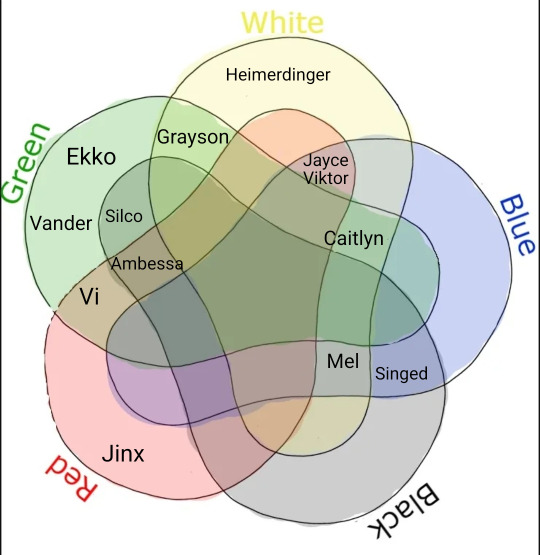
Arcane color philosophy
#arcane#character analysis#alignment chart#mtg color theory#mtg color pie#color philosophy#color pie
10 notes
·
View notes
Text
A similarity between green, red, and black on the color pie that I really appreciate, and that people often overlook, is an implicit trust in the self.
We see this most clearly in red and black, which center upon the self and personal needs or desires. Red is all about pursuing freedom, allowing yourself to feel your emotions, and acting upon them. To red, the opinions of others are a hindrance at best and a life-stealing prison at worst. Black is often about holding onto and prioritizing yourself, even when the world tries to force you not to. In extreme cases, it believes you are the only person you can trust in a cutthroat world that tries to bring you down. These are the two colors most often maligned in a society that favors the collective status quo over the needs of the individual, and conformity over diversity.
Green is often placed in opposition to these two "rebellious" colors as a preserver of the status quo. Almost every description of green philosophy includes some variation of the word "tradition" and an assumption that the color innately opposes change and progress. At worst it's characterized as a staunch traditionalist with a stagnant worldview who lashes out against progress of any kind, and sure, that can certainly be one extreme manifestation of green's flaws but it's by no means universal or inherent to the color.
Far more fundamental to green's philosophy is the idea that strength, power, and capability come foremost from within. It is, I'd argue, the core of green's worldview. Others' wisdom may guide you to unlock these things, and you can't separate your own power from that of the community around you, but it's still ultimately your job to discover what you are capable of. The path to victory is never walked alone, but only you can truly know yourself, in the end; only you can give yourself the strength you need to succeed.
And there lays green's unlikely overlap with red and black--its faith in the ultimate power of the self. (There are certainly other similarities, but this is an important one.) It's less evident in green because the "self" aspect of red and black is so often defined in opposition to others, while green is far more community-minded, but an underlying fierce faith in self-knowledge remains.
White and blue believe that true direction comes from beyond the self, whether that's from established morals or empirical research. Meanwhile, green, red, and black all insist that you are enough already; you alone know yourself, your needs, and your capabilities best. Embrace it.
#preview on my color pie thoughts before i put out the black mana essay#mtg#magic the gathering#red#green#black#jund#color pie#vorthos#green mana#black mana
106 notes
·
View notes
Note
I've said it before and I'll say it again: the color philosophy in Magic is so much deeper than a game system has any right to be. Forget MBTI and Zodiac signs - I wanna know your MTG color alignment!
There is no greater fan of the color pie than me. If you didn’t see, I started a new series in my column called “My Words” where each color gets to explain its own philosophy. I began with white:
88 notes
·
View notes